.png)

Free shipping within Nepal with orders above Rs 10,000

BAGPACKS FOR YOU NEXT ADVENTURE
Shop by brands.

TOP PICKS

Treeline Jacket Mens

Mens Vision Down Parka

Sherpa Mask SAG04

Black Diamond Trucker Hats BD1

Luci Inflatable Solar Light
Connect with us.

STEAL THE DEAL

Suunto Core Regular Black

Suunto Core Black Red

Suunto Core Black Yellow

Suunto 9 Gen1 Baro Titanium Ambassador Edition

Suunto 9 Gen1 Baro Black

Suunto 7 Black

Suunto 5 All Black

Womens Rab Vital Windshell Hoody

Mens Flashpoint Rain Jacket

Rab Mens SuperFlux Hoody

Rab Vapour Rise VR Alpine Jacket

Rab Mens Salvo Jacket

Altus Jacket

Quest Pull On

Rab Alpha Flux Jacket

Alpha Flash Jacket

Rab Nucleus Jacket

Mens Firewall Rain Jacket

Mens Microlight Down Jacket

Mens Cirrus Flex Hoody

Mens Vital Windshell Hoody

Mens Vital Windshell Jacket

Daylite Plus 20 L
Quick access.
Shop Online and Pick it up IN-STORE
FREE NEXT DAY DELIVERY WITHIN KTM
*On orders above Rs. 10,000/-
NEW ARRIVALS

TXS Gtx Hiking Shoes

Pursuit Shock Trekking Poles

Pursuit Trekking Poles

Moji+ Lantern

Distance 1500 Headlamp

Spot 400-R Headlamp

Storm 500-R Rechargeable Headlamp

Eddy Lifestraw Camelbak 1L Bottle

Flexible Drink Bottle 750ml

Treeline Sleeping Bag (-3c)
Shop by categories.
To play, press and hold the enter key. To stop, release the enter key.

Camp Furniture

Camp Kitchen

Caps & Headwear

Climbing Equipments

Headlamps & Lanterns

Personal Care
Knives & multitool, sleep system, solar panels & power bank, trekking poles.

Water Bottles & Filters

Compass & Binouculars
Watches & wearables.

Mens Shorts

Mens Rain Jacket
Mens synthetic jacket, mens fleece jacket, mens underwear, mens wind shells.

Thermal Bottom
Mens down jacket.

Thermal Top

Womens Rain Jacket

Womens Pant

Womens Fleece Jacket

Womens Wind Shell

Womens Synthetic Jacket

Womens Thermal Top

Womens Thermal Bottom


- Travel Guide & Tips
Trekking Gear Shops in Nepal - A Complete Guidebook
- Modified on May 22, 2024
Nepal , officially known as the Federal Democratic Republic is a landlocked country mainly stationed in the Himalayas, with a diverse geography consisting of parts of the plains, steamy jungles, and gigantic Himalayan ranges. Among the few territories globally, Nepal is one of the most magnificent solo or company travel destinations. But conquering these majestic peaks and treks demands the use of proper gear and types of equipment. Luckily, Nepal has a booming industry of gear brands to aid in a successful trekking experience. You can find a wide range of trekking gear shops, and expedition rental shops in Nepal to help you find the right equipment for your next trek.
In this guide, we will dive into some of the leading Nepali trekking clothes and gear brands (Everest Outfit, Doplo Gears, Nims Outdoors, Wild Yak Gear, Sonam Gear, Sherpa Adventure Gear, alongside established international names (Mountain Hardwear, and Nims Dai), exploring their history, signature products, and why they deserve a special spot in your backpack.
Table of Content
Trekking gear hub.
Before diving into specific brands, knowing where to find them is important. Thamel in Kathmandu is known as the central hub for trekking shops in Nepal . You will find a plethora of shops supplying all the necessary equipment. Whether you are looking for cheap trekking gear in Nepal to high-performance gear for high-altitude treks , trekking shops in Thamel are the pie-in-the-sky.
Established International Label
Mountain hardwear.
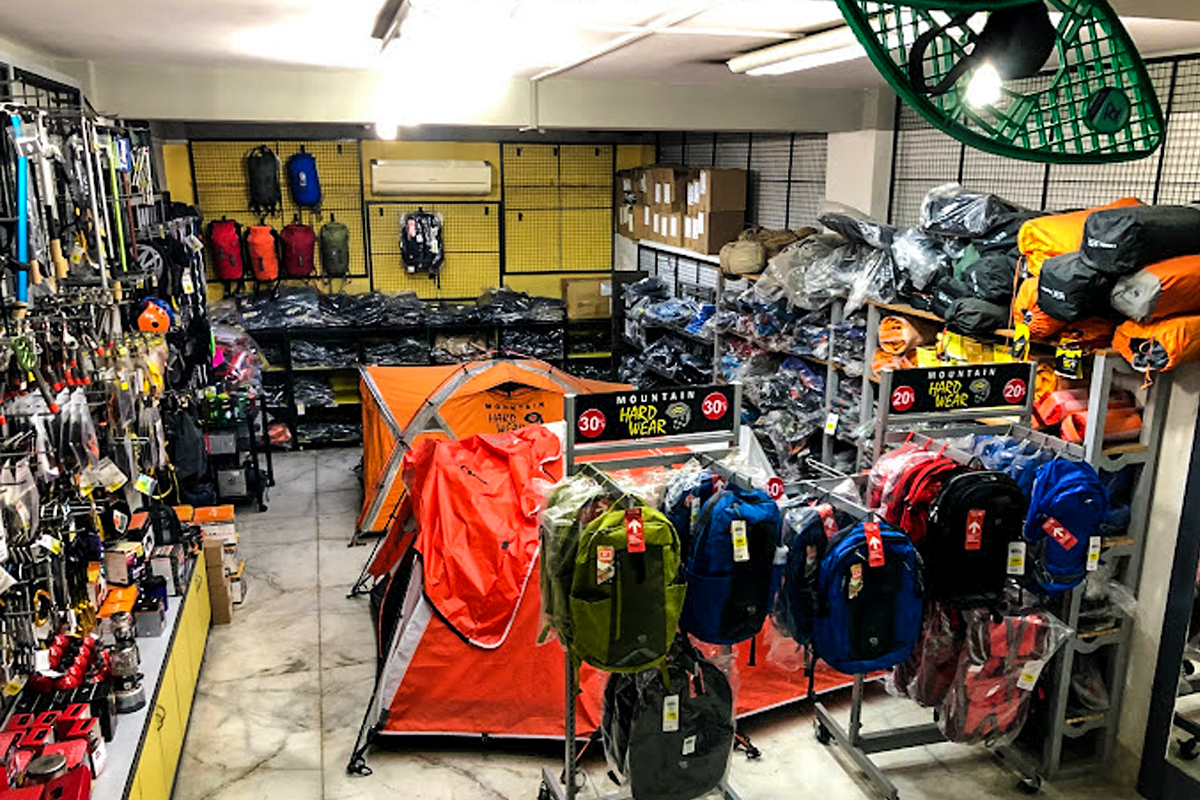
Mountain Hardwear is an international giant carrying a strong proximity to Nepal’s trekking scene . Founded in 1993, the franchise of Mountain Hardwear in Nepal is located at Tridevi Sadak in Thamel which supplies all the reliable gear to trekkers for any Himalayan escapades. It is famous for its durable and ground-breaking gears , designed for challenging trekking terrains and its comprehensive selection of equipment caters to all sorts of exploration from Everest base camp trek in Nepal to Mt. Elbrus in Russia.
Why choose Mountain Hardwear in Nepal?
- Mountain Hardwear gear is constructed to shield you against the severe Himalayan weather in Nepal. They put their products through tough testing to make sure that they can endure it all.
- MHW covers a wide range of variety in trekking gear . From light backpacks to tents, casual trekking joggers to snow-proof fits, sleeping bags, and other expedition ensembles.
- The top priority of Mountain Hardwear is durable trekking gear . The construction of these high-quality materials lasts for years to come. MHW is a reliable brand for trekking essentials in Nepal , ensuring trekkers are protected on any terrain.
- Monsoon season treks in Nepal are one of the most popular treks so keeping that in sight, MHW builds waterproof hiking boots , waterproof jackets, and other varieties with special features for a comfortable trek.
- MHW serves trekkers of all experience levels and altitudes in Nepal- whether you are planning for low-altitude treks like Annapurna base camp, Ghorepani-Poonhill trek , Mardi Himal trek , etc, or high-altitude expeditions like Everest, Kanchenjunga, Ama-Dablam , Manaslu or any peak climbings . They manufacture lightweight options for lower-elevation treks, as well as insulated gear for Himalayan expeditions.
- Nims Dai Store
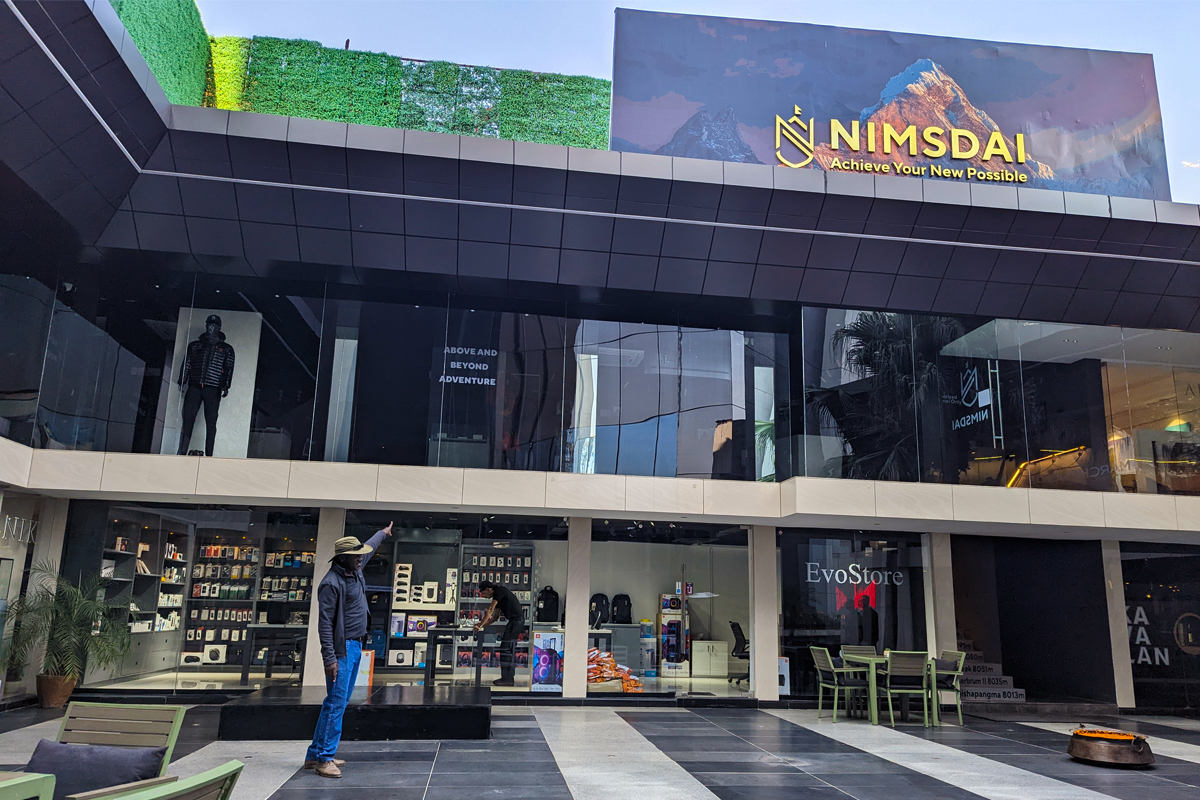
Nims Dai Store is a brand built on experience in 2020 by the groundbreaking record holder Nirmal Purja. Named after him, the brand caters to trekkers and mountaineers with high-performance gear. This Nepali clothing brand focuses on technical equipment for serious mountaineering and expedition gear in Nepal and throughout the globe. Nirmal Purja, the first person to summit all 14 eight-thousanders in a record-breaking timeframe, understands the importance of high-function gear for serious expeditions.
They manufacture heavy-duty backpacks to carry supplies for weeks along with four-season tents that withstand the rigors of the mountains in Nepal. Specialized climbing equipment like ice axes and crampons are engineered for conquering the world's most challenging terrain and are also the products of the Nims Dai store tested by the best mountaineers in Nepal.
Nims Dai apparels are not just for elite mountaineers but they manufacture a wide range of trekking apparel. The expedition gears can be used for any kind of mountain adventure including the Everest and Kilimanjaro expeditions , trekking to the Annapurna base camp , or navigating through the Manaslu circuit in style and comfort.
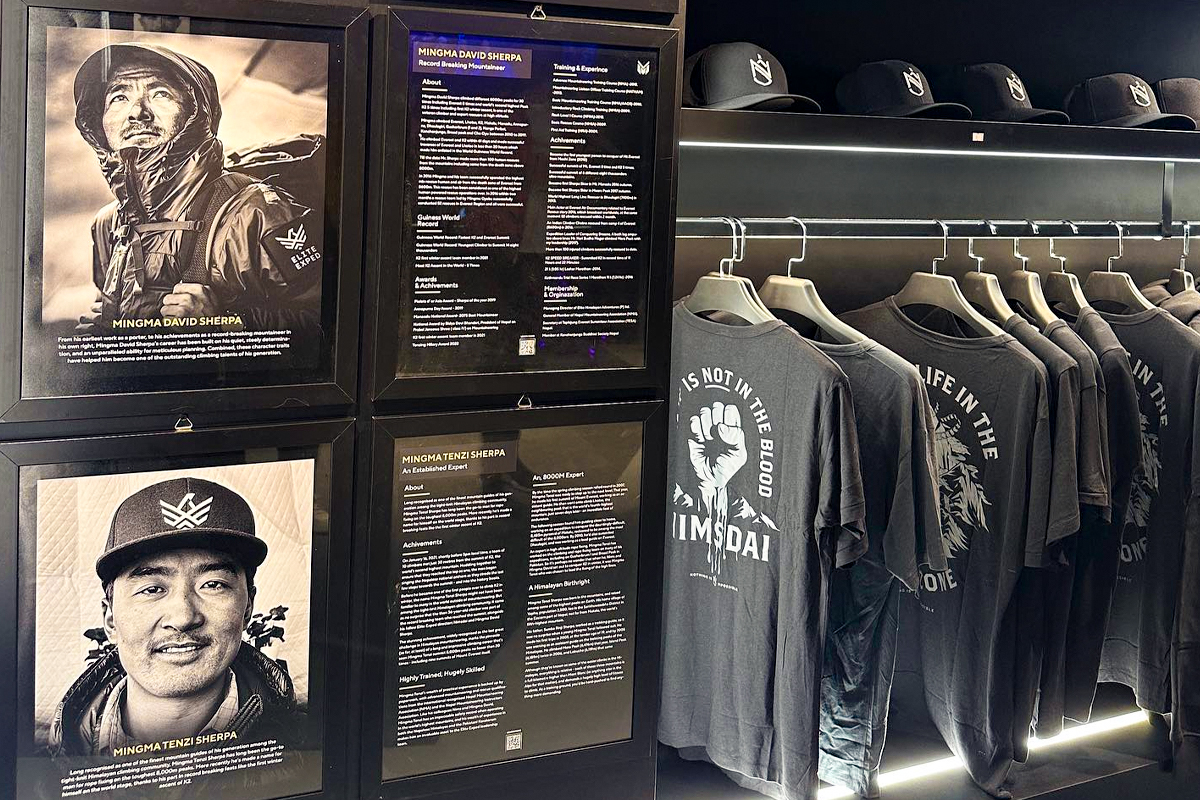
Showroom shopping:
- Manakamana Marg
- Paryatan Marg, Thamel
Online Convenience:
Nims Dai store is a high-end trekking and expedition gear brand in Nepal. The store contributes 5% of its entire sales to its own Nims dai charitable project named “ Project Possible ” for Big Mountain Clean Up and Lobuche Porters Lodge.
Walk the Himalayas in Nepali Style: Top Local Trekking Brands
Now, let's explore the unique offerings of some of Nepal's homegrown brands:
Everest Outfits
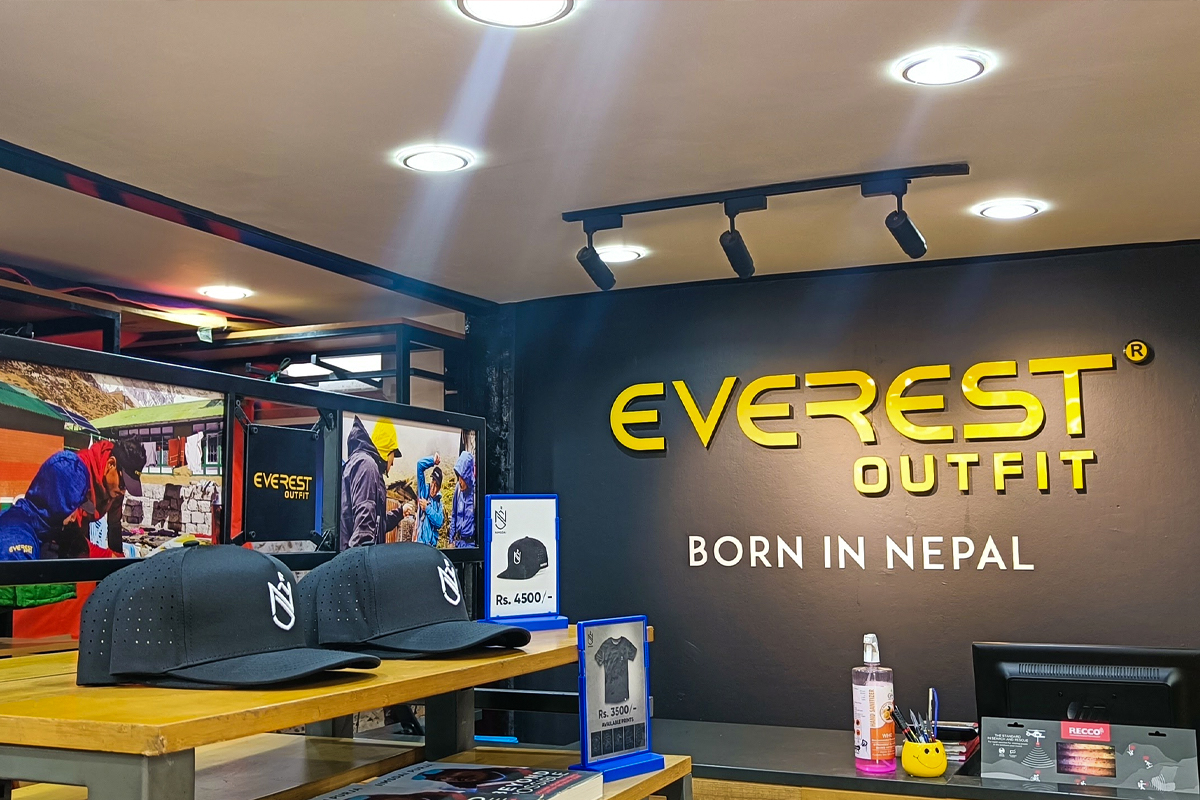
Everest Outfit, a renowned Nepali clothing brand is the gateway to unforgettable experiences in the majestic Himalayas. Internationally certified IFMGA guides , Tenzing Jongtay and Passang Dorje co-founded Everest outfit with a simple yet powerful mission: to make high-quality mountaineering apparel accessible to everyone.
Trekking and exploring the world shouldn't necessarily break the bank. Everest Outfit has a cost-effective alternative to high-end brands, utilizing durable materials and innovative designs outstandingly for rugged terrain and extreme climates. The designers at Everest Outfits ensure that the gears provide safety and success during any treks or expeditions without compromising on quality. In a world of mass-produced supplies, Everest outfits produce customized summit suits to fulfill any personal need of the climbers. The brand caters to a plethora of outdoor enthusiasts with its reliable products that include:
- Expedition Gear: For those tackling the world's highest peaks, the Everest outfit has heavy-duty down suits, expedition-grade parkas, 8000m expedition gear , and other specialized equipment designed to tackle any weather condition.
- Technical Mountaineering Apparel : Waterproof/breathable shells, insulated jackets, and Himalayan trekking clothes designed for warmth, comfort, and performance on any mountain adventure.
- Lightweight Trekking Gear : Quick-drying shirts and pants, sun protection clothing, and comfortable backpacks perfect for exploring Nepal's diverse landscapes.
- Activewear and Casual Wear : Not just for mountain adventures, Everest Outfit has included a stylish line of activewear and casual clothing suitable for everyday use.
Everest Outfit is a proud Nepali company . by choosing their products, you're encouraging Nepal's economy and empowering the Nepali community. they ensure their workforce receives fair wages and works in safe conditions.
Here are some examples of the variety of clothing that Everest Outfit possesses:
- Men's Wear : parka jackets, insulated jackets, fleece sweaters, t-shirts, shorts, pants
- Women's Wear: Jackets, sweaters, t-shirts, leggings, shorts
- Kid's Wear : t-shirts, onesies, jackets
- Accessories : Fanny packs, beanies, gloves, goggles
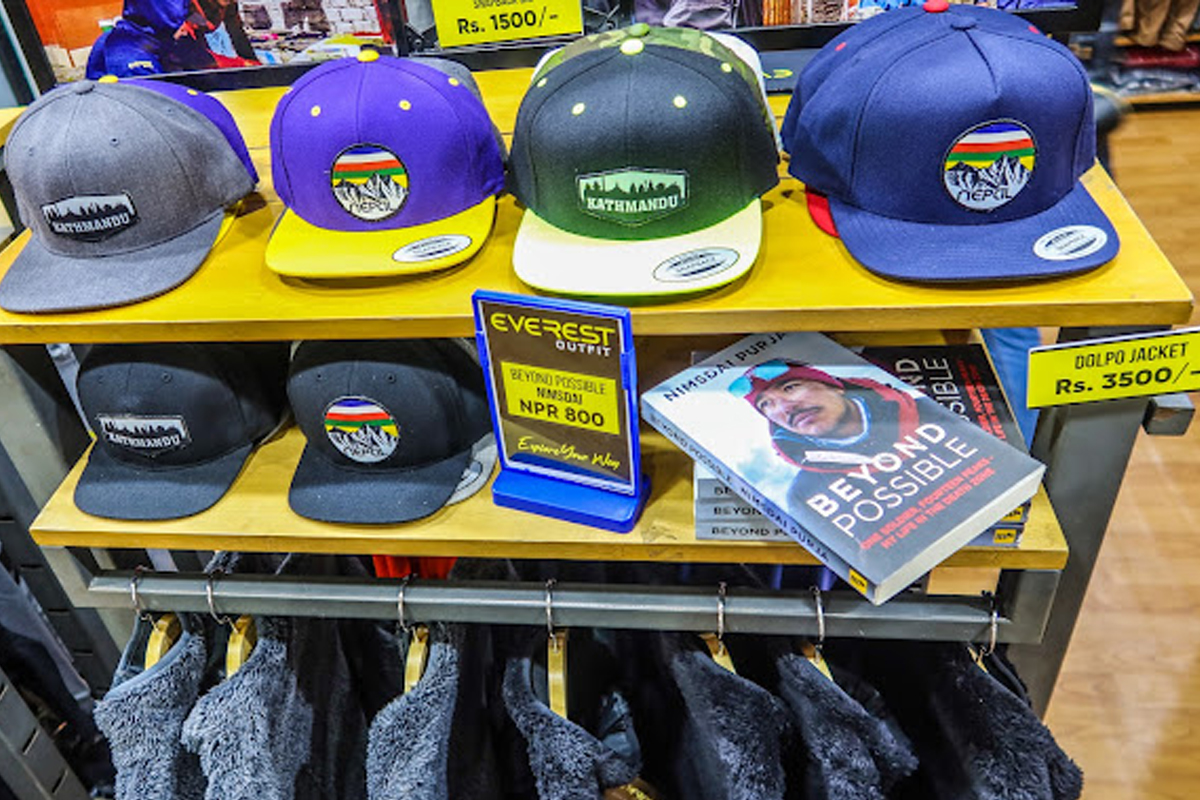
Showroom Shopping:
- Bhagwan Bahal, Thamel Kathmandu, Nepal
Online Convenience
- Everest Outfit
Lukla Outdoors
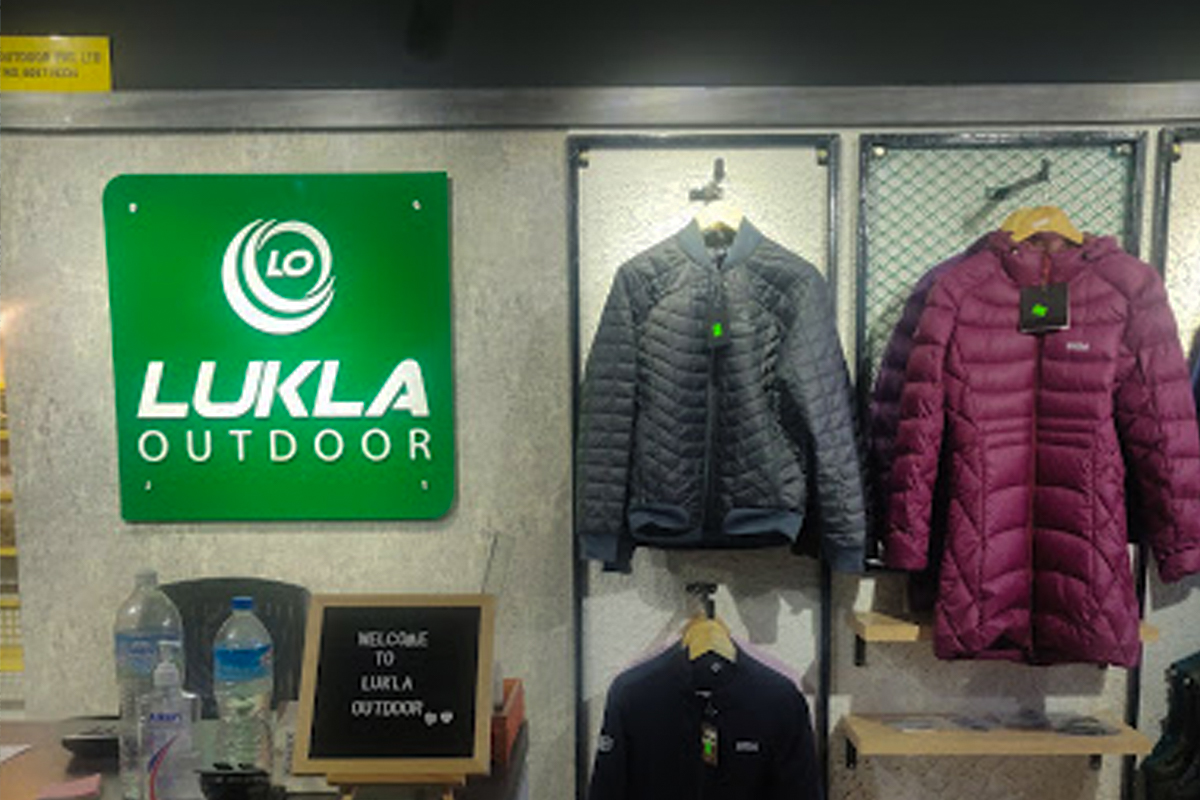
Established in September 2019- Lukla Outdoors is a trekking and fashion clothing brand in Lukla , Nepal. Four passionate women initiated the project to set down Nepal-made trekking gear and outdoor products on the chart of adventure worldwide. Lukla Outdoor is famous for providing durable and high-quality outfits to hikers, and trekkers. The store possesses outdoor apparel together with other trekking essentials like masks, down jackets, and much more. Lukla Outdoors has paved a road in the trekking industry by catering to trekkers and hikers seeking dependable gear that goes the distance.
Lukla Outdoors first started spreading its magic in the trekker's paradise, Lukla. They've now expanded to Kathmandu - Nepal's capital, setting up stores for a wider audience. Their vision for the future is ambitious – establishing a franchise network and supplying their meticulously crafted gears and equipment throughout Nepal.
Lukla Outdoors doesn’t compromise on quality. The gear manufactured by Lukla Outdoors has been crafted diligently by the local artisans of Nepal. It is a trusted brand for expeditions so you can be confident that the outfit you buy will cover your rigorous adventures in Nepal or anywhere across the world.
Everything aside, Lukla Outdoors has embraced the legacy of Nepal. The effort and dedication of the Nepali artisans to creating durable and reliable trekking equipment is a testament and a cornerstone of Nepal's rich tradition of outdoor gear manufacturing. By purchasing their products you will get your hands on high-quality outdoor apparel while supporting the locals wanting to share their passion for outdoor adventure with the world.
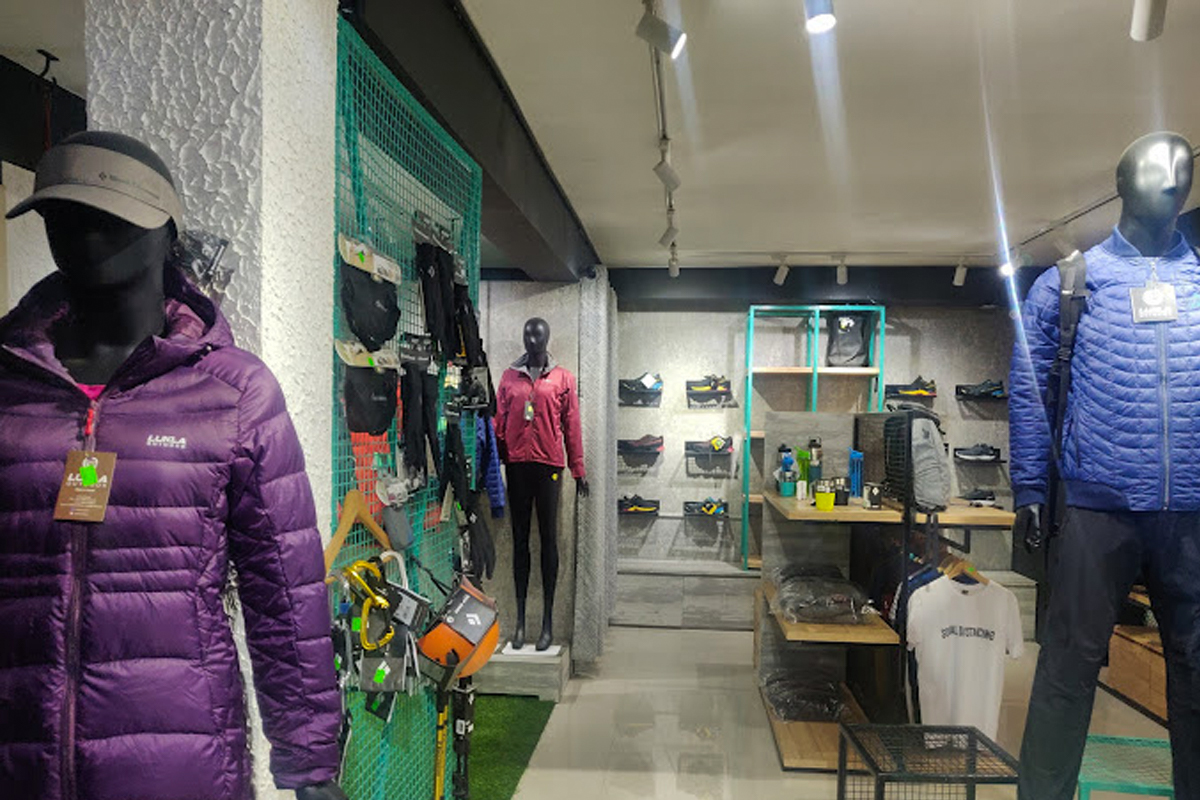
Showroom Shopping
- Chaksibari Road, Kathmandu 44600
- Lukla - Everest Base Camp Trekking Route 30, Chaurikharka 56000
- Lukla Outdoors- Instagram
- Dolpo Gears
.jpg)
The scream of the wild calls us all, but expensive trekking gear can often silence our dreams. Here's when Dolpo Gear steps in, working for the belief that adventure shouldn't be an exclusive privilege. So with the mission of providing top-notch travel gear at budget-friendly prices , in 2004, the idea of Dolpo Gear started. The hype of this Home-grown trekking brand in Nepal began when the rebranding happened in 2020.
Dolpo Gear is a label that doesn’t compromise on quality. Their durable backpacks are manufactured to deal with any weather condition and adventure, while their cozy jackets ensure warmth and comfort across changing climates. Every detail, from stitch to seam, is meticulously designed for long-lasting performance , trip after trip.
The value should come at something other than the cost of functionality. The Dolpo Gear team understands that your gear needs to go hand in hand with your ambition. Their breathable clothing soaks up moisture, keeping you cool and dry during any adventure that you partake in. Their ergonomic backpacks prioritize comfort, to ensure the load doesn't weigh you down on the trails.
Together with comfort, Dolpo Gear believes that everyone deserves quality without burning a hole in your wallet and financial limitations shouldn't restrict your exploration. Their affordable equipment helps you find your first-ever trekking gear at a comfortable price and make your journey unforgettable.
Here, you can find a variety of trekking gear for your next adventure:
- Jackets : Down/Superdown, Fleece, Windcheater, Silicon
- Tops : T-shirts, Thermals
- Bottoms : Trekking Pants, Fleece, Shorts, Accessories, Beanies/Caps, Gloves, Sunglasses, Rainwear
Dolpo Gear's commitment to affordability extends far beyond price tags. They're passionate about creating an inclusive outdoor community, welcoming adventurers of all backgrounds and experience levels. The world is your oyster, and Dolpo Gear is here to ensure you explore it in style, without breaking the bank.
Showroom Shopping
- Amrit Marg Thamel Kathmandu 44600
Online Convenience
Sonam Gears
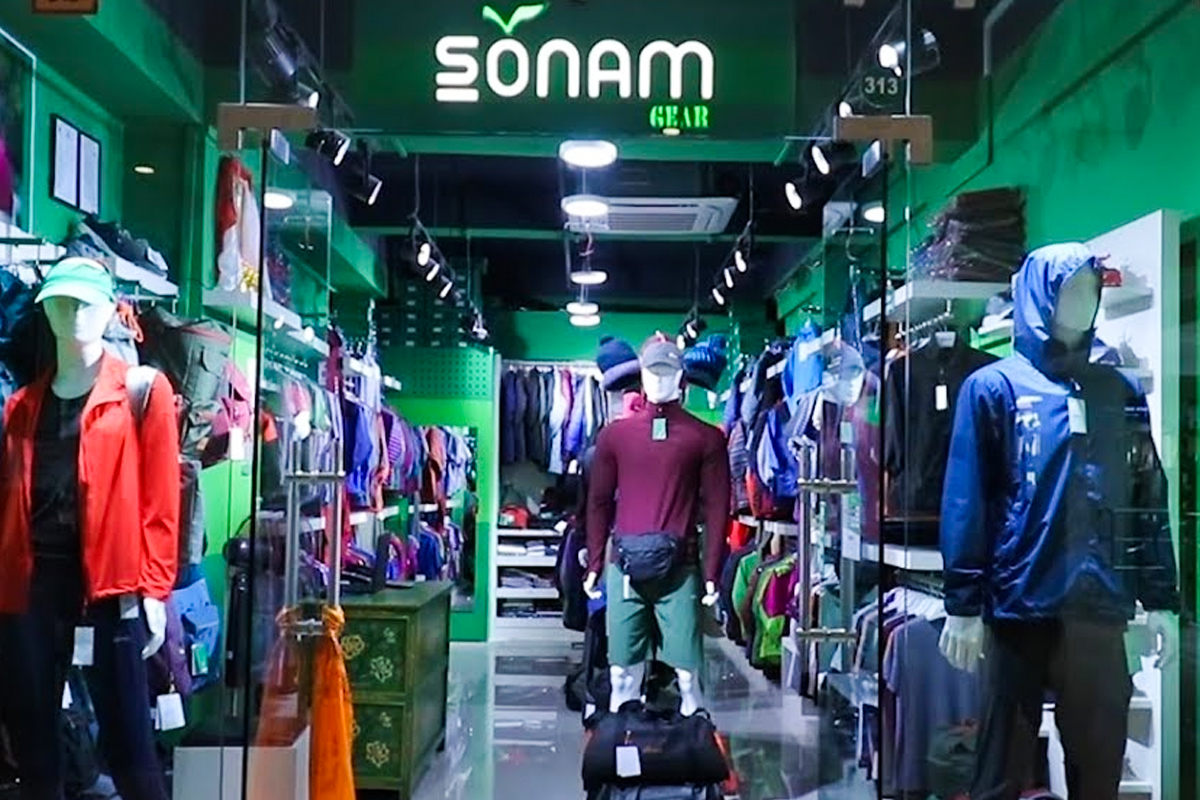
The unforgiving mountains of Nepal demand the best trekking gear. Sonam Gears uses premium, long-lasting materials particularly chosen for Nepal’s diverse weather conditions, promising maximum comfort and safety for any kind of adventure.
Are you trekking to the Annapurna Circuit or going for a quick hike? Sonam Gears has you covered.
They offer a comprehensive range of products, including:
- Men's Apparel : From technical trekking shirts and pants to performance jackets and cozy fleece.
- Women's Apparel : Their collection features trekking apparel , activewear , and stylish casual wear .
- Kid's Wear : Durable and comfortable clothing for their next exploration.
- Fitness Apparel : Fitness wear , perfect for hitting the gym or jogging through Kathmandu's streets.
- Casual Wear : They also offer a stylish collection of casual wear for everyday life.
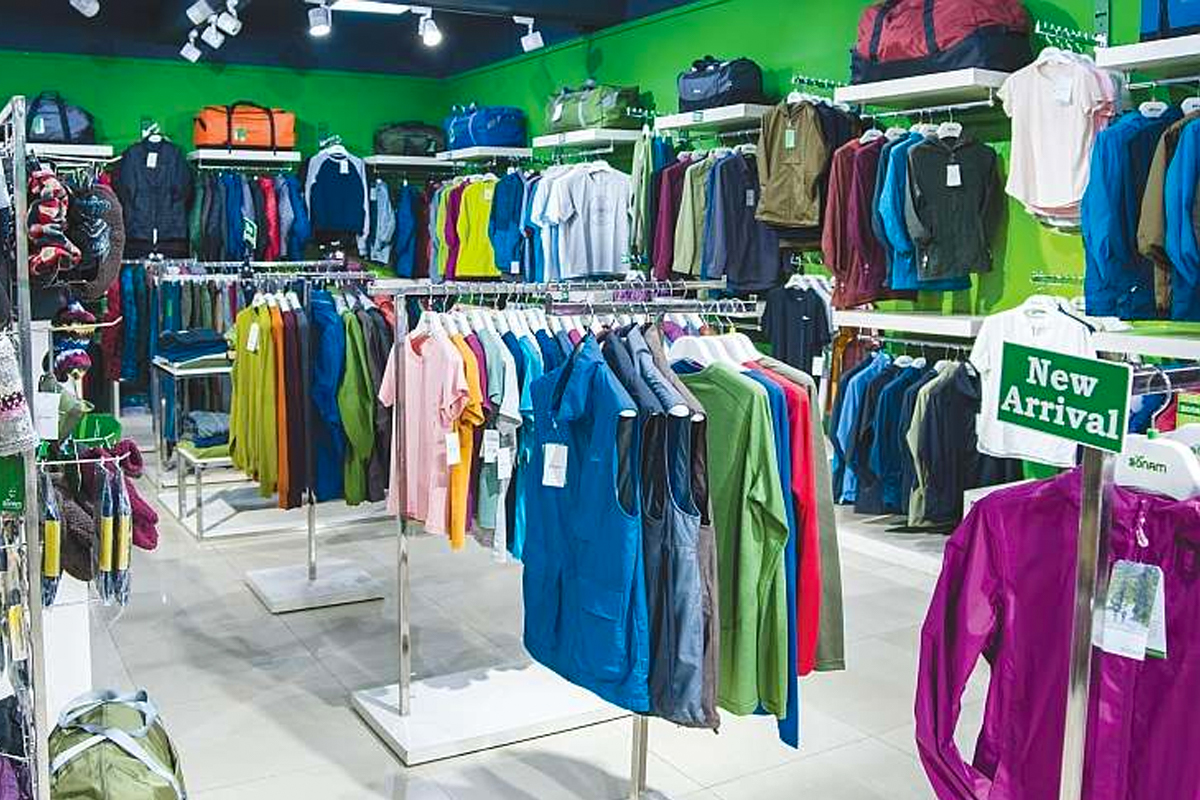
- Thamel marg
- Shree Panchakumari Marg, Baneswor
Online convenience
- Sonam gears
Wild Yak Gears
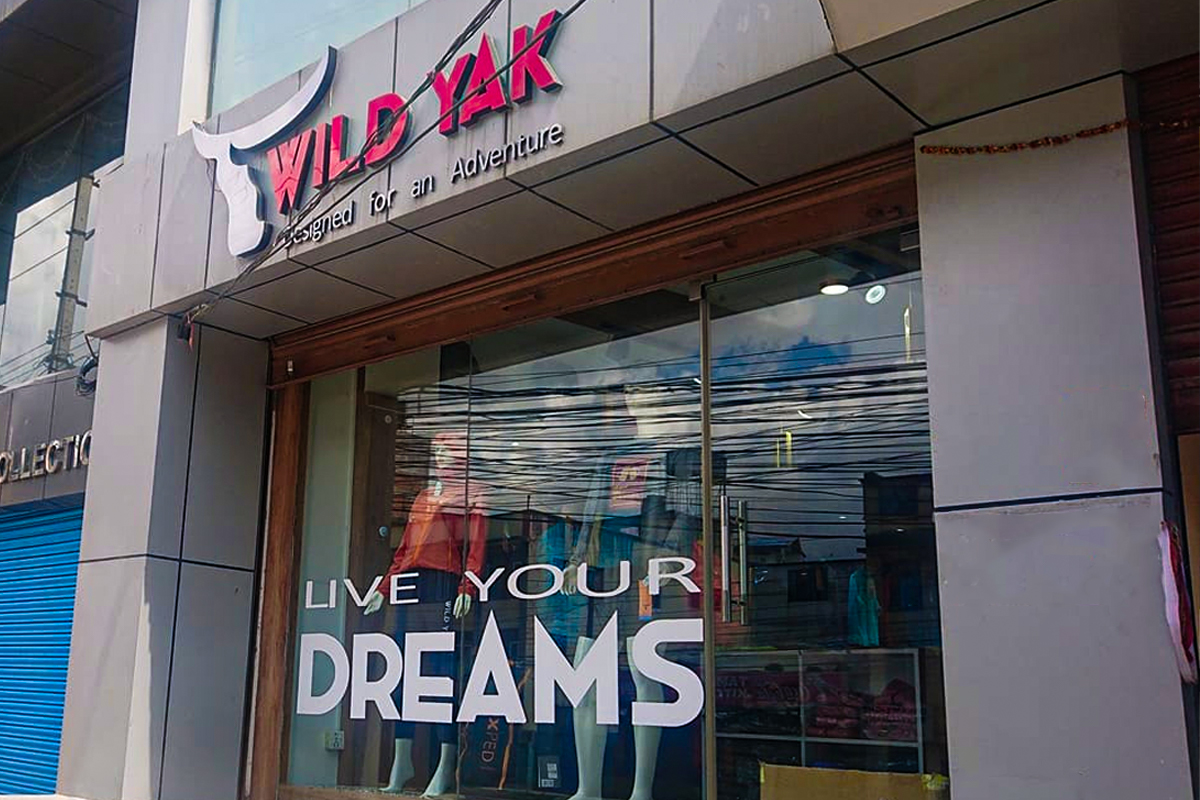
Wildyak, another leading name in Nepal's outdoor gear scene is a blend of modern innovation with traditional craftsmanship. Despite being functional, their collection is also stylish and favors eco-conscious adventurers. They prioritize sustainable and recycled materials in the clothes they manufacture. The technical fabrics keep you dry and comfortable by regulating the temperature during your adventures. Wild yak gear uses merino wool and synthetic fabrics to resist natural odor and ensures quick dry time.
Wild yak gear is specially designed and manufactured for outdoor activities. So that means you can expect their products to be reliable, water resistant, and breathable for your comfort during any trek or expedition. They use cutting-edge technology and produce fitted lightweight clothing so you feel good about yourself on your adventures allowing freedom of movement.
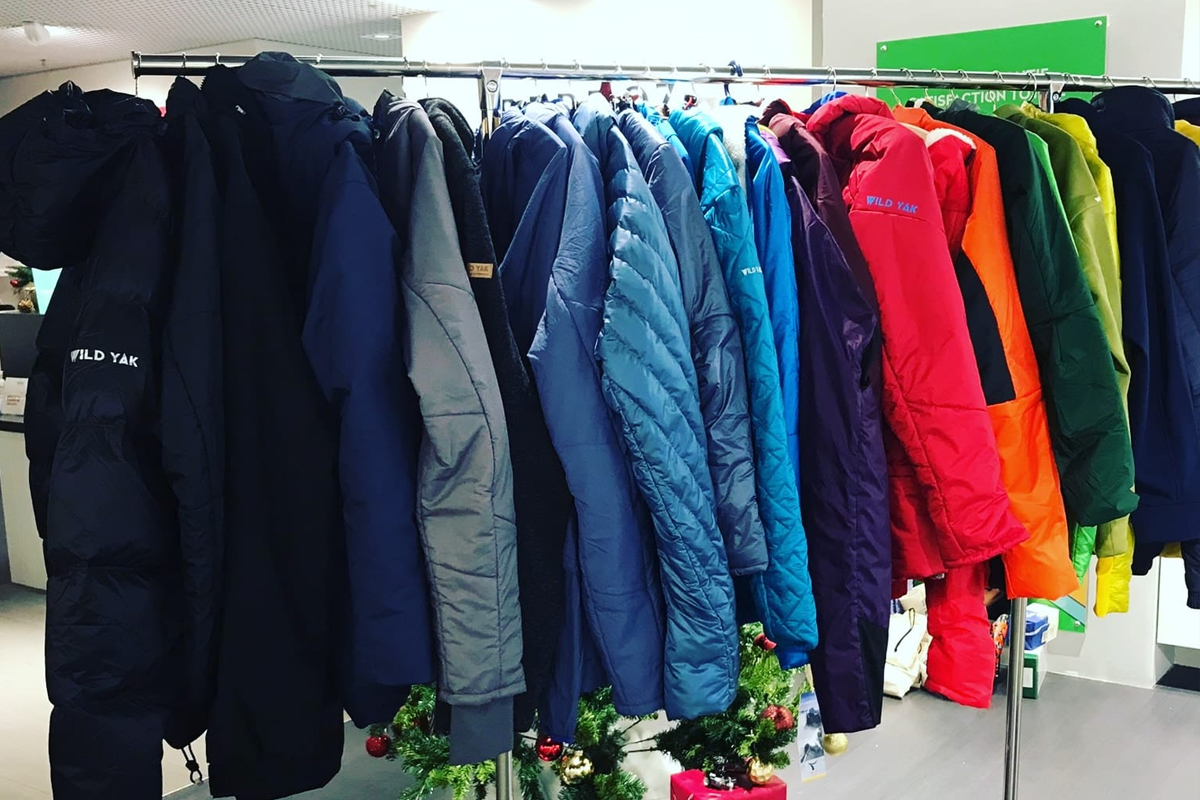
Looking to snag some Wild Yak Gear for yourself? Here are your options:
Showroom Shopping :
- Boudha-Tusal Showroom , Thamel Showroom
Online Convenience :
Sherpa Adventure Gear
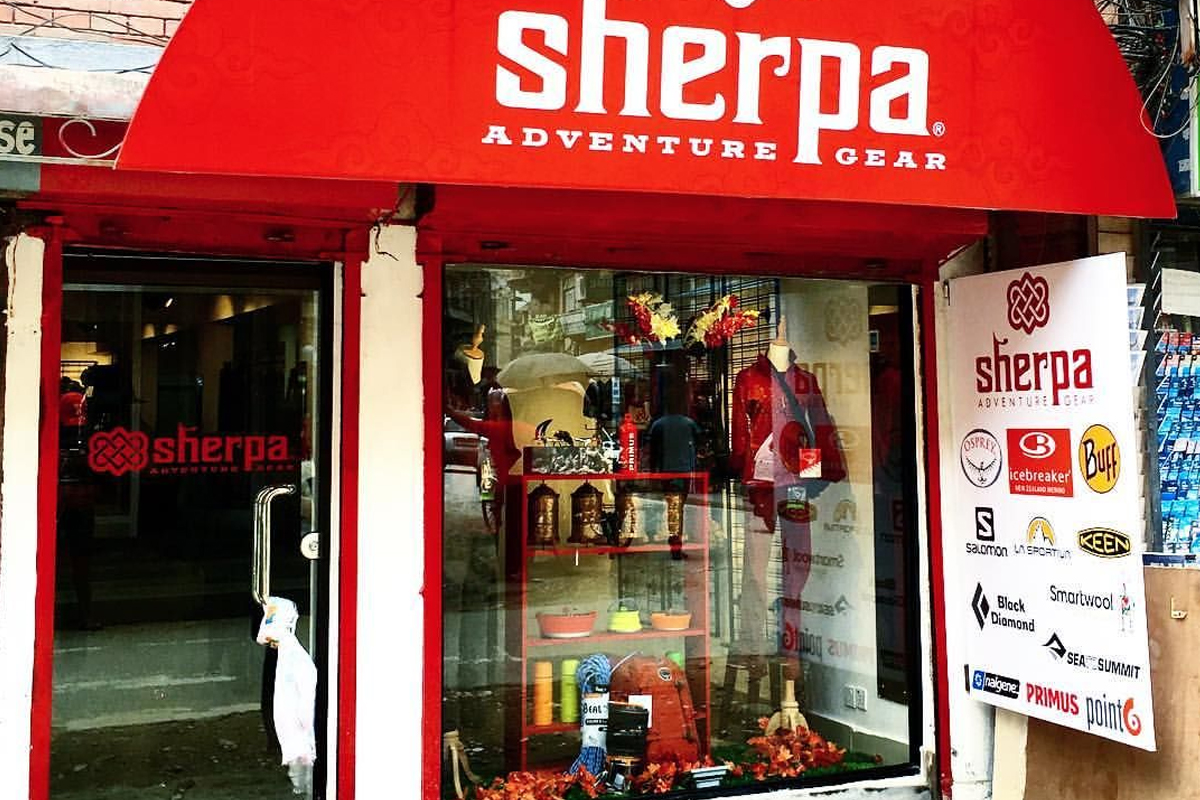
Sherpa Adventure Gear is a company with a goal that goes beyond imagination. Apart from providing quality products to the audience, this venture believes in empowering and giving back to the community. Born from the lap of the Himalayas, Sherpa Adventure Gear proudly proclaims its commitment to bringing positive change with sustainability. Sherpa gear is made with responsible practices and high-quality materials- making you feel good about yourself and also making you a part of the good deed.
The Sherpa Adventure Gear website offers a glimpse into the world they represent. Look for their "We Are Sherpa" page to learn more about the rich heritage and culture that inspires their clothing which includes:
- Coats & Jackets
- Midlayers & Fleece
- Tops & Tees
- Pants & Leggings
- Skirts & Skorts
ACCESSORIES
- Hats & Headbands
SUSTAINABILITY
- Merino Wool
- Recycled Polyester
- Tencel & Modal
- Handcrafted
- Organic Cotton
Sherpa Adventure Gear goes a step further by contributing to its mission of supporting education for girls and boys in Nepal. You are scaling new heights, quite literally, knowing you're helping to create opportunities for the next generation through your contribution. Sherpa Adventure Gear offers a range of apparel designed for the outdoor adventurer. Whether you're trekking through the terrains or hiking locally, their versatile trekking outfits keep you moving.
- Next to Nepal Investment Mega Bank, Chaksibari
- Sherpa Adventure Gear- Instagram
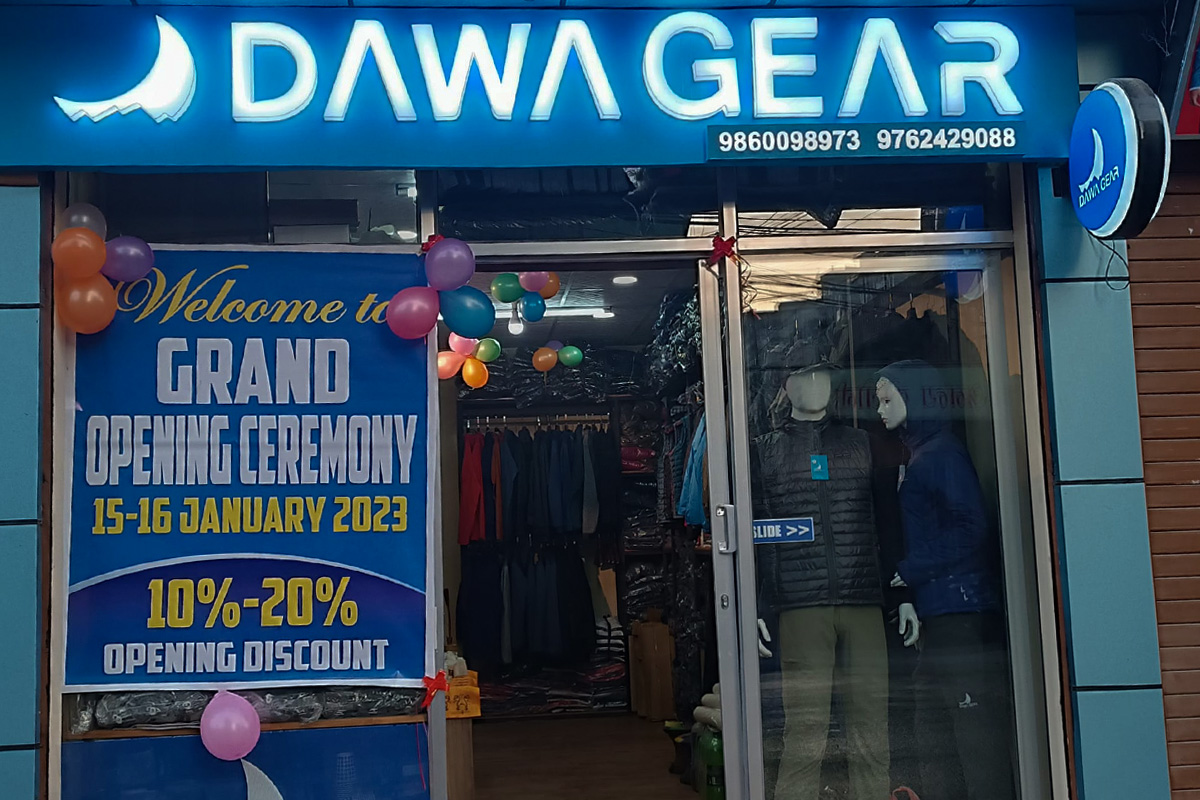
Dawa Tashi Sherpa is the heart and soul behind Dawa Gear. A seasoned high-altitude climbing guide who summited Everest multiple times, leading countless expeditions through the most difficult terrains of Nepal. Dawa’s journey took a turn when he became a part of the tragic Everest Avalanche in 2014 which left him severely injured. His mountaineering journey ended but it was the beginning of his remarkable initiative, Dawa Gear. His deep love for the Sherpa community and the mountains encouraged him to venture into supporting the Sherpa children with his clothing brand. Creating this functional yet stylish mountain clothing channeled his way toward the benefit of education and the basic needs of the children in remote Himalayan villages. Education is the key to unlocking a world of possibilities. They offer essential learning materials and access to quality education for these children and provide positive aspirations for the skill development of the children of the Sherpa community.
The gear's functionality is impeccable, keeping you warm and cozy in the mountains of Nepal. The brand empowers local artists and provides opportunities for people who are underprivileged yet crafty. The duffle bags, sleeping bags, and water-repellent jackets that Dawa Gears manufactures are trustworthy and durable. If you are an outdoor enthusiast, then dawa gears can be your next stop before your adventure. You can find a wide range of variety of trekking clothes in their stores along with other gear and equipment. Beyond Trekkers' clothing, Dawa Gear celebrates the rich Sherpa culture with its vibrant colors and symbols.
The Himalayas are a place of awe-inspiring beauty, but they also demand respect. Dawa Gear embodies this respect for the mountains and their people. So, on your next adventure, consider choosing Dawa Gear. It's a brand built on resilience, social responsibility, and a commitment to empowering the future Sherpa generation. With Dawa Gear, you're not just climbing a mountain – you're climbing for change.
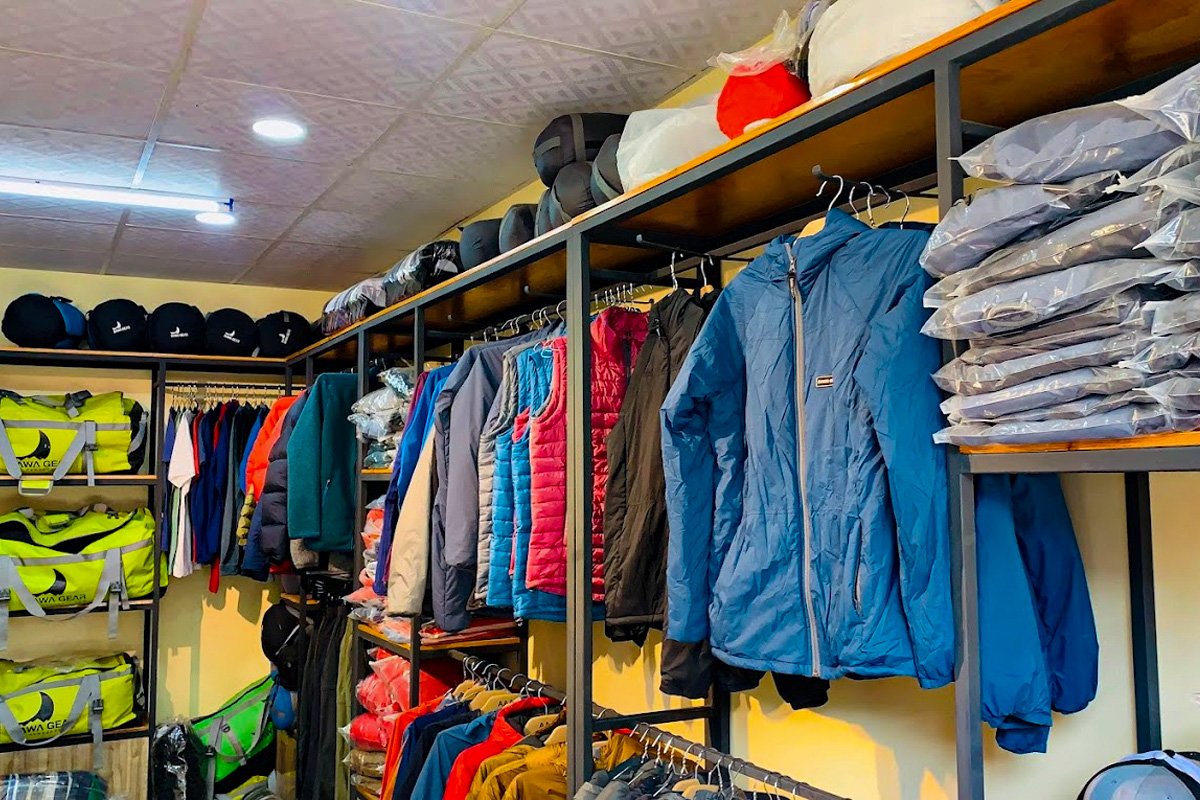
- saraswatinagar Rd, Kathmandu
- Dawa Gear | Daraz NP
Aroan Nepal
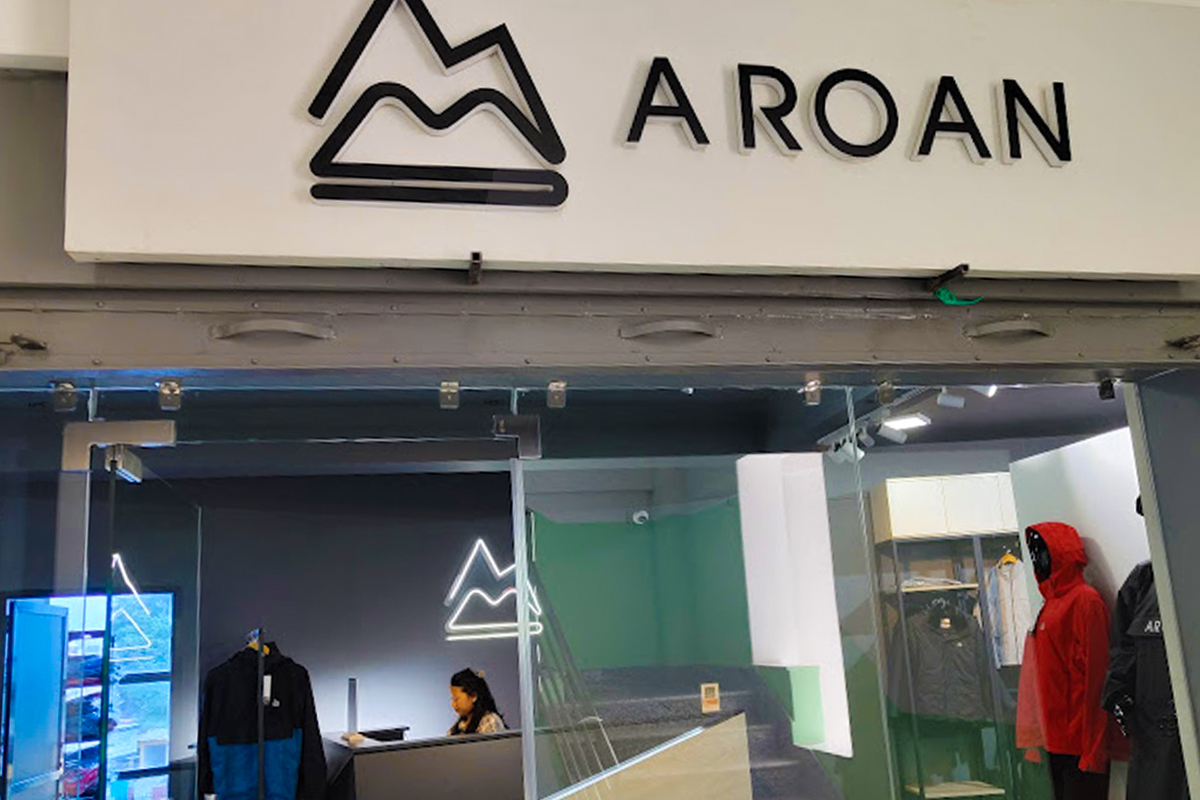
For any outdoor enthusiast, the gear and clothes define them on the trail. You rely on your gears to function effortlessly, keeping you secure and comfortable while indulging in the beauty of nature. This is well understood by the team of Aroan, a trekking clothing company, founded in the center of Nepal .
The brand name is derived from the Sanskrit word Aroan- " आरोहण" itself carrying the essence of conquering. It indicates ascent, climb, or rise. Aroan was founded by a team of passionate individuals all having a strong background in marketing and outdoor adventures. After years of experience in the trekking industry, the brand was born from frustration with the existing trekking gear. The team added a touch of fashion into practicality and offered it to the world.
The inspiration for Aroan comes from the majestic peaks of Nepal , the home of Everest, and other phenomenal treks. The discrete climate of Nepal from the scorching heat of the lower belt to the heartwrenching cold of the Himalayas, the garment of Aroan serves all. This translates into the versatility of every piece found in Aroan.
This clothing brand in Nepal doesn’t compromise on its performance. They operate with high-quality materials with durable construction to withstand the adversities of the trails and weather. The strategically placed pockets and articulated knees enhance your flexibility. Aroan fosters a strong sense of community among passionate trekkers. Their social media presence is a great way to connect with fellow adventurers and share experiences.
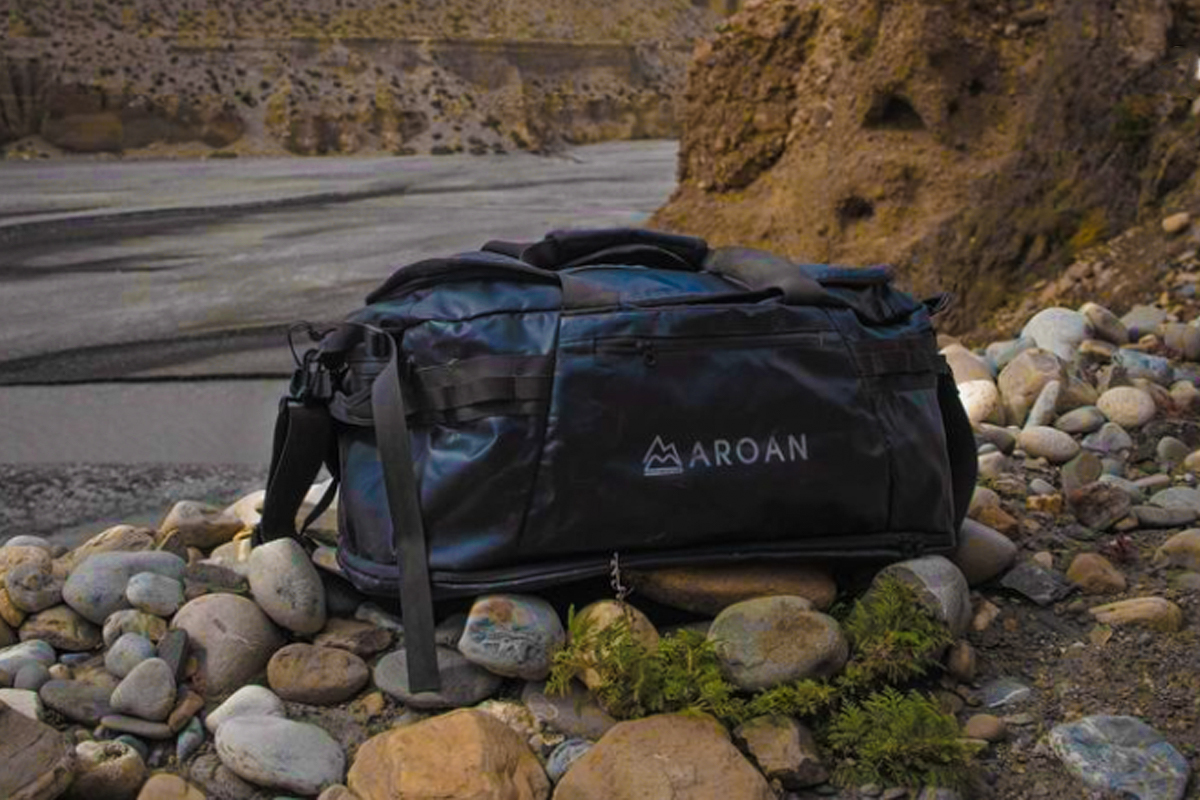
Aroan offers a comprehensive range of trekking apparel to cater to all your needs, from base layers to outer shells:
- Base Layers : base layers are crafted from lightweight, fast-drying fabrics like merino wool or synthetic blends. These garments offer excellent moisture management and odor resistance, keeping you fresh and comfortable throughout the day.
- Mid-Layers : mid-layer options include fleece jackets, insulated vests, and down jackets. They come in various thicknesses to suit different weather conditions, allowing you to adjust your layering system as needed.
- Outer Shells : outer shells are constructed from waterproof and windproof materials like Gore-Tex or similar technologies. These jackets keep you protected from rain, snow, and strong winds, ensuring a comfortable journey even in harsh weather.
- Trekking Pants : constructed from water-resistant or quick-drying fabrics that offer excellent flexibility. Features like articulated knees, gusseted crotches, and cargo pockets enhance comfort and functionality on the trail.
- Additional Gear : includes essential accessories like hats, gloves, bags, duffel bags, and gaiters, all designed with the specific needs of trekkers in mind.
Furthermore, Aroan prioritizes sustainability in its practices. They source high-quality, durable materials that are built to last, reducing the need for frequent replacements. Additionally, they strive to minimize their environmental impact through responsible manufacturing processes.
- KC Complex, Second Floor, Kathmandu
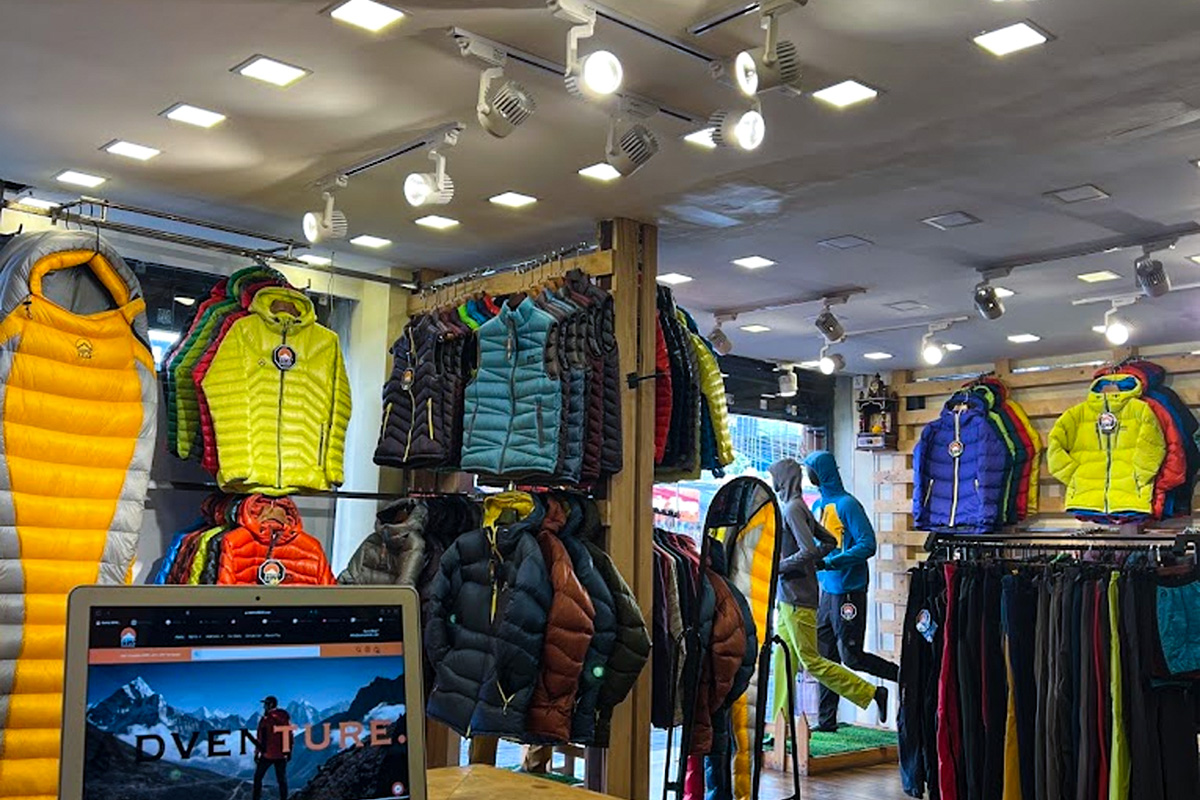
Kaemp 8848 stands out as a trekking clothing brand with a deep commitment to both adventure and social responsibility. Their name itself, a reference to Mount Everest's elevation, hints at the spirit of exploration that fuels their designs. But Kaemp 8848 goes beyond just creating functional gear for trekkers. They're on a mission to empower local communities, embrace sustainability, and foster a diverse and inclusive workplace.
In today's world, consumers are increasingly seeking brands that align with their values. Kaemp 8848 understands this. They prioritize sourcing their materials and labor locally within Nepal. Kaemp 8848 injects crucial resources directly into the country's economic engine by choosing local suppliers and employing Nepali talent. This creates jobs, stimulates regional growth, and empowers local communities. Transporting materials across vast distances significantly increases a product's carbon footprint. Kaemp 8848's dedication to local sourcing minimizes this impact, promoting a more sustainable business model. Local sourcing allows Kaemp 8848 to maintain greater oversight of its production process. This fosters ethical practices, ensuring fair wages and safe working conditions for their employees. By championing these values, Kaemp 8848 builds a strong and inclusive team that reflects the rich tapestry of Nepali society. This commitment ultimately benefits everyone involved, fostering a sense of belonging and empowerment within the company.
So, the next time you're gearing up for your next trek, consider Kaemp 8848. You'll be choosing not just quality apparel, but a brand that aligns with your values for adventure and social responsibility. With Kaemp 8848, you can conquer any mountain, knowing that your journey supports a community and a philosophy that's worth believing in.
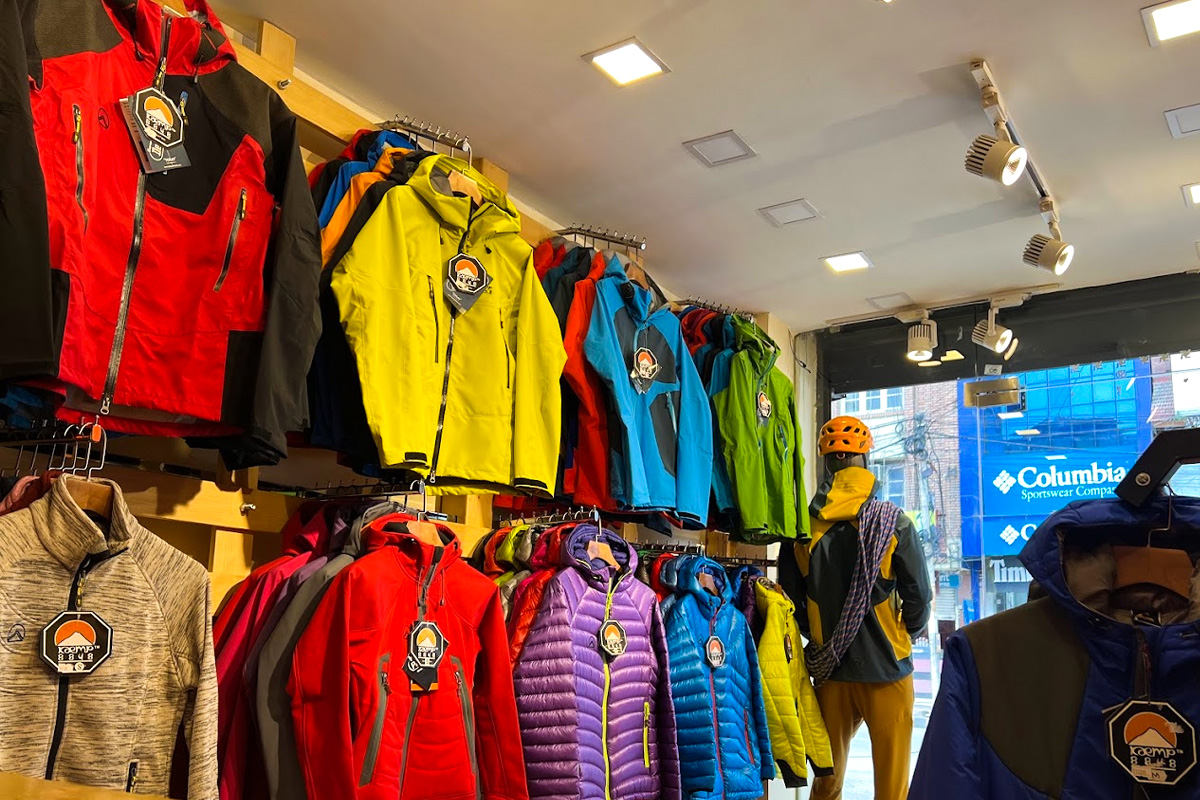
- Boudha Rd
- Kaemp8848 Instagram
Choosing Nepali trekking gear isn't just about acquiring quality equipment. It's about becoming part of a story. You're supporting local businesses, fostering traditional craftsmanship, and contributing to a sustainable future in the Himalayas. Imagine the warmth of a hand-knitted Nepali wool hat or the pride of using a backpack assembled by local artisans. Nepali gear allows you to forge a deeper connection with the region, its people, and its rich heritage.
Additional Information
- Absolutely! Renting is a great option if you're planning a short trek(up to 2 weeks) and have limited luggage space. It is also a good choice if you are a budget traveler.
- It usually depends on the length of your trek. Renting is cheaper for shorter trips but buying becomes more cost-effective for longer trips (over 2 weeks). Consider buying gear if you’ll use it soon.
- The types of clothing to buy for trekking in Nepal are:
- Base layers : dry-fit t-shirts, Quick-drying thermals made from merino wool or synthetic fabrics(top and bottom).
- Midlayers : fleece jackets, windproof/waterproof trousers (Gore-Tex or similar)
- Outer layer : insulated jackets, down jackets, windproof/waterproof jackets
- Trekking pants : convertible trousers with zip-off legs.
- Other essentials : proper hiking boots, trekking poles, buffs, gloves, thermos, raincoat(for monsoon treks)
Q: What are the import/export regulations for outdoor gear in Nepal?
- Nepal allows a reasonable amount of personal gear for trekking. Double-check the latest customs regulations for specific limits on value and quantity before your trip. Generally, you can take out what you brought in. However, if you buy a large amount of gear, declaring it at customs might be necessary.
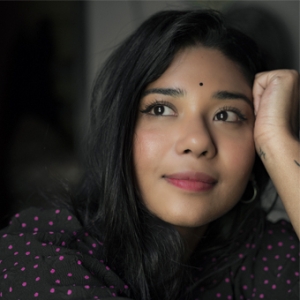
Salona Dhungana
Salona Dhungana is a dynamic individual who wears multiple hats with effortless grace. As the Operation Head of Footprint Adventure, she brings a unique blend of professionalism, creativity, and compassion. Her journey from a dedicated nurse to a passionate writer and influential leader is an inspiring narrative of growth and versatility. Salona's educational background as a nurse has deeply built in her a sense of care and empathy. Her experience in the healthcare sector provided her with invaluable skills in teamwork, crisis management, and meticulous organization – qualities that seamlessly transitioned into her role as the Operations Head. Her ability to manage intricate logistical details with a compassionate touch sets her apart in the adventure travel industry.
Beyond her operational skills, Salona's creative personality finds many different ways to express itself. She effortlessly crafts her words and expertise into fascinating blogs. Her love for writing extends beyond the limits with a way of creating a lasting impression.
Salona's vibrant spirit isn't limited to her professional pursuits. Dance, for her, is a form of self-expression – a way to communicate emotions that words sometimes can't capture. Singing is another avenue through which Salona finds inner harmony. It's a reminder that among the hustle and bustle of operations, there's always room for the soothing embrace of her melody.
In the ever-evolving landscape of adventure travel, Salona stands as an example of inspiration, showcasing the profound impact of creativity, compassion, and continuous self-discovery. As a writer, dancer, singer, and Operations Head, she not only defines versatility but also exemplifies the beautiful symphony that can be created when passion meets profession.
- Peak Climbing
- Information
Send an Enquiry
Recent posts.
- Thimphu Tsechu Festival in Bhutan 2024| Footprint Adventure
- Where is Kilimanjaro? - Footprint Adventure
- Boudhanath Stupa- The Largest Spherical Stupa in the World
- Tengboche Monastery: A Spiritual Oasis in Khumbu Region of Nepal
- Kalapathhar : The Ulimate View Point in the Everest Base Camp Trek
- Low Impact Trekking Guidelines- For Conscious Travel in Nepal
Related Posts
- Accommodations
- Adventure Sports
- Adventure Tourism
- Cultural & Historical
- Festivals & Events
- Food and Taste
- Heritage Sites
- National Parks & Conservation Areas
- News & Events
- Photography
- Places To Visit
- Sustainable Tourism
- Temples & Monasteries
- Things To Do
- Uncategorized
- UNESCO World Heritage Sites
We use cookies to ensure that we give you the best experience on our website.
Table of contents
Nepal Trekking Gear Checklist – What To Pack

Some of the links on this page are affiliate links

Nepal is an unbelievably beautiful country with a radiant culture and some of the most fantastic scenery you’ll ever lay eyes on. Making a pilgrimage to this trekking mecca should be on every backpacker’s bucket list.
One of the nicest things about trekking in Nepal is that it’s accessible for a wide range of travelers. Many of the most popular routes are “teahouse treks,” meaning you’ll eat and sleep in teahouses (small lodges) along the way. On a teahouse trek you won’t need a tent, sleeping pad, stove, cookware, or any extra camping equipment. That will give you the opportunity to pack light and enjoy your hike.
The list below represents all the equipment Annie and I used for three months of trekking in Nepal from September to December 2016. By the end of our trip we really had our packs dialed in, so hopefully you’ll find this info useful while preparing for your trek. Also, if you haven’t seen it yet, make sure to check out our Comprehensive Guide to Trekking in Nepal .

Teahouse Trekking Checklist
We hiked with 45L packs ( Exped Lightning 45 ) and had plenty of extra space. A simple lightweight backpack is really all you should need on a teahouse trek. Avoid going overboard with a 5-7lb pack. Here’s a list of my favorite lightweight backpacks .
Sleeping Bag
We used 15-degree (fahrenheit) down sleeping bags ( Marmot Sawtooth ) and found them to be quite warm and comfortable. At lower elevations they were too hot to zip up, but that extra warmth was necessary at altitude. Here’s a list of my favorite lightweight sleeping bags .
Shoes or boots
We used trail runners ( Saucony Peregrine 6 ) on all of our Nepal treks and we’d make the same choice again. If you prefer boots (or plan to encounter in lots of snow), make sure they’re lightweight and break them in really well before your hike. Here’s why I prefer to hike in trail running shoes: 5 Reasons to Ditch Your Hiking Boots
Water Purifier
We absolutely loved the SteriPEN Ultra and would highly recommend it. It’s fast, easy, and effective. You’ll also save money and waste a lot less plastic by reusing the same bottles. Purifying tablets are easy to find in Nepal, but we prefer not to ingest strange chemicals. We picked up some tablets to have as a backup but thankfully didn’t end up needing them.
Water Bottles
We hiked with two 1L plastic water bottles each. They’re cheap, strong, they work well with the SteriPEN, and they’re easily replaceable. Water sources were plentiful along trails and we rarely needed to hike with more than 1-2L each.
Don’t overpack on clothing. That’s a common mistake that will lead to unnecessary weight. Instead, pack in layers and avoid bringing any two items that will serve the same purpose. Here’s what we brought with links to some of our favorite gear:
- 1 Rain jacket shell – Patagonia M10
- 1 Pair rain pants – Mountain Hardwear Stretch Ozonic
- 1 Down jacket – Patagonia Ultralight Down Hoody
- 1 Fleece jacket – Warmer than down when damp and better to hike in
- 1 Pair hiking pants
- 1 Pair hiking shorts – Nike dri fit running shorts
- 1-2 Hiking t-shirts – Nike dri fit t-shirts
- 1 Long-sleeve shirt – Nike dri fit quarter zip
- 1-3 Pair underwear – ExOfficio boxer briefs
- 2-3 Pair socks (add thin sock liners if using boots) – Balega running socks for warm weather & SmartWool mountaineer socks for snow.
- 1 Pair long john bottoms – long john top optional for nighttime use.
- 1 Pair gloves or mittens

Map, Compass & Guidebook
Good maps can easily be purchased in Kathmandu. We always hike with a compass too, though the trails were easy to follow and we didn’t end up needing it. For a guidebook, we found the Trekking in the Nepal Himalaya book to be very useful.
First Aid Kit
Always bring a small personalized first aid kit. We used the .5 Ultralight Kit and added extras, like painkillers, diamox, and personal medications.
1 small lighter, a few stormproof matches, and a small firestarter for emergencies.
Sun Protection
Sunglasses (polarized recommended), sunscreen, and spf lip balm are an absolute must.
A small headlamp like the Petzl e+LITE will be useful for late night bathroom visits.
Pocket Knife
We brought along a small Swiss Army Knife which came in handy here and there. This should be considered optional, but we like to hike with one.
We brought along We don’t hike with pack covers because they don’t provide full rain protection. We use a combination of waterproof stuff sacks and a sturdy trash bag liner inside our packs. That gives us 100% rain protection, even in a downpour. Ziploc bags also come in handy. small Swiss Army Knife which came in handy here and there. This should be considered optional, but we like to hike with one.
Trekking Poles
We don’t usually hike with trekking poles, but many hikers in Nepal do. If you have bad knees/ankles they can help reduce strain on big ascents and descents. We didn’t bring them on any of our treks in Nepal and didn’t miss them at all. Still, here’s a list of our favorite trekking poles .
Traction Devices
We brought Microspikes with us on our highest hike (Everest Three Passes Loop) for the possibility of snowy passes, but didn’t end up using them. These should be considered optional depending on your trek. On high elevation treks with the possibility of icy pass crossings we recommend bringing them.
Small Towel
The Nano pack towel is great.
Cash, ID & Credit Card
See the money section of our Nepal Trekking Guide for more info.
Nepalis estimate hiking distances in hours, not miles or kilometers, so it’s useful to pay close attention to the time.
See permits section of our Nepal Trekking Guide for more info.
Personal Toiletries
Don’t forget things like a travel toothbrush, toothpaste,contact lenses, personal medications, and any other small toiletries you’ll need.
Hand Sanitizer
Lots of people get sick when hiking in Nepal. They even have different names for getting sick, like the Khumbu cough. Use hand sanitizer often (especially before meals) and you’ll have a better chance of avoiding illness.
These are very useful for cleaning up after hiking, especially when it’s too cold for a shower.
Insect repellant
At higher elevations insects aren’t a problem at all. For lower elevations, 30% DEET will do the trick. We rarely used any insect repellent.
Biodegradable soap
A small amount of Campsuds can be useful for washing up and cleaning clothes.
Toilet paper
Most bathrooms won’t provide any, so you’ll want to bring your own. You can buy more at any teahouse along the way too.
Gear Repair tape
Tenacious Tape is great.
The Sony RX100 is my go-to camera for backpacking.
Wifi is becoming more available at teahouses and spotty cell service is possible in popular areas, like along the Everest Base Camp route. See our Nepal Guide for more info.
We kept all our electronic devices charged with a power bank. That helped us stay fully charged and save a little money in teahouses.
Cords & Adapters
Cords to charge your devices and a Nepal plug adapter (both are easy to find or replace in Kathmandu).
Games, Books & Journal
There can be a lot of downtime when hiking in Nepal, so make sure to bring lightweight entertainment. We loved having our Kindle Paperwhites with us. We also played cards, worked on crossword puzzles, and wrote in our journals often.
Don’t overdo it on snacks because you’ll be able to buy them at every teahouse. That said, having a few luxury snacks can be nice when options are limited. One of our favorite treats was the dried mango we picked up in Kathmandu.
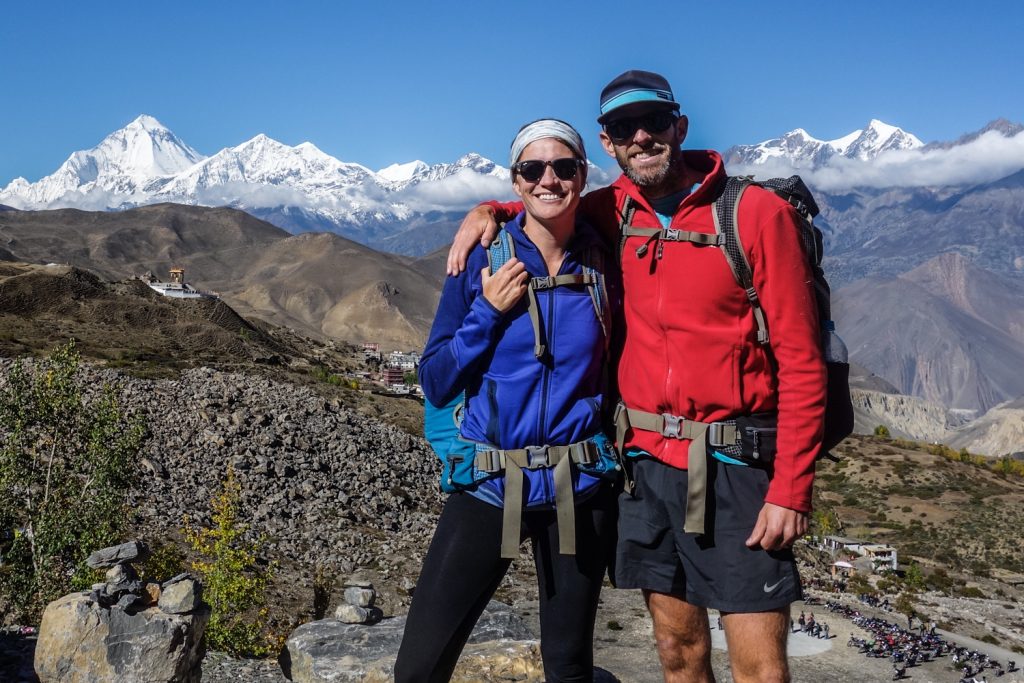
Why trust us?
We understand how tough it is to find trustworthy gear advice, and that’s one of the main reasons we built CleverHiker. We live for outdoor adventure, and we take these guides very seriously.
- Our recommendations are completely independent and based on hands-on experience.
- We test outdoor gear for a living – we’ve logged over 20,000 trail miles and 1,000 nights in the wilderness.
- Our team has thru-hiked some of the most iconic long trails, including the Continental Divide Trail, Pacific Crest Trail, Appalachian Trail, Colorado Trail, Long Trail, Oregon Coast Trail, Arizona Trail, Pinhoti Trail, Superior Hiking Trail, as well as extensive peak bagging, and international treks.
- We field test every product we recommend, which is sadly not the norm.
- We travel to industry trade shows to stay up-to-date on product innovations.
- We continuously update our guides throughout the year and when new products launch.
- We treat recommendations to our readers as if they were for our family and friends.
- We’re lifelong learners and we’re always open to feedback. If you think we’ve missed a worthy product or got something wrong, we’d love to know about it.
Need More Advice?
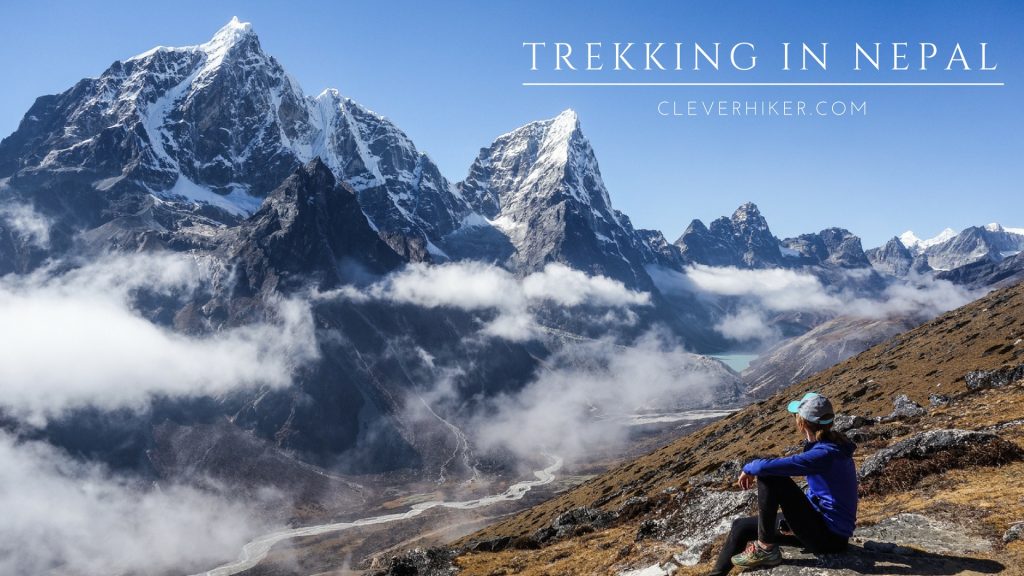
Trekking In Nepal – A Comprehensive Guide
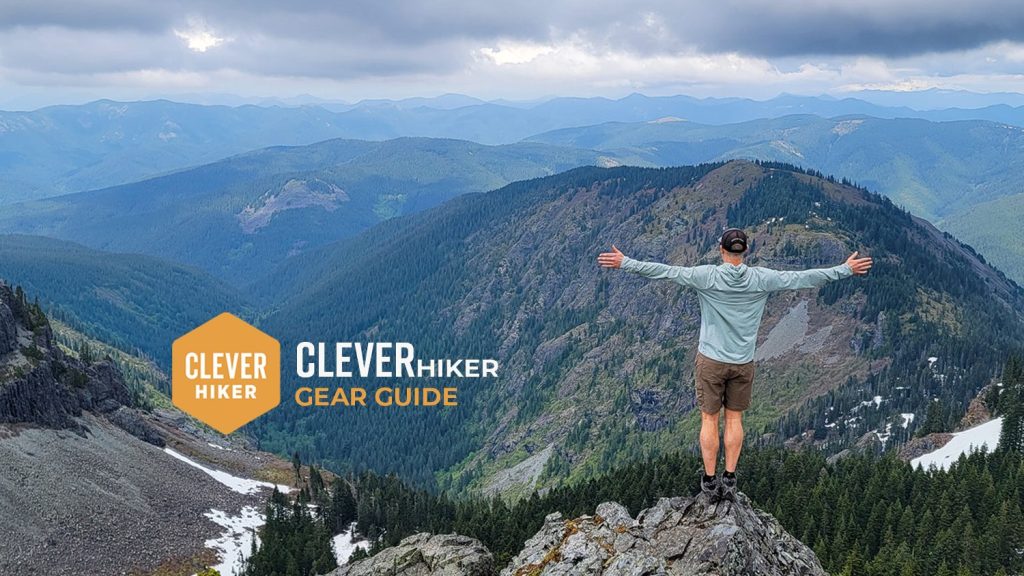
CleverHiker Gear Guide
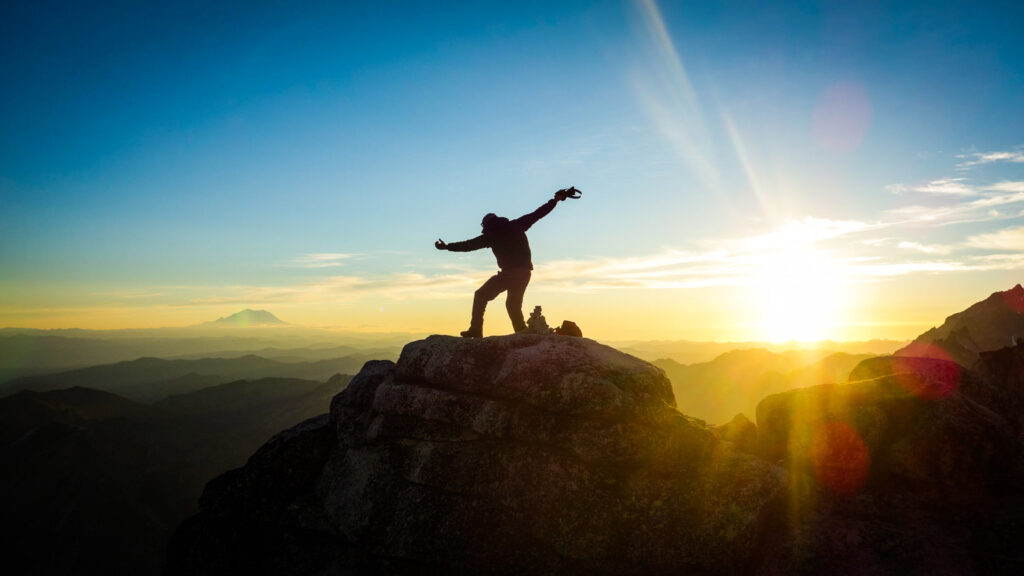
Top Gear Picks of 2024
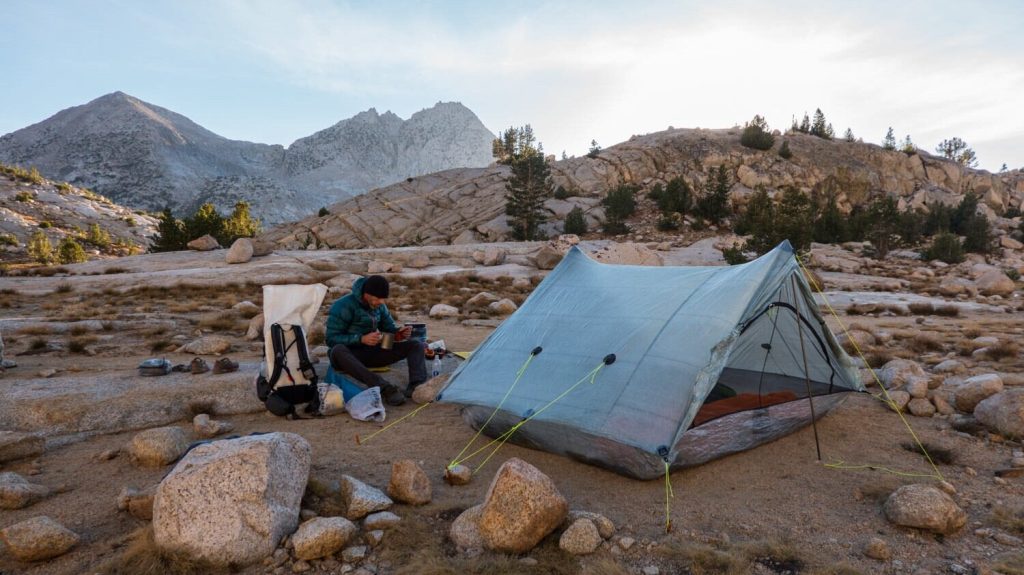
Ultralight Backpacking Basics
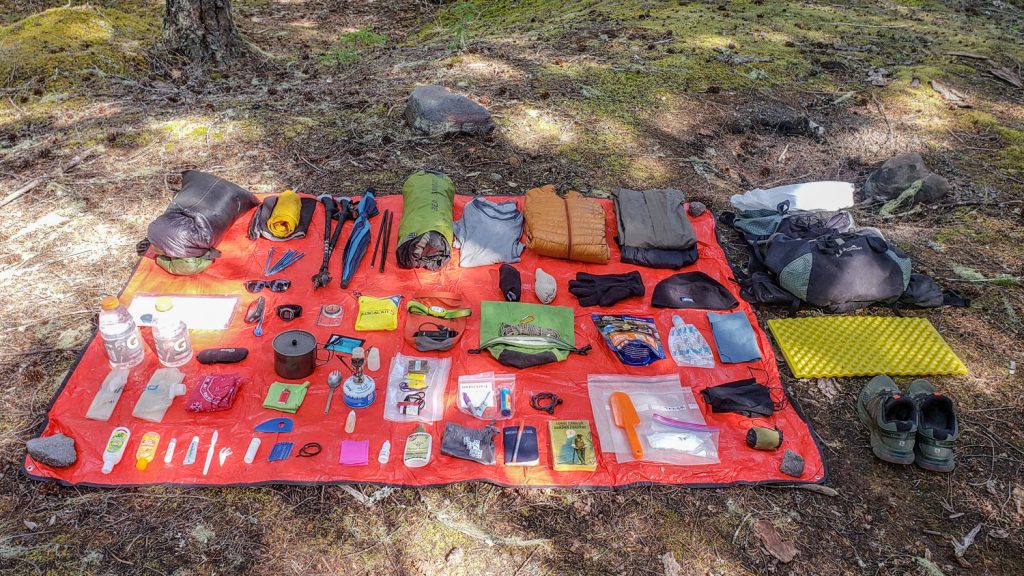
Ultimate Backpacking Checklist & Gear Essentials
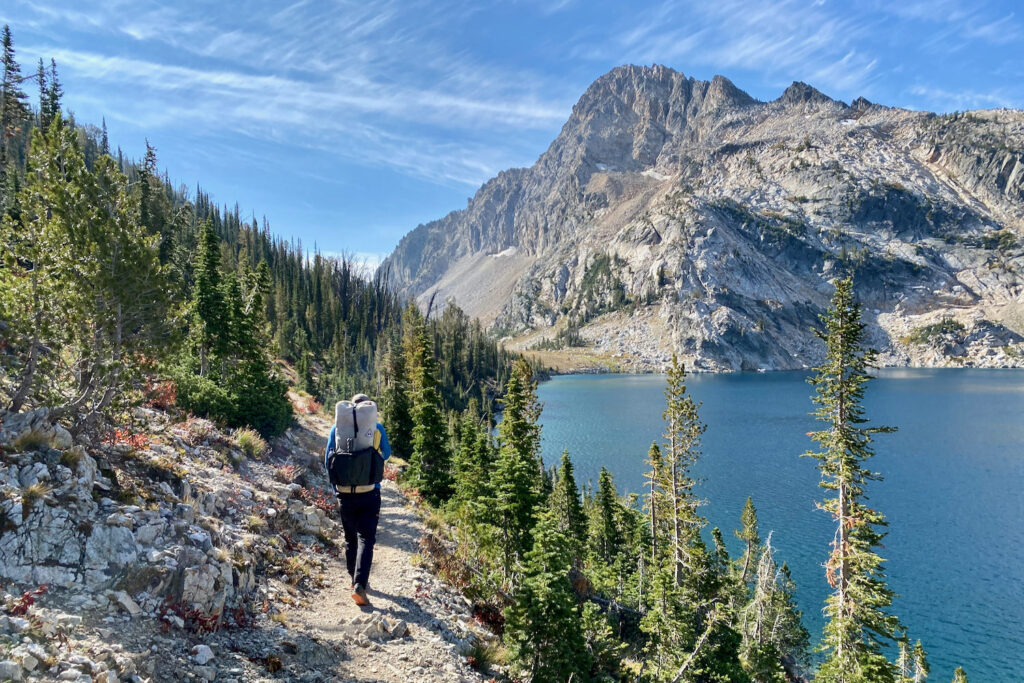
Best Backpacking Backpacks of 2024
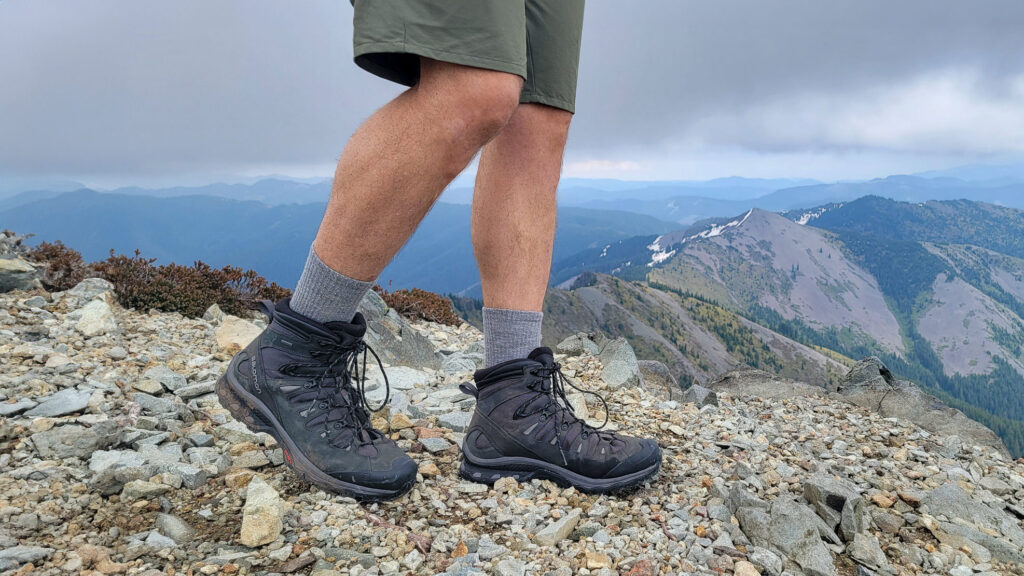
Best Hiking Boots for Men of 2024
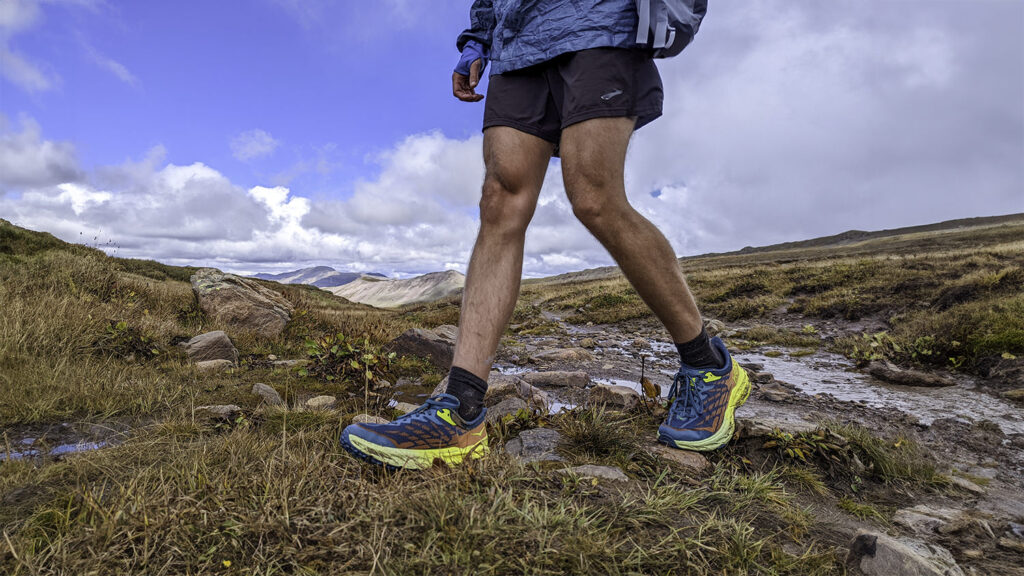
Best Hiking Shoes for Men of 2024
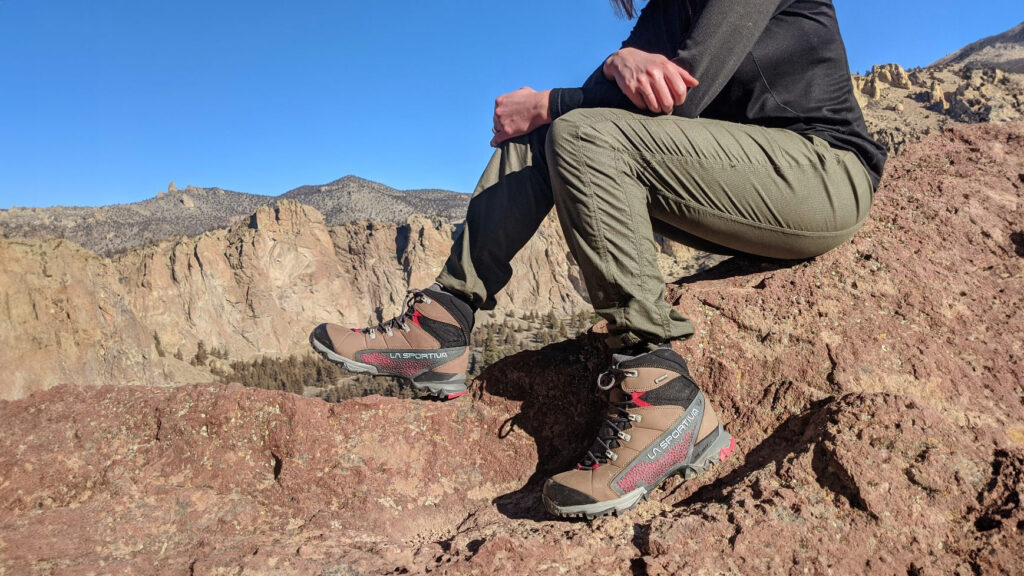
Best Hiking Boots for Women of 2024
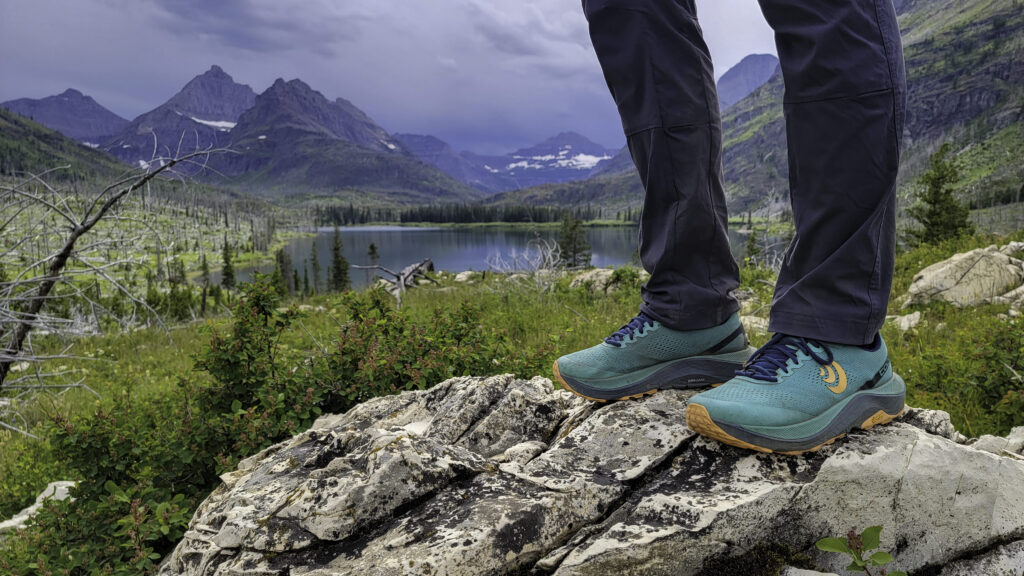
Best Hiking Shoes for Women of 2024
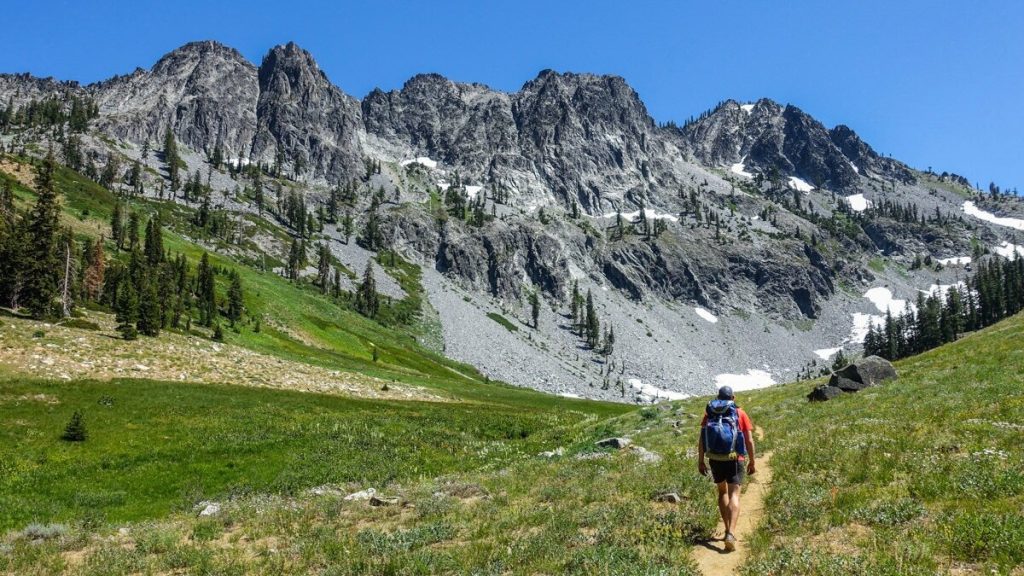
Backpacking Trip Guides
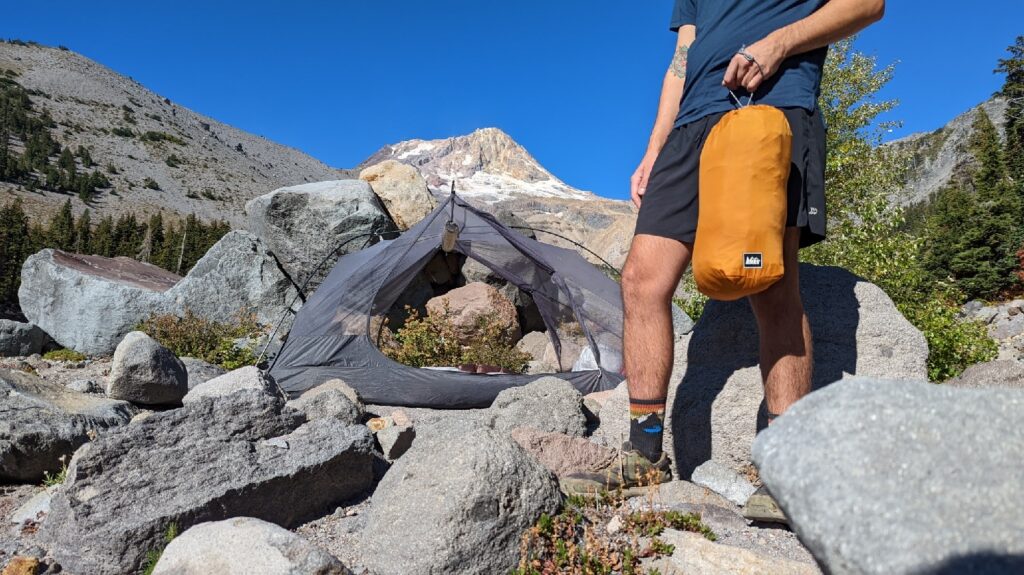
Best Stuff Sacks of 2024
Get the best content from cleverhiker & around the backpacking world.
Social media is great, but our bi-weekly newsletter is a much better way to stay in the know.
Sign up to get our curated emails with the best content from CleverHiker and around the backpacking world. You’ll be turned on to new videos, trip reports, gear reviews, inspiring outdoor stories and much more. So get in the mix!

Clothing and Equipment List for Trekking in Nepal
by Mark | June 14, 2016 | Nepal , Trekking | 0 comments
A comprehensive guide to what to pack for your trek in Nepal and the Himalayas
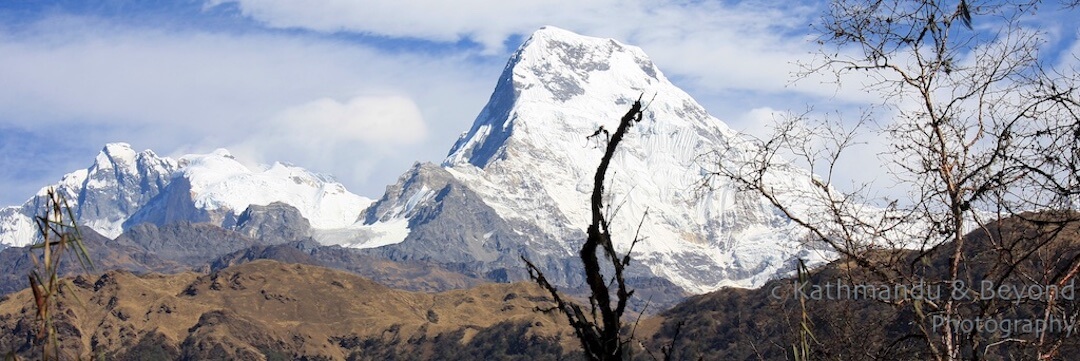
This is a follow-up to my post ‘ An Introduction to Trekking in Nepal ‘. One of the most commonly-asked questions I get is ‘what do I need to pack for my trek in Nepal?’ Having undertaken around ten treks (some of them more than once) in the Nepalese Himalayas, I have become a very adept packer, refining my kit to the bare essentials.
Please note: this is a comprehensive list and if you are an experienced trekker, you may only need to take a selection of these items based on the season in which you are trekking and what has worked for you in the past. My list also assumes you will be hiring a porter to carry your gear. If this is not the case, you will want to cut down. Consider carrying no more than 7kg on your back if you want to have a comfortable trek.
Most of the items listed below are available for purchase in Kathmandu, however, it is safer to bring the majority of what you need with you as the availability of specific brands, styles and sizes can never be guaranteed. It is also possible to rent many of the items on the list for reasonable prices. Pokhara is another place where equipment can be purchased or rented but personally, I think the quality is superior in Kathmandu.
Assuming you are trekking for more than a couple of days, it is not possible to bring enough clothes to last the duration, but it is possible to wash items as you go. On an average day, you should reach your destination by 3pm. This allows a few hours of daylight to wash and dry anything you may need. You should not leave your clothes outside overnight and if they are not dry in the morning you can either hang them off the back of your rucksack/day bag or pack them away and get them out for half an hour or so when you stop for tea or lunch. I would recommend that you pack either a tube of travel wash or a small plastic container full of washing powder, both of which can easily be purchased in Kathmandu. Another option, which other trekkers/travellers have recommended but of which I do not have firsthand experience, is the Scrubba Wash Bag .
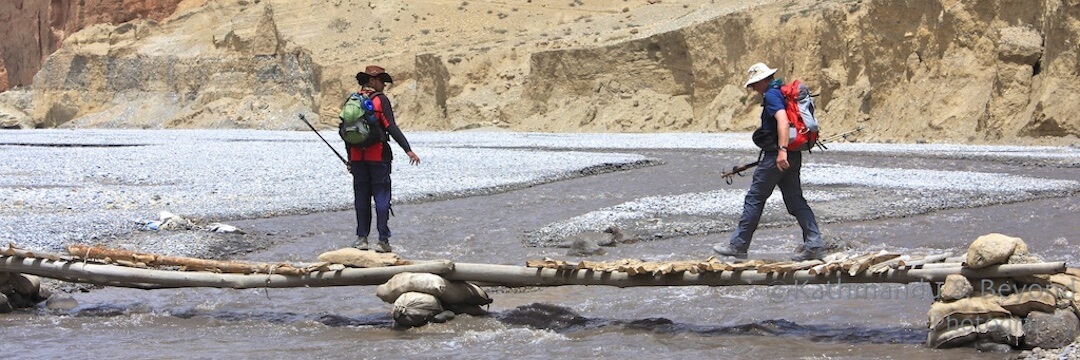
You can scroll through this list or view and download it here as a Google doc or here as a PDF .
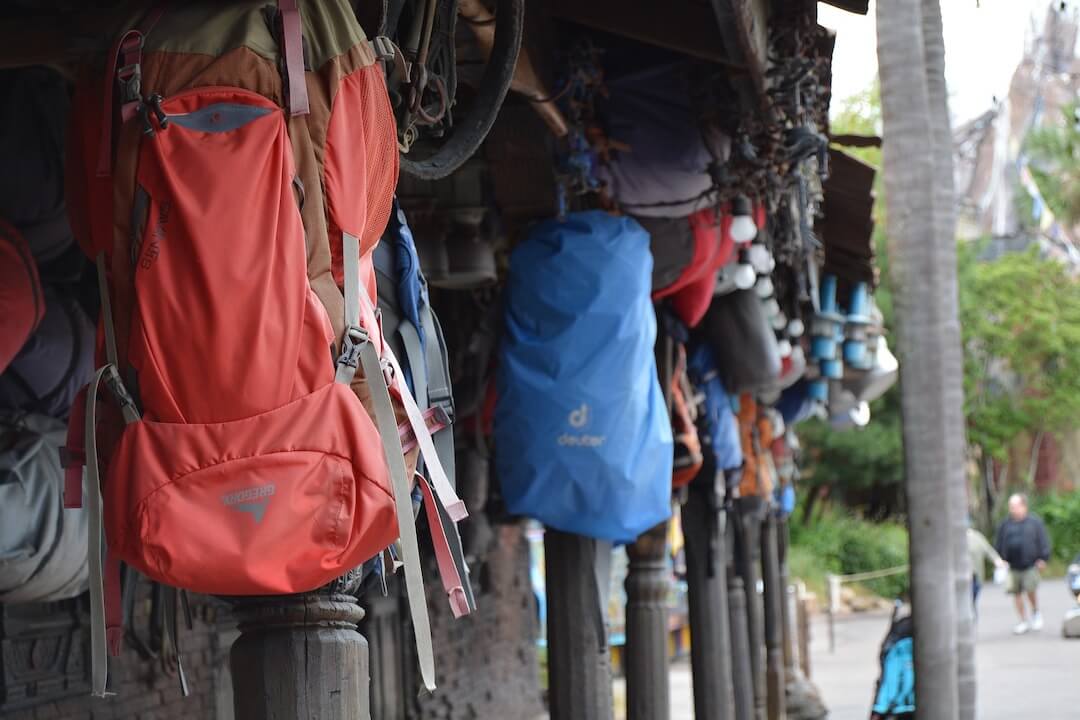
Trekking equipment
Purchasing trekking clothing and equipment in Kathmandu
The following brands have official outlets in the Thamel district of Kathmandu;
North Face; The selection is poor and the prices are similar to North Face stores worldwide (the selection is slightly better for women).
Mountain Hardware; The selection is good but the prices are no cheaper than in the West.
Vaude; Has a good high-quality selection but the prices are comparable to those in the West.
Camp ; This is a local brand but the selection is varied and the quality good plus the prices are very reasonable.
King Camp & Out Door Products; Reasonably priced Chinese made clothing and equipment.
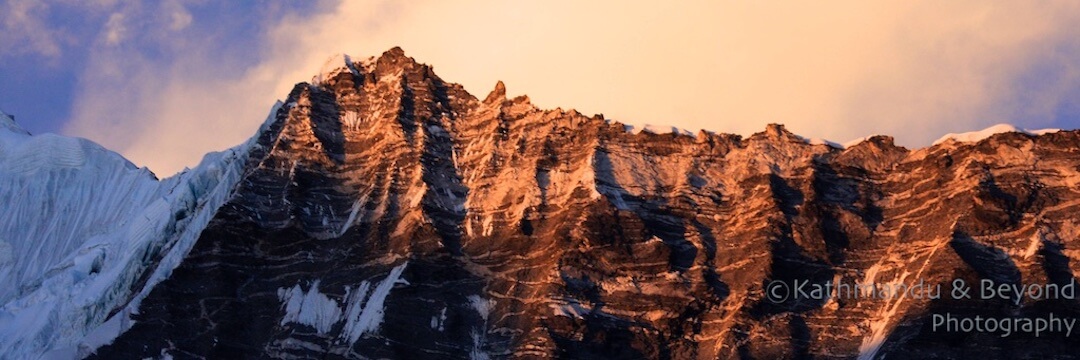
There are also many local trekking shops in Kathmandu (in particular in the Thamel area of the city) that sell a mixture of original, fake and Nepali made brands. Additionally, the prices vary from shop to shop and are not fixed so it is normal practice to bargain. Most of the shopkeepers will tell you if the product you are considering is genuine, fake or Nepali brand but this cannot be guaranteed so keep this in mind when shopping for such items.
One trekking shop that does offer a very good selection of trekking equipment at fair/fixed prices is Kala Pattar in Thamel (tel: 984 126 3414). The owner, Mr Bhesh Badhur Rai, is very knowledgeable and is able to make recommendations based on the trek you are undertaking and the time of year that you are trekking. He also rents out gear and equipment. His shop is tucked away in the middle of Thamel and a little difficult to find but give him a call if you need anything and he will give you directions to his shop: standing outside Kathmandu Guest House – with hotel behind you – turn left, go past Pilgrim Bookshop until you get to the end of the road. Turn left and then left again at the T-junction. Bhesh’s shop is on the left-hand side opposite the upper floor Yangling Tibetan Restaurant which specialises in momos (very tasty, and worth a visit).
Have we missed anything? Do you have any other questions about what to pack for your trek in the Himalaya? Let us know in the comments below and we’ll add them to the post.
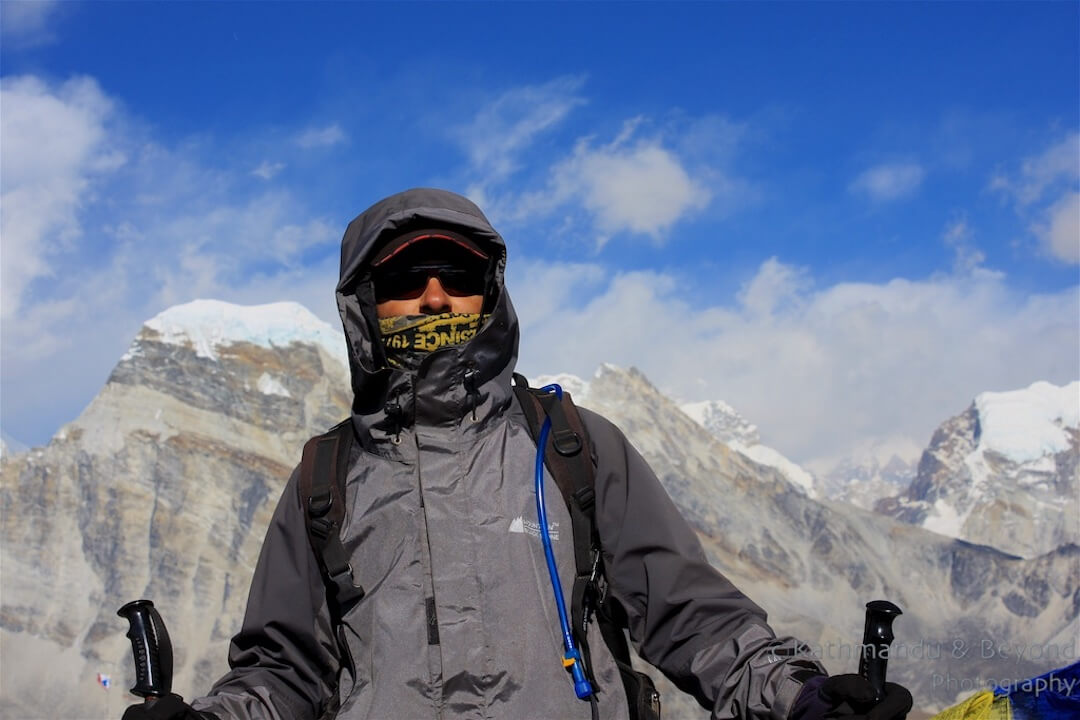
Gokyo region: View from Gokyo Ri
Check out our guides to Trekking in Nepal
Free guides to trekking in nepal ..., subscribe to kathmandu & beyond to access our guides to trekking in nepal as a free ebook, available in pdf, epub and mobi formats. enter your email address below and don't forget to confirm your subscription via the link in your inbox to complete the process, thank you for subscribing in order to complete the subscription process and to access your free trekking in nepal ebooks, please confirm via the link in your inbox., submit a comment cancel reply.
Your email address will not be published. Required fields are marked *
Would you like our FREE Guides to Trekking in Nepal?
Subscribe to Kathmandu & Beyond to access our guides to trekking in Nepal as a series of free ebooks, available in PDF, EPUB and MOBI formats.
Enter your email address below and don't forget to confirm your subscription via the link in your inbox to complete the process!
Thank you! Don't forget to confirm your subscription via the link in your inbox to complete the process and gain access to the download page!
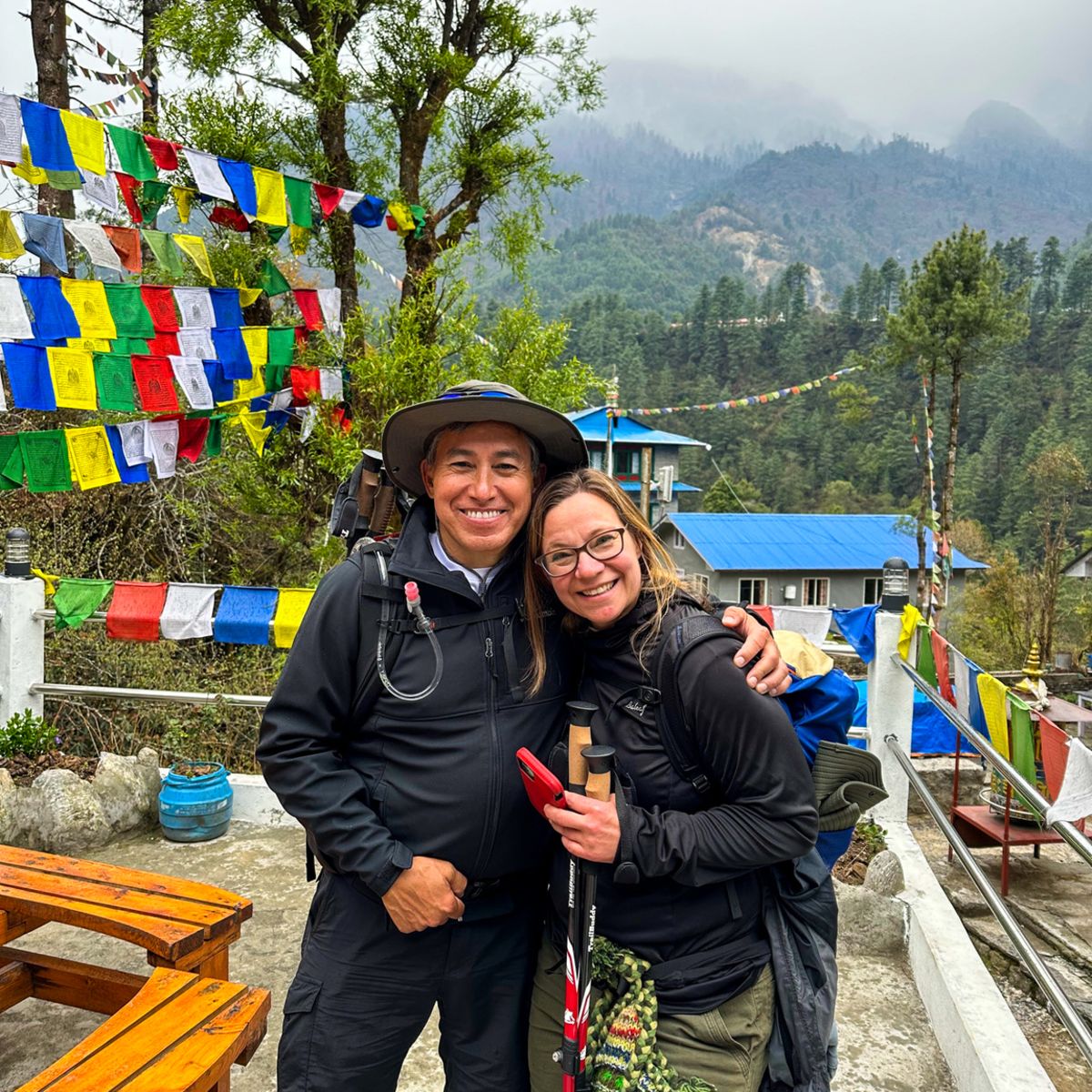
Nepal trekking 101: How to dress for a high-altitude trek in the Himalayas
Unless you've done a high-altitude trek before, it's likely you won't have all of the clothing you need to keep warm, comfortable and safe on such an adventure. That's where we come in. Read on for a head-to-toe list of what to pack for a trek in Nepal.
Nepal is a country of contrasts, where you can experience different climates and terrains in a single day. This is especially true if you're in the north of the country among the peaks and valleys of the Himalayas.
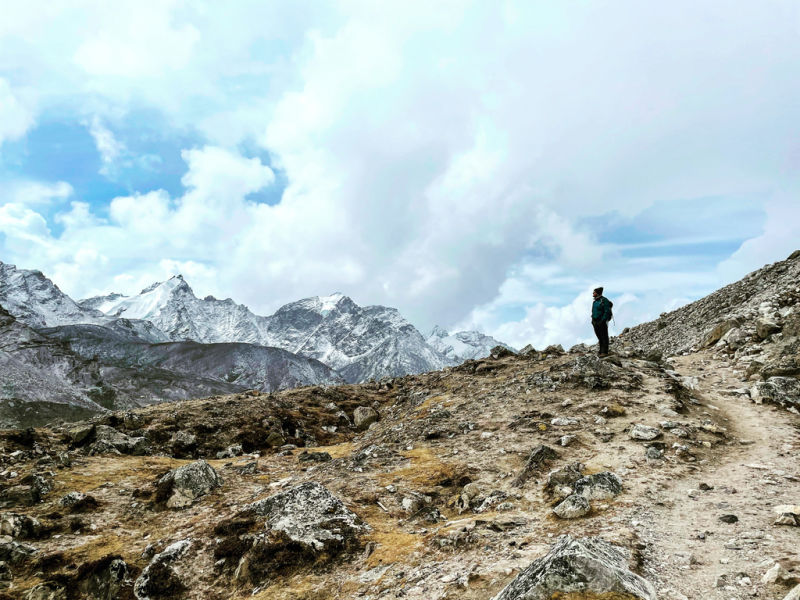
Never underestimate the changeability of the weather in the Himalayas
So whether you're trekking to Everest Base Camp in the east or tackling the Annapurna Circuit in the west, you need to be ready clobber-wise for anything.
The aim of this post is to introduce you to the clothing you will need to bring. If, however, you're at the stage where you'd like a more in-depth discussion about any of the particular items, please read Your complete Everest Base Camp packing list or Your complete Annapurna Circuit packing list .
The secret is in the layers
The key to dressing for a trek in Nepal is to layer your clothing. This way you can easily and swiftly adapt to any changes in weather and temperature.
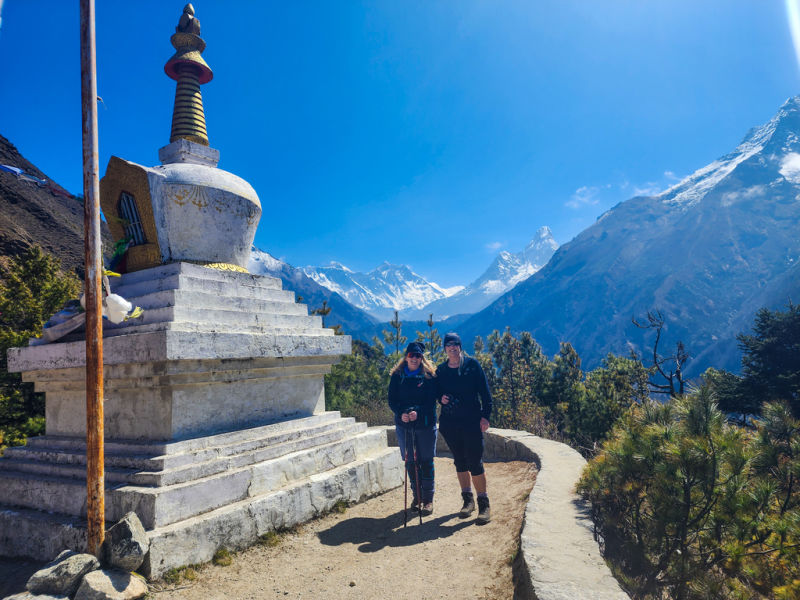
There can be warm days on a Himalayan trek too!
We find it helpful to think of your high-altitude trekking clothing as falling into three layers:
- Outer layer
1. Base layer
This is the layer that touches your skin and keeps you dry and comfortable. It includes your inner socks and underwear.
Your base layer should fit snugly while not being too tight. You want to insulate your body while not constricting your movements.
Your base layer clothing should be made of materials that wick away sweat and moisture to help keep you dry. Some good options are merino wool, polyester and a synthetic blend.
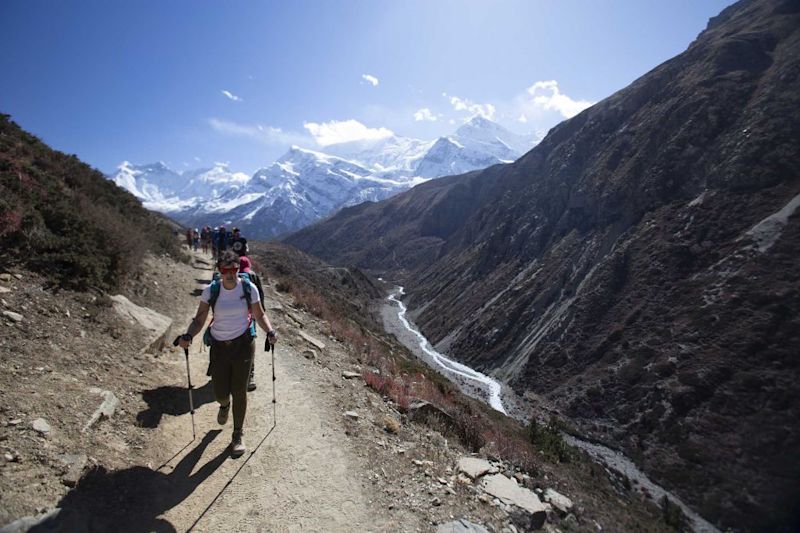
Please avoid cotton shirts like the plague, as they stay wet and will chill you the moment you stop moving.
A typical base layer packing list
A typical base layer consists of the following items:
- Synthetic underwear.
- Shorts and sports tops for any warm weather.
- Long-sleeved thermal shirts and thermal long johns or leggings for colder days.
- Thin socks or sock liners.
- Thin or inner gloves.
- Synthetic buff (which can be pulled over your nose to keep out dust).
Pro tip #1: Be sure to have at least two of everything that forms your base layer, as you should never start the day in something that's damp.
Pro tip #2: Shorts and trousers with pockets are super useful! Zip-up pockets are even better!
2. Mid layer
This is your next layer and its aim is to provide further warmth and insulation.
Your mid-layer items should be made of materials that trap heat, such as fleece and down. You can have more than one mid layer, such as a fleece jacket and a down jacket that goes over that.
Pro tip #3 : Don't skip the fleece jacket and head straight to the down jacket. Down doesn't do well if it gets wet, so don't ever have it against your skin.
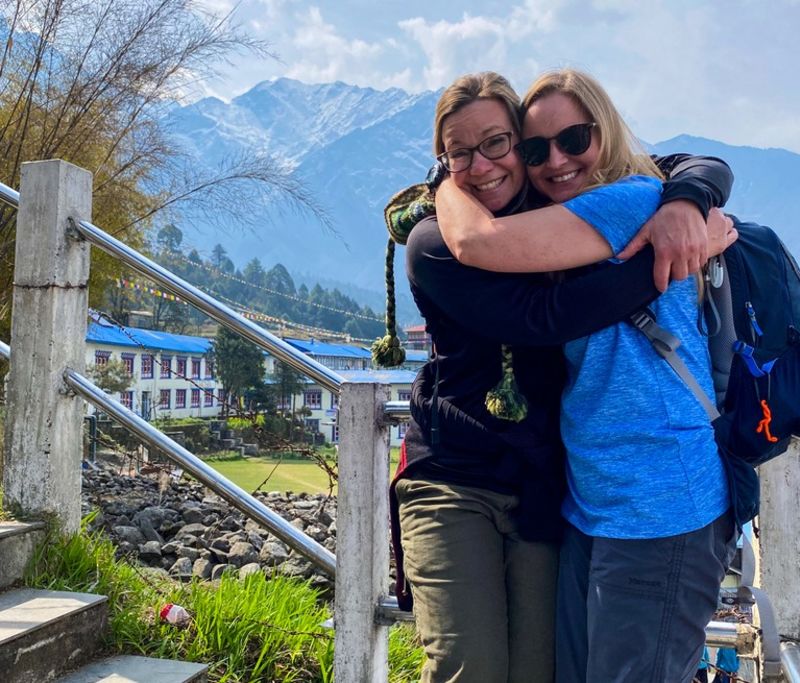
A typical mid layer packing list
A typical mid layer for a Nepal trek consists of the following:
- Trekking pants (ones with zips that can become shorts are ideal).
- Long-sleeved sports tops.
- A fleece jacket.
- A down jacket (for the higher altitudes).
- At least two pairs of regular hiking socks.
- At least two pairs of thermal hiking socks.
Pro tip #4: Trekking pants with zips that let you convert them into shorts are invaluable, as they let you transition between temperature fluctuations far more easily.
Please note that it's always better to be slightly cold than too warm when trekking in higher altitudes, so don't hesitate to take off layers if you feel too hot. That said, it's important not to catch a chill. Don't judge your body's needs based on what others around you are wearing. Please keep adding or stripping off layers as you hike, however much of a nuisance this might feel in the moment.
3. Outer layer
This is the layer that protects you from the sun, wind, rain, ice and snow.
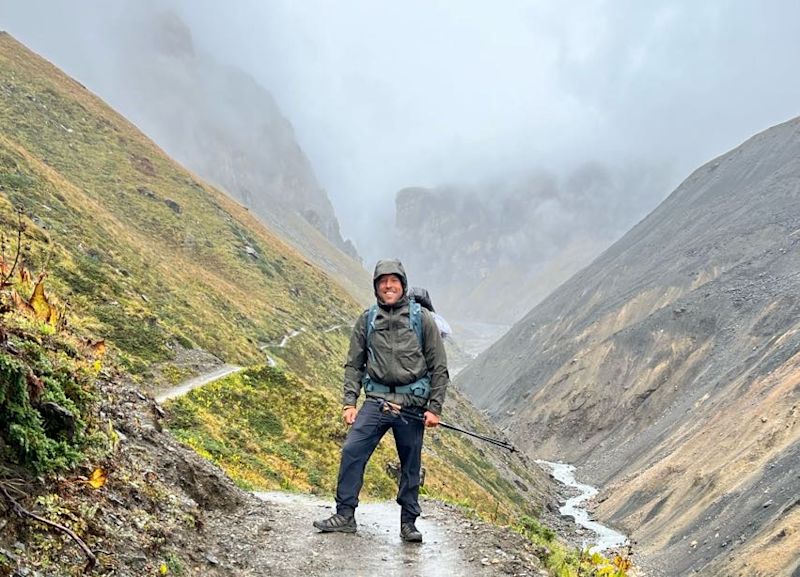
Our client Hala was nicely prepared when he met with rain on the Annapurna Circuit
Your outer layer items should be made of materials that are waterproof (or near to it) and windproof. For your trekking boots, this means leather or a synthetic fabric like Gore-Tex. For clothing, this might mean nylon or a synthetic blend.
Note that your outer layer should fit well over your mid layer, which means it should be neither baggy nor tight and restrictive.
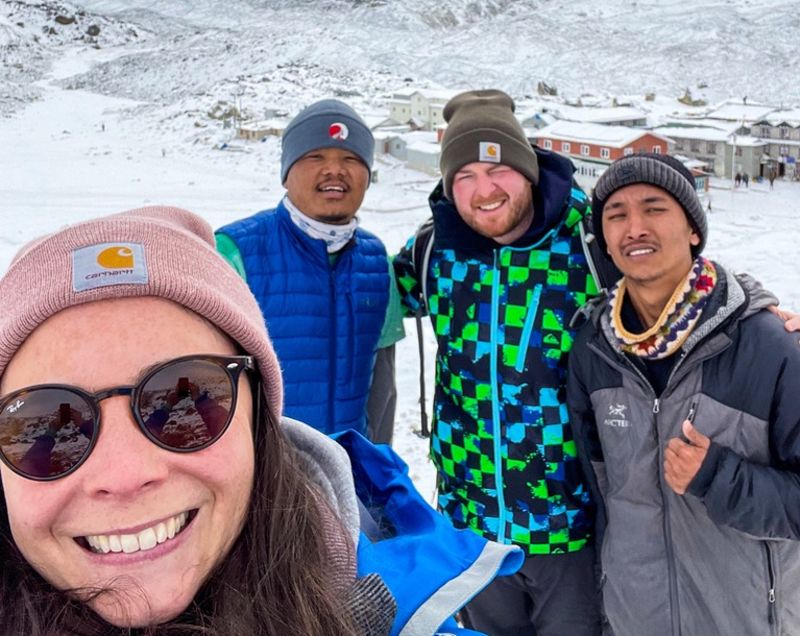
A typical outer layer packing list
A typical outer layer consists of the following items:
- Waterproof or water-resistant trekking boots. *
- A rain jacket (with vents).
- Waterproof over pants (that can be pulled over your boots). an ankle zip For example, you can wear a rain jacket and pants as your outer layer.
- Gaiters (these help to keep your boots and lower legs dry).
- Polarised, wrap-around sunglasses with high UVA and UVB protection (like sports sunglasses).
- A broad-brim sunhat or sports cap for lower altitudes (ensure it sits comfortably along with your sunglasses).
- A balaclava or a warm snood and beanie for higher altitudes.
- Waterproof thermal gloves or mittens (they should fit snugly over your inner gloves).
* What goes on your feet on a trek needs just as much attention as what goes on the rest of you. Remember that frostbite starts with your extremities, so quality trekking boots are absolutely essential on a Nepal trek. You can learn more in The best hiking boots for trekking in Nepal .
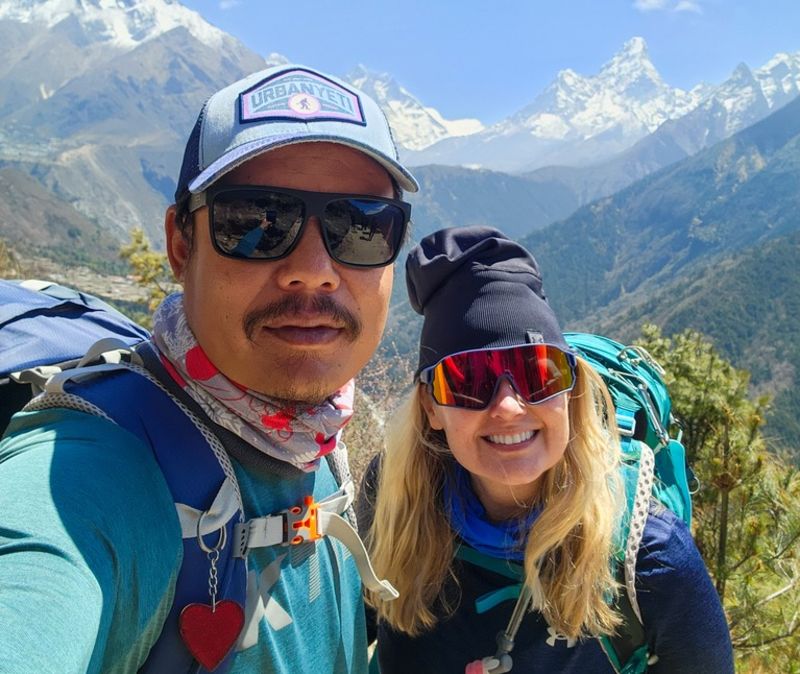
Pro tip #5: Ensure every layer you add to your outfit sits snugly but not too tightly over the layer beneath it. This means trying out the whole ensemble at home before heading to Nepal.
Don’t forget downtime clothes
It's vitally important that you don't overlook the clothing you will wear at the end of the day as well as to bed. This is when you need to be especially warm, as you won't be working out anymore and also the temperature will plummet!
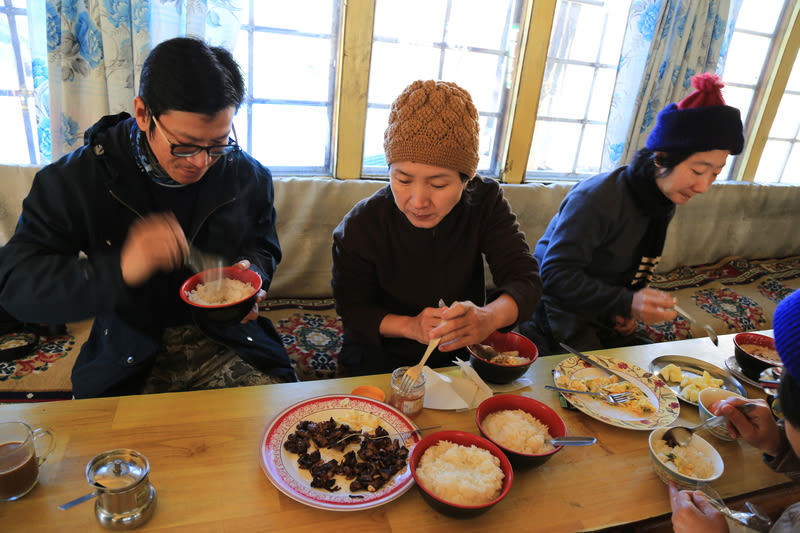
You need dry and warm clothes to put on when the day's trekking is done
A typical downtime outfit
A typical outfit for resting at camp or a teahouse consists of the following:
- Sneakers (you will need to give your boots time to air and dry).
- Thermal socks.
- Thermal long-sleeved vest.
- A long-sleeved fleece or similar.
- Thermal long johns.
- Comfortable sweatpants.
- A beanie or balaclava (not the one you trekked in, as that will be sweaty).
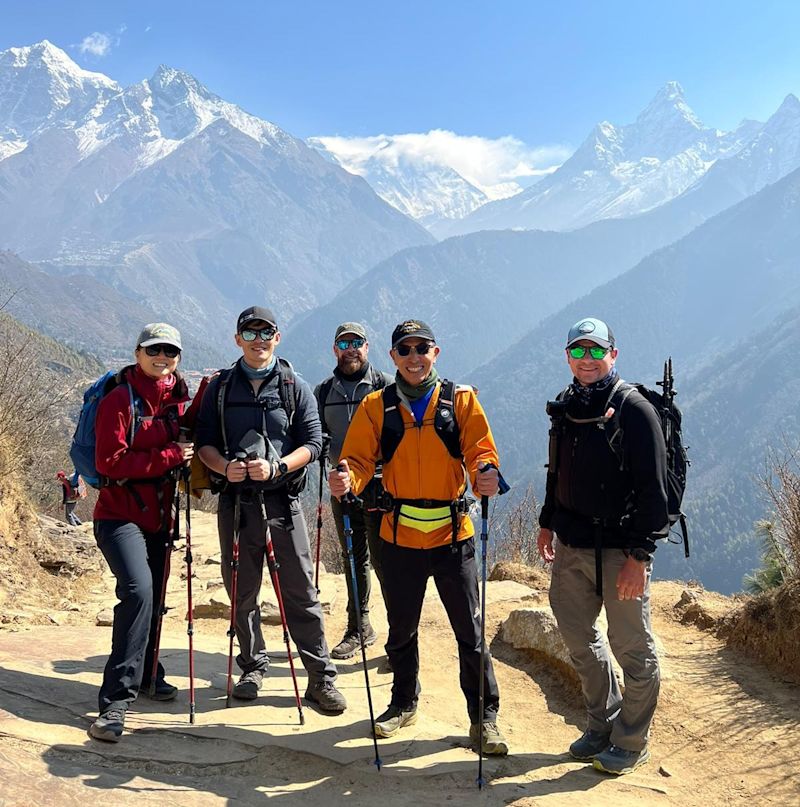
One of our finely attired 2023 Nepal trek groups 😎
Final dressing tips
Here are our final pieces of advice regarding how to dress for a trek in Nepal ...
- You should check the weather forecast just before heading off on your trek and make any necessary adjustments to your luggage.
- Work through the packing list provided by your tour operator very methodically. Do this well ahead of your trek dates so that there's time to buy missing items or arrange to borrow or rent them. Many items can be rented very affordably in Kathmandu.
- Air your clothes as soon as you arrive at your accommodation at day's end. You want to give them as much time as possible to dry.
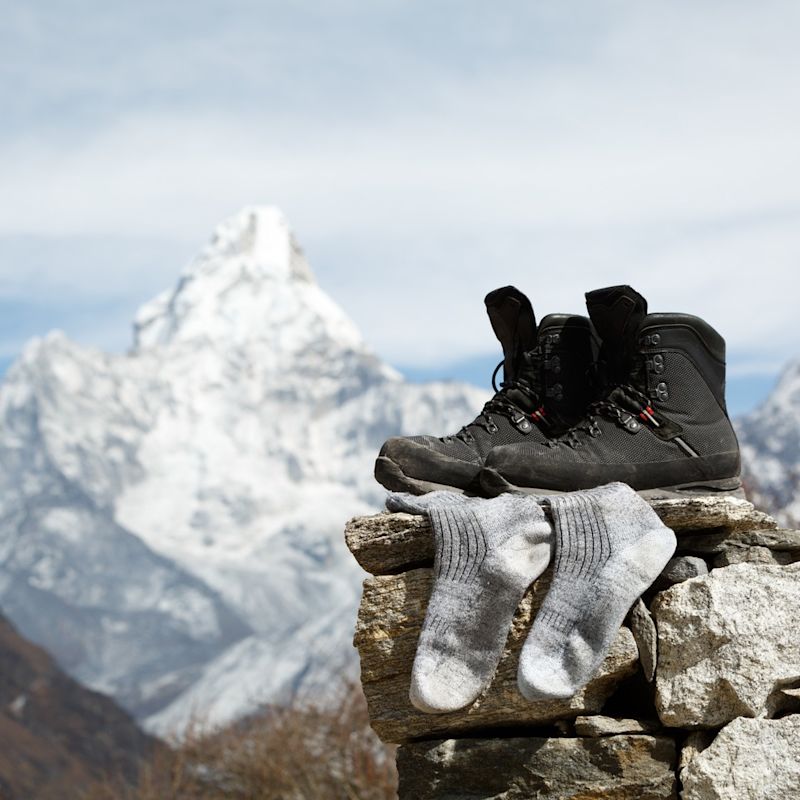
It's vital to open up and air your boots as much as possible between trekking
We hope this post has given you some useful information on how to dress for a trek in Nepal. If you'd just like a simple packing list that you can use for shopping or as a checklist, then please download our free packing list below.
Happy trekking!
Pristine Nepal Treks
Explore, Trek, and Experience Nepal's Best

Ultimate Guide to Buying and Renting Trekking Gear in Kathmandu

Trekking is a thrilling adventure that allows us to connect with nature, challenge ourselves, and discover new horizons. Whether you’re an avid trekker or a beginner taking your first steps on the trail, one thing remains constant: the significance of proper trekking gear. In this comprehensive guide, we will dive into the world of buying and renting trekking gear in Kathmandu, a city renowned as a mecca for trekkers from around the globe. Let’s explore the crucial role of gear and why Kathmandu stands out as an ideal starting point for your trekking journey.
Importance of Trekking Gear and Equipment
Imagine embarking on a multi-day trek through rugged terrains, unpredictable weather, and varying altitudes without the right equipment. Tough right? Hence, trekking gear isn’t just about convenience; it’s about safety, comfort, and overall enjoyment of your adventure. The proper clothing, footwear, and accessories can make the difference between an exhilarating journey and a daunting struggle. From moisture-wicking base layers that regulate your body temperature to sturdy hiking boots that provide grip and support, each piece of gear plays a vital role in ensuring a successful and enjoyable trek.
Kathmandu as a Trekking Hub
Located in the heart of Nepal, Kathmandu is more than just a bustling city; it’s a gateway to some of the world’s most renowned trekking routes. The city’s unique blend of vibrant culture and stunning landscapes makes it a favorite among trekkers seeking both adventure and immersion. As you prepare to embark on your trekking expedition, Kathmandu offers a wide range of options for buying and renting trekking gear and equipment you need. From traditional markets to specialized outdoor equipment stores, the city caters to trekkers of all levels and preferences.
In the upcoming sections of this guide, we’ll dive deeper into the types of trekking gear you’ll need, the benefits of renting versus buying, and the various factors to consider when making your choices. Whether you’re planning a trek to Everest Base Camp or exploring the mystical trails of Annapurna , understanding the intricacies of trekking gear in Kathmandu will undoubtedly enhance your overall trekking experience. Let’s embark on this journey together and equip you with the knowledge to make informed decisions that will shape your next adventure in Nepal.
Where to find Trekking Gear and Equipment in Kathmandu?
When it comes to acquiring trekking gear and equipment in Kathmandu, the city offers a diverse range of options to cater to every trekker’s needs and preferences. Whether you’re seeking specialized outdoor stores, authentic local markets, or the convenience of online shopping, Kathmandu has it all.
Thamel – A tourist hub
Thamel, a vibrant and bustling neighborhood in Kathmandu, stands as a focal point for trekkers seeking gear. This district is a treasure trove of outdoor equipment shops, rental stores, and boutiques. As you walk through the narrow streets of Thamel, you’ll find an array of shops offering everything from high-quality hiking boots to insulated jackets designed for harsh mountain climates. Thamel is not just a shopping destination; it’s an immersive experience where you can interact with fellow trekkers, gather insights, and find the gear that suits your needs.

Outdoor Equipment Stores
Kathmandu boasts a multitude of outdoor equipment stores that cater specifically to trekkers and adventurers. These stores are staffed by knowledgeable experts who understand the nuances of different gear items and can provide valuable advice based on your trekking plans. Here, you’ll find an extensive selection of trekking apparel, footwear, backpacks, camping equipment, and more. These stores often carry trusted international brands alongside local alternatives, ensuring you have a wide range of choices to select from.
Local Markets
For those who wish to experience the authenticity of Kathmandu’s local culture while acquiring trekking gear, the city’s markets are a hidden gem. Local markets offer a unique blend of traditional clothing, handmade accessories, and gear essentials. Exploring these markets provides you with a chance to interact with local artisans and gain insight into the craftsmanship behind each product. While the variety might not be as extensive as specialized stores, the charm of discovering handcrafted items can be an unforgettable part of your trekking journey.
Renting vs. Buying Trekking Gear: Making Informed Choices
As you prepare for your trekking adventure in Nepal, one of the key decisions you’ll face is whether to rent or buy your trekking gear. Both options have their own set of advantages and considerations, and understanding these factors of buying and renting trekking gear will help you make the best choice for your needs and preferences.
Advantages of Renting
Cost-Effective Option: Renting trekking gear can be more budget-friendly, especially if you’re a casual trekker or if you’re embarking on a one-time adventure. Renting allows you to access high-quality gear without the upfront investment of purchasing.
Travel Convenience: Renting eliminates the need to carry bulky gear from your home country. This is particularly advantageous for international trekkers who want to minimize luggage weight and hassle.
Specialized Gear: For high-altitude treks or specialized activities, renting gives you access to gear that you might not use frequently. This prevents unnecessary purchases and storage concerns.
Minimal Maintenance: Rented gear often comes professionally cleaned and maintained, saving you the effort of post-trek cleaning and maintenance.
Benefits of Buying
Long-Term Investment: If you’re a frequent trekker or plan to undertake multiple treks, buying gear can be a more cost-effective option in the long run. Your initial investment pays off over time.
Personal Comfort: Purchased gear allows you to find items that fit you perfectly and suit your personal preferences. This level of customization can enhance your comfort during the trek.
Familiarity: Owning your gear gives you a chance to become familiar with each item, making you more efficient in using and maintaining them during the trek.
Sustainability: Buying high-quality gear with a long lifespan promotes sustainability by reducing the need for repeated production and consumption.
Considerations for Choosing
- Trek Frequency: Assess how often you plan to go trekking. If it’s an occasional activity, renting might be more practical. For frequent trekkers, buying might be a better investment.
- Budget: Determine your budget for gear. While renting is initially cheaper, buying can be more cost-effective over time if you trek frequently.
- Trek Duration: The duration of your trek plays a role. For longer treks, renting can accumulate costs, whereas owning gear might be more feasible.
- Personal Preference: Consider how much importance you place on comfort and familiarity. If you value these aspects highly, buying might be more suitable.
- Storage: Think about where you’ll store your gear when not in use. If storage space is limited, renting could be a more practical choice.
In the end, the decision between buying and renting trekking gear depends on your individual circumstances and priorities. Take into account factors such as your budget, trekking frequency, and personal preferences.
What gears should I rent in general?
Here are some essential items that are commonly rented for trekking adventures in Nepal:
Sleeping Bags
A quality sleeping bag is crucial for a comfortable and restful night’s sleep during your trek. Depending on the altitude and weather conditions of your trekking route, you’ll need a sleeping bag that offers the right level of insulation. Renting a sleeping bag ensures you have the appropriate gear without the need for a significant investment. It also saves you from carrying a bulky sleeping bag in your luggage.
Renting a sleeping bag can be around $1 to $4 per day, based on the temperature rating and quality.

Down Jackets
Down jackets are designed to provide exceptional warmth without adding excessive weight or bulk. These jackets are essential for keeping you cozy during chilly evenings and high-altitude conditions. Renting a down jacket is an excellent choice, especially if you’re trekking in colder regions. It also saves you from the hassle of packing and carrying a bulky jacket when you’re not trekking.
Renting a down jacket might cost approximately $1 to $3 per day, depending on the quality and warmth of the jacket.
Trekking Poles
Trekking poles offer stability, balance, and reduced strain on your knees and joints during steep ascents and descents. Renting trekking poles can be advantageous, particularly if you’re not a regular trekker or if you’re unsure about incorporating them into your future treks. They can significantly improve your trekking experience, especially on uneven terrains.
Renting trekking poles could be roughly $1 to $2 per day for a pair.
Note: In addition to sleeping bags, down jackets, and trekking poles, you may also consider renting other gear items based on your specific needs and preferences.
Renting gear not only offers cost savings but also allows you to try out different brands and models to find what works best for you. Additionally, if you’re organizing your trek through a trekking agency, they often provide gear rental services as part of their package. As you prepare for your trek, assess your needs, the expected weather conditions, and the duration of your adventure to make informed decisions about which gear items to rent.
Tips while buying and renting trekking gear in Kathmandu
Navigating the process of buying or renting trekking gear in Kathmandu requires careful consideration and awareness. To ensure you make the best choices for your trekking adventure, here are some valuable tips to keep in mind:
- Research and Compare: Before making any decisions, research the gear you need and compare prices from different stores. This will give you a better understanding of the market rates and help you identify any potential overpricing.
- Quality Matters: Whether you’re buying or renting, prioritize quality. Well-made gear can enhance your comfort and safety during the trek. Look for reputable brands known for their durability and performance.
- Check for Authenticity: Be cautious of counterfeit products, especially when buying branded gear. Purchase from authorized dealers and reputable stores to ensure you’re getting authentic items.
- Try Before You Buy/Rent: When possible, try on the gear before making a commitment. Proper fit and comfort are crucial, especially for items like trekking boots and backpacks. This is a crucial step to avoid discomfort during your trek.
- Inspect the Condition: If you’re renting, thoroughly inspect the condition of the gear before accepting it. Check for any damages or defects and make sure zippers, straps, and closures are in good working condition.
- Ask for Recommendations: Consult fellow trekkers, tour guides, or online forums for recommendations on trusted stores and rental services. Word-of-mouth feedback can provide valuable insights.
- Check for Cleanliness: When renting, ensure that the gear is clean and well-maintained. Sleeping bags, jackets, and tents should be clean and odor-free for a pleasant trekking experience.
- Know the Return Policies: Understand the terms and conditions of renting or buying, including return policies, warranties, and any additional fees. This will prevent any surprises later on.
- Consider the Trek’s Requirements: Different treks have different requirements in terms of gear. Research the climate, altitude, and terrain of your trekking route to ensure you have the appropriate gear.
- Pack Lightly: If you’re renting, pack only the essentials and rent the rest. Carrying unnecessary gear can add weight and reduce your mobility on the trail.
- Negotiate Smartly: While negotiating prices is common in local markets, do so respectfully and with awareness of fair market prices. Remember that quality often comes at a reasonable cost.
- Test the Gear: If possible, test the gear before embarking on your trek. Walk around in rented boots, try on jackets, and adjust backpacks to ensure they’re comfortable and functional.
- Ask for Expert Advice: Seek advice from experienced staff at outdoor equipment stores. They can provide valuable insights based on their knowledge and expertise.
- Stay Open to Local Alternatives: While popular international brands are widely available, consider local alternatives that offer quality at a reasonable price.
- Keep Environmental Sustainability in Mind: Opt for gear that is durable, repairable, and sustainable. Minimize single-use items and practice responsible trekking.
By following these tips, you’ll be well-prepared to navigate the process of buying or renting trekking gear in Kathmandu. Making informed choices ensures that you have the right equipment to make your trekking adventure safe, comfortable, and unforgettable.
FAQs regarding Buying and Renting Gears in Kathmandu
1. Can I rent gear for high-altitude treks?
Yes, you can rent gear suitable for high-altitude treks in Kathmandu. Many rental stores offer specialized gear such as insulated jackets, sleeping bags, and equipment designed to withstand extreme conditions.
2. Should I buy or rent gear if I plan to trek frequently?
If you plan to trek frequently, buying gear might be a more cost-effective option in the long run. While the initial investment is higher, owning gear can save you money over multiple treks. However, consider factors like storage space and the frequency of your treks before making a decision.
3. Can I return rented gear before the trek ends?
Most rental stores have specific terms regarding returns and refunds. Before renting, inquire about their policies for returning gear early or in case of changes in your trekking plans.
4. Is it necessary to haggle over prices in Thamel’s markets?
While bargaining is common in Thamel’s markets, approach it respectfully and with awareness of fair market prices. Some stores might have fixed prices, while others might be open to negotiation. Trust your judgment and negotiate if you believe the price can be adjusted.
5. What’s the best time to buy or rent gear in Kathmandu?
Kathmandu’s trekking gear shops are open year-round. However, the best time to visit is during the pre-trekking seasons, which are spring (March to May) and autumn (September to November). During these times, you’ll find a wide selection of gear and experienced staff to assist you.
6. Can I rent gear directly from trekking agencies?
Yes, many trekking agencies offer gear rental services as part of their trekking packages. This can be a convenient option as they provide gear that’s appropriate for the specific trek you’re undertaking.
7. Is it safe to buy or rent gear from local markets?
Yes, buying or renting gear from local markets can be safe if you exercise caution. Stick to reputable stores and avoid overly cheap deals that seem too good to be true. Consulting with experienced trekkers or seeking recommendations can help you make informed choices.
Leave a Reply Cancel reply
You must be logged in to post a comment.

Kala Patthar Trek
Trekking & Expedition
Trekking gear list

Trekking in the Nepal Himalayas is a dream come true for many adventure seekers. With towering peaks, breathtaking landscapes, and vibrant culture, Nepal offers a unique and unforgettable trekking experience. However, a successful trek requires proper gear and clothing to ensure comfort, safety, and performance in challenging terrain and climate conditions. In this article, we will explore the essential trekking gear and clothing for trekking in Nepal Himalaya.
Trekking Boots:
Trekking boots are one of the most important pieces of gear for trekking in Nepal. The rugged terrain, steep inclines, and unpredictable weather conditions demand durable and comfortable boots that provide ample support and traction. Choose boots that are waterproof, have a sturdy sole with deep lugs for grip, and are comfortable to wear for long hours.
Trekking Poles
Trekking poles are another must-have accessory for trekking in Nepal Himalaya. They help distribute weight, reduce the impact on knees and ankles, and provide additional stability on uneven terrain. Look for lightweight, collapsible poles that can be easily stored in your backpack when not in use.
Your backpack is your lifeline on a trek, and it’s crucial to choose one that’s comfortable, durable, and spacious enough to carry all your gear and clothing. Look for a backpack with padded shoulder straps, a supportive hip belt, and multiple compartments to keep your gear organized.
Layering is key when it comes to clothing for trekking in Nepal Himalaya. Temperatures can vary significantly depending on the altitude and time of day, so it’s essential to have a mix of lightweight, breathable, and warm layers to adjust accordingly. Here are some clothing items to consider:
Base Layers:
These are the first layer of clothing that comes in contact with your skin. Choose breathable, moisture-wicking materials that help regulate body temperature and keep you dry. Synthetic or merino wool base layers are ideal.
Insulation Layers:
These are mid-layer clothing items that provide warmth and insulation. Fleece jackets, down jackets, or synthetic insulated jackets are good options.
Outer Layers:
These are the outermost layer of clothing that protects you from wind, rain, and snow. A waterproof, breathable jacket and pants are essential for trekking in Nepal Himalaya.
Accessories:
Hats, gloves, and neck gaiters are essential for protecting your extremities from cold and wind. Sunglasses are also a must-have to protect your eyes from the harsh sun and snow glare.
Sleeping Bag:
A good quality sleeping bag is essential for a comfortable night’s sleep on a trek. Look for a sleeping bag that’s rated for the expected temperatures and is lightweight and compressible for easy storage in your backpack.
A headlamp is an essential item for trekking in Nepal Himalaya, especially when you’re trekking in the early morning or late evening. Choose a headlamp with a long battery life and a bright beam that can illuminate your path in the dark.
Water Bottles and Hydration System
Staying hydrated is crucial when trekking in Nepal Himalaya. Carry at least two water bottles or a hydration system with a capacity of 2-3 liters to ensure you have access to clean drinking water at all times. Consider carrying a water filter or purification tablets to treat water from natural sources.
In conclusion, trekking in Nepal Himalaya is a once-in-a-lifetime experience, and having the right gear and clothing can make all the difference. By investing in high-quality and appropriate gear, you can ensure that you’re comfortable, safe, and ready to take on the challenges of this epic adventure. Remember to do your research, consult with experienced trekkers, and choose gear and clothing that suits your specific
You may also like...

Short Trek in Nepal

Mount Everest Images

Traffic Jam on Mount Everest
Leave a reply cancel reply.
Your email address will not be published. Required fields are marked *
Save my name, email, and website in this browser for the next time I comment.
WhatsApp us

What to pack for a trekking trip to Nepal
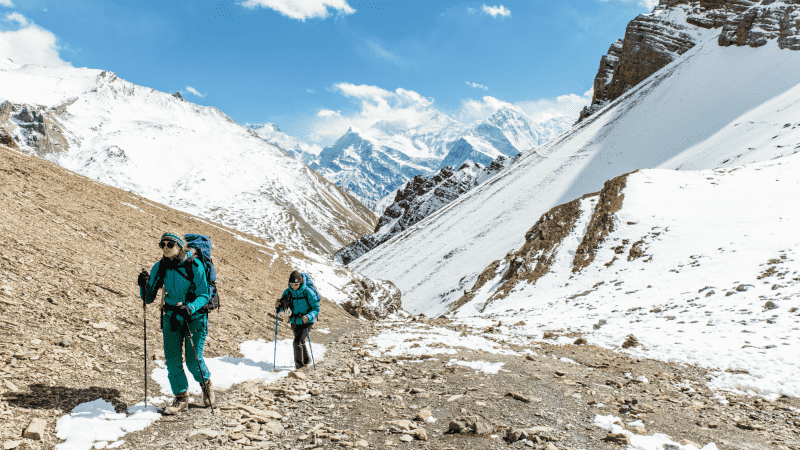
Nepal is a bucket list country for so many reasons. From the great sweeping Himalayan range to the culture and villages of the foothills and vibrant traveller scene in Kathmandu and Pokhara.
But if you are heading to Nepal , it’s most likely because you’ve dreamed about a trek through one of the world’s highest mountain ranges. Everest Base Camp and the Annapurna Circuit are two of the most popular, but there are tons of trekking trails to choose from here. Many get you right into the heart of the mountains, and each evening you will experience the wonderful Nepali hospitality while staying in the local tea houses.
Packing for Nepal can be a tricky one. You need to travel light, but while also ensuring you have enough clothing for all seasons, as the lowlands can often be tropical while the mountain trails can get well below freezing. After three trips to the country and treks on many of the wonderful Himalayan trails , here are some things which I’d describe as essentials for your trip.
The really important stuff
Three things you really can’t forget when trekking in Nepal is your passport, trekking permits and insurance details. Your trekking permits will be checked at various points along the trail, and the other two are essential in case of emergency. Keep them safe in a waterproof pouch!
A sleeping bag
Teahouses are great and cosy accommodation options, but they only supply blankets, which are unwashed between seasons and are often a little grubby. Plus, at the higher altitudes they’re not enough to keep you warm on their own, so you’ll need to carry a sleeping bag. Depending on the altitude and season you are travelling in, anything from a -30 to a 0-degree Celsius bag is sufficient. I trekked the Annapurna Circuit in early March and my -15C bag didn’t keep out the cold when it got down to -25C degrees at the high altitudes. Make sure you are prepared for it to get colder than you expect!
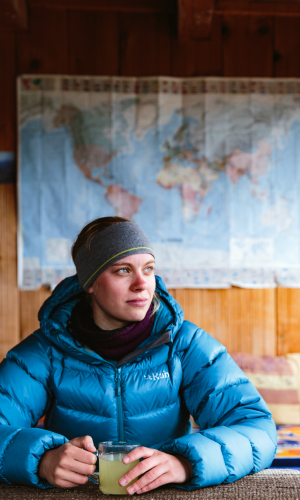
Photo captured by Annapurna Mellor
RELATED: WHAT TO KNOW BEFORE HIKING THE ANNAPURNA CIRCUIT
A warm jacket
A warm jacket is another vital piece of kit you will need. Most trekkers opt for down jackets, which are certainly a very warm option, and they also stuff down into a small pack for days when you don’t need to wear it. If it’s not something you want to invest in, you can buy or borrow down jackets in Nepal at very reasonable prices.
Worn-in hiking shoes
Of course, if you are heading out to Nepal to hike, you are going to need a good pair of hiking shoes. I recommend wearing your hiking boots a few times before you start your trek to stop them giving you some nasty blisters! Ankle boots can also offer essential support when on the trail and getting a pair that’s waterproof will also help to stop your feet from getting soggy if you have to trek through snow or heavy rain.
GO NOW: HIKE THE ANNAPURNA CIRCUIT ON THIS 16-DAY EXPLORATION
Toilet paper
In Nepal (and much of Asia ), toilet paper is replaced with water washing. When trekking in Nepal, you’ll occasionally find spray guns, but more often water buckets which you can use to wash after using the toilet. I recommend trying these methods out, they are actually very hygienic, and you will be looking after the environment by not burdening locals with toilet roll. When you get to higher altitudes, however, often there is no running water, or the water might freeze overnight – so using toilet paper on these days is essential. Take a couple of rolls with you and you can always buy extra on the trails.
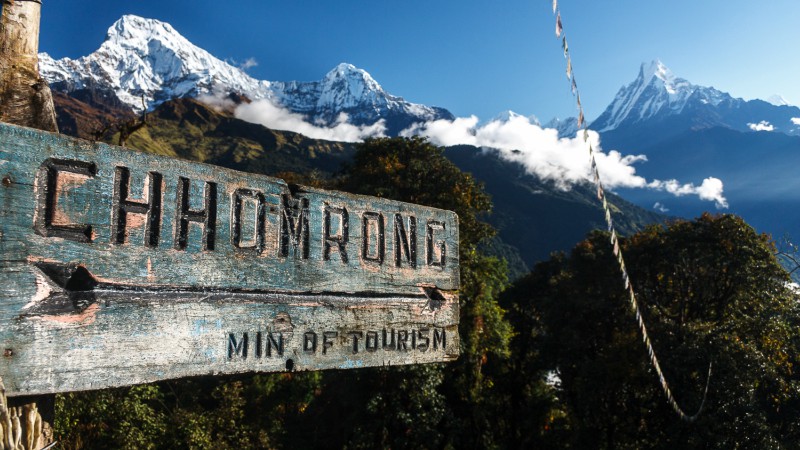
A reusable water bottle
While this is not technically essential, as you can buy bottled water for the duration of the trek, I think it is essential to any trekker who cares about the environment – as we all should. Nepal’s trekking trails suffer from a massive plastic problem, and it is the responsibility of all trekkers to aim to reduce this. A reusable water bottle can be used to carry water and you can refill the bottles at stations on the major trekking routes. You can also carry water purifying tablets and a Steri-pen to purify the tap water.
SUBSCRIBE TO OUR NEWSLETTERS FOR THE LATEST ASIA OFFERS, NEWS AND COMPETITIONS
Hiking in Nepal is drop-dead gorgeous. No matter which trail you choose – Everest, Annapurna, Langtang or even shorter treks in the foothills – you are going to be awestruck by the beauty of the Himalayas. To capture it all (and convince your friends and family at home that they should book a trek to Nepal too) you are going to want to take a camera along. Whether you’re a DSLR user or just have a compact camera, it’s important to take the lightest gear possible. Unless you want to carry the weight yourself, leave your tripod and extra heavy lenses back in Kathmandu. You will find yourself reaching for a standard wide lens anyway. Also, don’t forget extra batteries and plenty of memory cards!
Sun cream, sunglasses and a sunhat
High altitudes and clear mountain air mean the sun is strong when trekking in Nepal. Even if it’s freezing cold and you are walking through snow, you could be getting burnt. Bring a small bottle of high factor sun cream to protect your skin. A pair of sunglasses will prevent glare from the snow in your eyes and a sun hat will help with heat stroke.
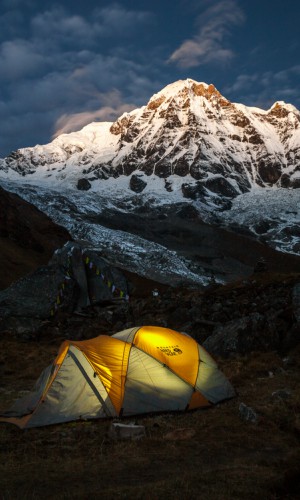
RELATED: 5 IMPORTANT TIPS FOR TRAVELLING SOLO IN NEPAL
Lip balm and moisturiser
The mountain air really dries out your skin and lips and having a little tube of moisturiser and something to protect them both will really come in handy.

A head torch
Often there will be no power in the bedrooms and bathrooms of the teahouses, so having a head torch is really important. On some of Nepal’s treks, you might also be trekking in the dark (for example at Poon Hill on the ABC Trek or on the Thorong La Pass on the Annapurna Circuit Trek) and it is important to have a head torch for these days, so you can see the path.
TAKE ME THERE: EXPERIENCE EVEREST BASE CAMP ON THIS 15-DAY FAVOURITE
Cash securely stored
You have to carry all the cash you need while trekking, as on most of the trails there are no ATMs. If you are on a long trek, it is likely you will be carrying hundreds of dollars of cash in Nepali rupees. You are going to want to store it securely in your luggage. I recommend splitting your cash up, carrying some of it about your person, and some of it in your day bag. Splitting it up between your backpack is also a good idea. Perhaps some in a pair of socks, and another lot in your wash bag. That way, if one item is stolen or gets lost, you will have other sets of money elsewhere to keep you going.
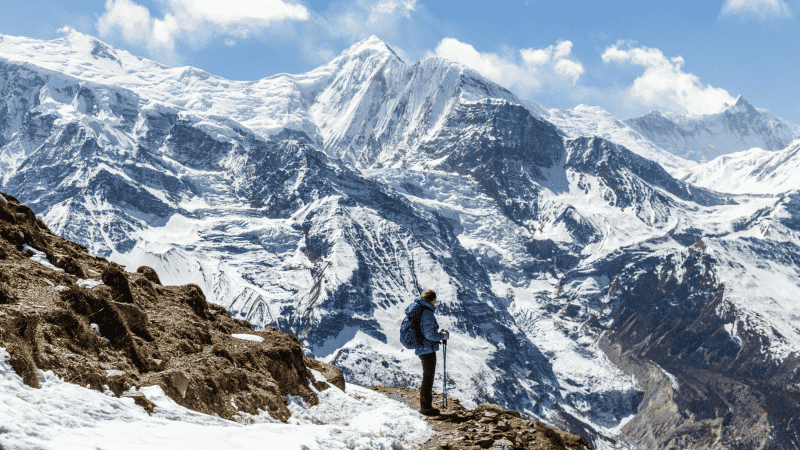
A pack of cards
Computers, TVs and Wi-Fi are virtually non-existent on the trail (or at least the Wi-Fi is not quite surfing quality). So how do you spend your evenings? Playing cards is a popular option both with other trekkers, the porters and local Nepalis. Ask your guides and porters to teach you some local games, there are some really fun Nepali games which can keep you occupied for the hours in front of the fire before bed.
RELATED: WHAT TO EXPECT ON A TREK TO EVEREST BASE CAMP
A book and diary
Another way you can spend your evening is by reading and writing. Keeping a travel diary is well worth it if you enjoy writing, as you will remember much better the feelings and thoughts of each individual day on the trail. On longer hikes, often the days can blur into one, and you can forget which villages you visited on each day – so a diary can really help you keep a record. A book is always a good way to pass time. In Kathmandu and Pokhara, you’ll find many great bookstores selling books about mountaineering, and Nepal, which all make very insightful reads when trekking.
Trekking poles
Trekking poles are something I am so glad I chose to bring. Not only did they really help when hiking through snow, they were also a blessing for my knees and ankles, as poles really take the pressure off when hiking up and down hills (which you will do a lot of in Nepal!). It’s not necessary to invest in an expensive pair if you are only going to use them while trekking in Nepal, and you can buy them very cheaply in trekking shops in Nepal’s cities.
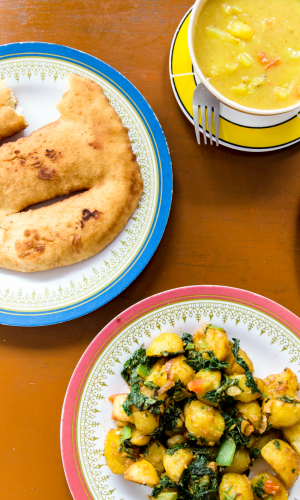
FEELING INTREPID? TACKLE EVEREST AND ANNAPURNA ON THIS 31-DAY EPIC
Other essentials
Of course, there are plenty of other things you’ll be stuffing your bag with! For trekking clothes, things that are light and quick to dry are best, as well as things that can be layered. At higher altitudes, I often ended up layering many base layers for extra warmth. Slippers or light shoes are also very useful for the evenings when you don’t want to be walking around in your hiking boots. For colder weather, don’t forget a pair of warm gloves and a warm hat too.
Snacks are another way you can fill your pack, and they can be bought cheaply in Kathmandu and Pokhara. While food is quite reasonably priced on Nepal’s trekking trails, snacks like chocolate bars get quite costly the higher you get. If you know you crave chocolate after a long, hard day – make sure to carry a few mini bars with you. Although be aware of the plastic wrappers which you will be leaving behind on the trail, it’s always better to eat local dried fruit and food cooked in the teahouses which don’t leave litter on the trail.
You can buy all of these essentials and trekking clothing in Kathmandu and Pokhara for very good prices. If you are buying new gear for the trail and don’t want to take it back home with you after the trek, many of the trekking companies in Nepal take clothing donations which are used to clothe the guides and porters.
Love the idea of an epic hiking holiday? Check out our full range of walking and trekking trips .
Feeling inspired?
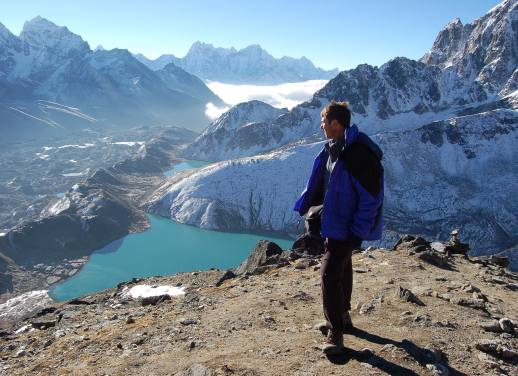
Annapurna Mellor
Annapurna Mellor is a photographer, writer and storyteller. Her travels have taken her across Asia, Northern Africa, along the Trans-Siberian Railway and around Europe - always taking the road less travelled and always aiming to go a little deeper into the heart of local culture and people. Her photography work has been featured in National Geographic Traveller Magazine, Lonely Planet Guide Books and in campaigns for many travel brands around the world. Although she is usually dreaming about adventures afar, she is based, most of the time, in Manchester, England.
You might also like
How to visit europe in the off-season, best places to travel in march, best places to travel in may, best places to travel in february, best places to travel in april, best places to travel in june, how to secure your inca trail permit the..., best places to travel in july, best places to travel in january, best places to travel in november, best places to travel in october.

Nepal Trekking Gear List
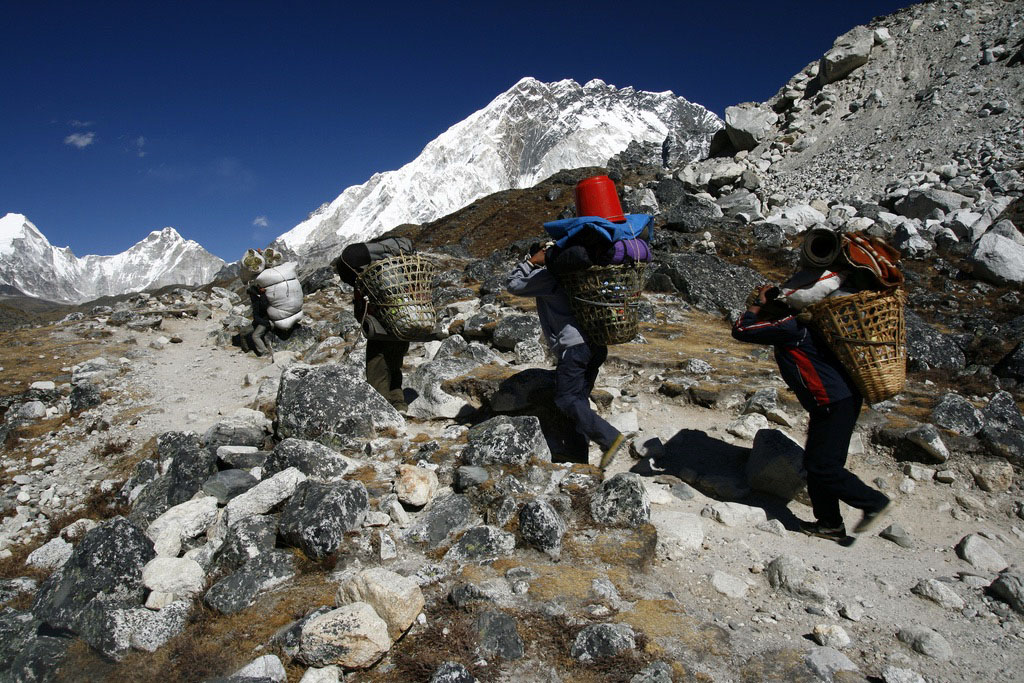
Ali Beittoei
The following items are recommended for a typical multi-day trek in Nepal. Some treks have teahouses throughout while others require camping and the necessary equipment. The size of your backpack depends primarily on whether or not you have porters on your trip. Those with porters usually carry a daypack with water, snacks, a camera, and rain gear. Those without porters will need a larger pack to fit all of their personal supplies and sleeping equipment. Certain items can be purchased in Nepal but buying critical pieces of outdoor equipment is not recommended. For more, see Buying and Renting Trekking Gear in Kathmandu .
- Tent (necessary for treks with camping)
- Sleeping bag (–15° bag will suffice on most treks)*
- Sleeping pad
*Many nights at lower elevations will be hot, but because there will likely be a few very cold nights at high elevation a cold weather bag is unavoidable. At low elevations you can sleep with the silk liner only and using it later extends the life of your bag (oil from skin is bad for expensive down).
- Backpack (size depends on whether or not you have porters)
- Hiking boots* (break them in beforehand)
- Camp shoes (your reward after a long day)
- Wool socks (bring a few pairs of varying thickness)
- Lightweight trekking pants
- Trekking shorts
- T-Shirts (lightweight wool is great)
*You will be hiking through a wide range of terrain from mud in warm weather to snow in cold weather. The trail will be rocky throughout. The safest bet for Nepal trekking footwear is full backpacking boots, which provide good support and protection from the elements. If there is a high pass on your trek, you may be walking on snow and the conditions will be cold. A good compromise is to bring backpacking boots and trail shoes—you can use the trail shoes for camp and interchange the two depending on the conditions and how you feel.
Cold Weather
- Long underwear/Wool thermals
- Waterproof jacket and pants
- Heavyweight pants for high elevations (also good for camp)
- Heavy down jacket (can be rented in Kathmandu)
- Winter gloves
Accessories
- Water purification (pump, tablets, or SteriPen; bring from home)
- Water bottles (at least 3 liters total capacity)
- Baseball cap (the sun is strong at all elevations)
- Hiking poles (lessen the impact on your joints)
- Sunglasses (essential when you cross snow line)
- Head lamp with extra batteries
- Reading materials (Kindle may be best)
- Journal and pens
- Camera with extra batteries
- Daypack (for your rain jacket, snacks, camera, etc.)
- Heavy-duty duffle bag (preferred by porters)
- Gators (many people wear them but they are not mandatory)
Personal Supplies
- Hand sanitizer
- Toiletries (toothbrush, toothpaste, deodorant, floss, etc.)
- Biodegradable bar soap
- Face/body wipes
- Biodegradable washing liquid
- Throat lozenges, lip balm
- Medications (Ibuprofen, others if necessary)
- Duct tape (fixes just about everything, at least temporarily. To avoid carrying an entire roll wrap the desired amount around a pencil)
- First aid kit (with moleskin for blisters)
- Extra passport photos and photocopies of your passport
Learn More About Nepal
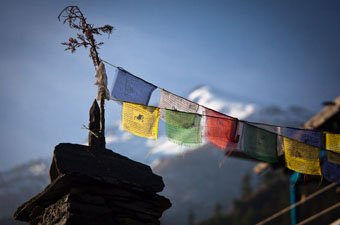
Nepal Adventure Travel Guide
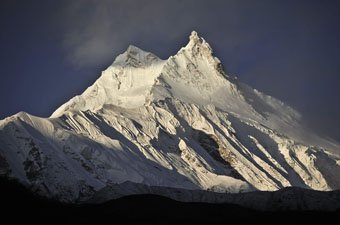
Manaslu Circuit Trek
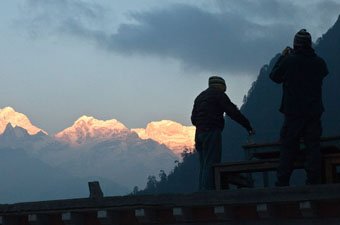
Trekking Seasons in Nepal
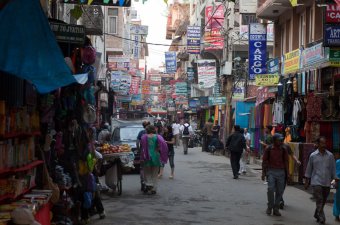
Buying and Renting Trekking Gear in Kathmandu
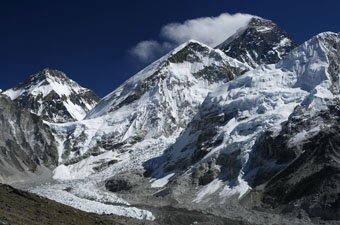
Everest Base Camp Trek
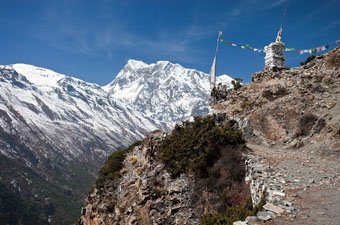
Annapurna Circuit Trek

Mobile Menu
Megamenu - desktop hamburger menu.
- Hiking Gear
- Backpacking Gear
- Biking Gear
- Camping Gear
- Footwear Reviews
- Climbing Gear
- Skiing Gear
- Winter Gear Reviews
- In-Depth Gear Reviews
- Hiking Shoes
- Hiking Boots
- Trail Running Shoes
- Mountain Bike Shoes
- Approach Shoes
- Climbing Shoes
- Beginner Climbing Shoes
- Mountaineering Boots
- Winter Boots
- Rain Jackets
- Down Jackets
- Synthetic Jackets
- Fleece Jackets
- Hardshell Jackets
- Softshell Jackets
- Windbreaker Jackets
- Ski Jackets
- Winter Jackets
- Hiking Pants
- Hiking Socks
- Trekking Poles
- Baby Carriers
- Running Vests
- Backpacking Tents
- Backpacking Packs
- Backpacking Sleeping Bags
- Backpacking Sleeping Pads
- Backpacking Stoves
- Backpacking Food
- Water Filters
- Altimeter Watches
- Handheld GPS
- Mountain Bike Helmets
- Mountain Bikes
- Mountain Bikes Under $1,000
- Mountain Bikes Under $2,000
- Gravel Bikes
- Bike Brands
- Kids' Bikes
- Hitch Bike Racks
- Camping Tents
- Rooftop Tents
- Camping Sleeping Bags
- Camping Mattresses
- Camping Chairs
- Camping Stoves
- Duffel Bags
- Rock Climbing Shoes
- Climbing Helmets
- Climbing Harnesses
- Climbing Quickdraws
- Belay Devices
- Climbing Ropes
- Climbing Backpacks
- Winter Gloves
- 4-Season Tents
- Ski Helmets
- Ski Goggles
- Ski Backpacks
- All-Mountain Skis
- Ski Bindings
- Backcountry Skis
- Backcountry Ski Boots
- Skis for Beginners
- Hardpack Skis
- Mirrorless Cameras
- Full-Frame Cameras
- DSLR Cameras
- Point-and-Shoot Cameras
- Travel Cameras
- DSLR Lenses
- Mirrorless Lenses
- Lofoten Islands
- Lofoten Hiking
- Hardangervidda
- Jotunheimen
- 10 Great Norway Hikes
- Public Huts
- Torres del Paine
- Chalten and Glaciares
- Lake District
- Patagonia National Park
- Milford Sound
- Abel Tasman
- Marlborough
- Great Walks
- Adventure Towns
Add adventure to your inbox
- Privacy Policy
- Terms of Service
© 2024 Switchback Travel. All Rights Reserved. No part of this site may be reproduced without our written permission.
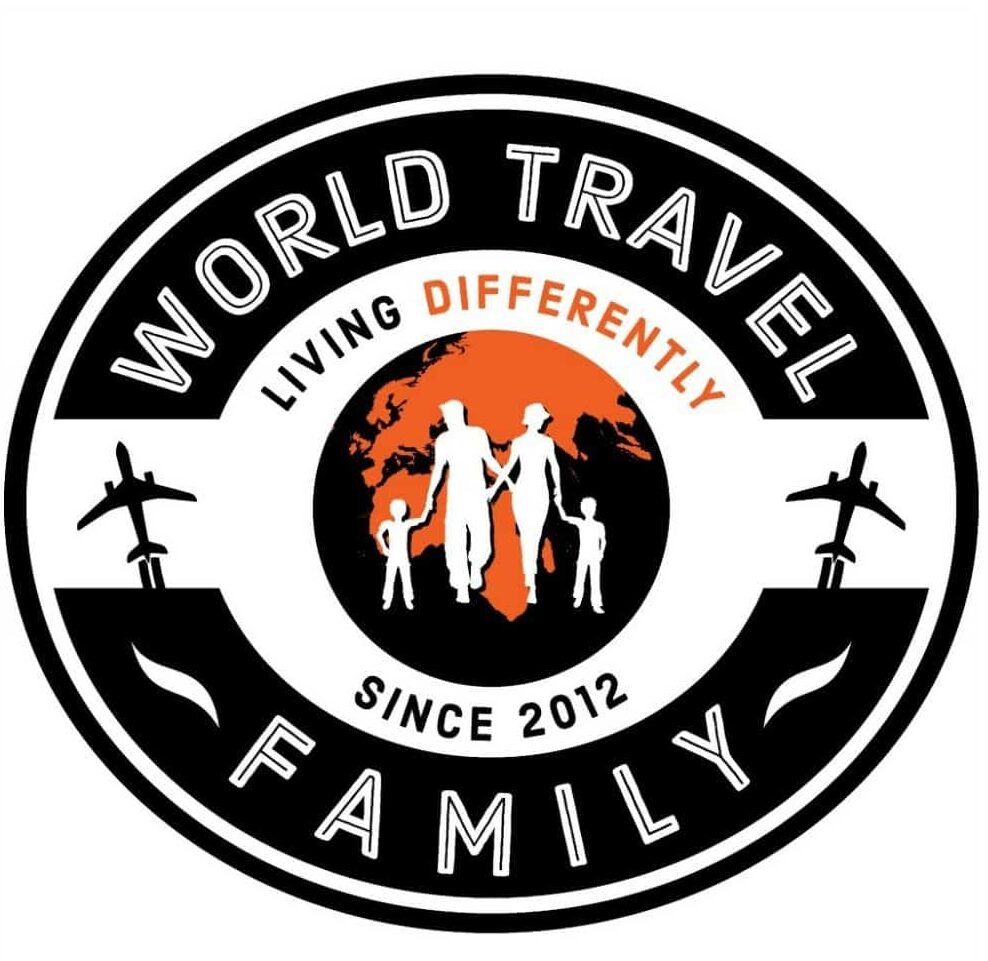
Nepal Trekking Gear. What to Wear, What to Take.
This post may contain affiliate links.
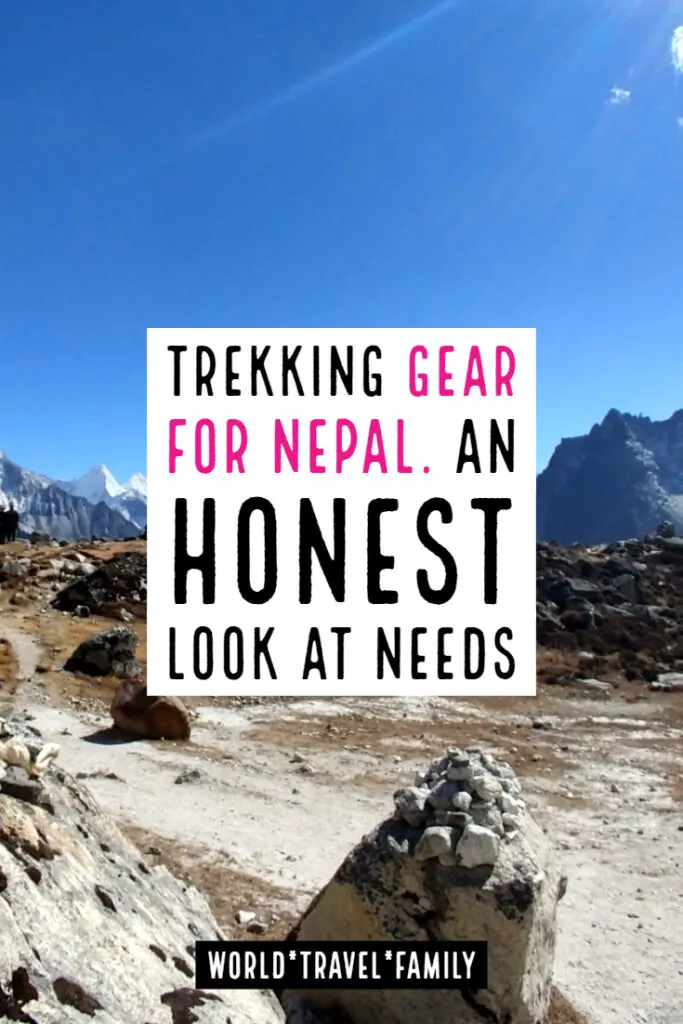
What trekking gear do you really need for Nepal? Trekking gear companies tell you to buy a long list of items before you even think of setting foot in Nepal or the Himalayas. I’m here to be more realistic. You don’t need everything they try to sell you. Items to pack, travel essentials for Nepal and some insider information from us, experienced trekkers and long-time tourists in Nepal, one of our favourite countries and home to the best hiking in the world.
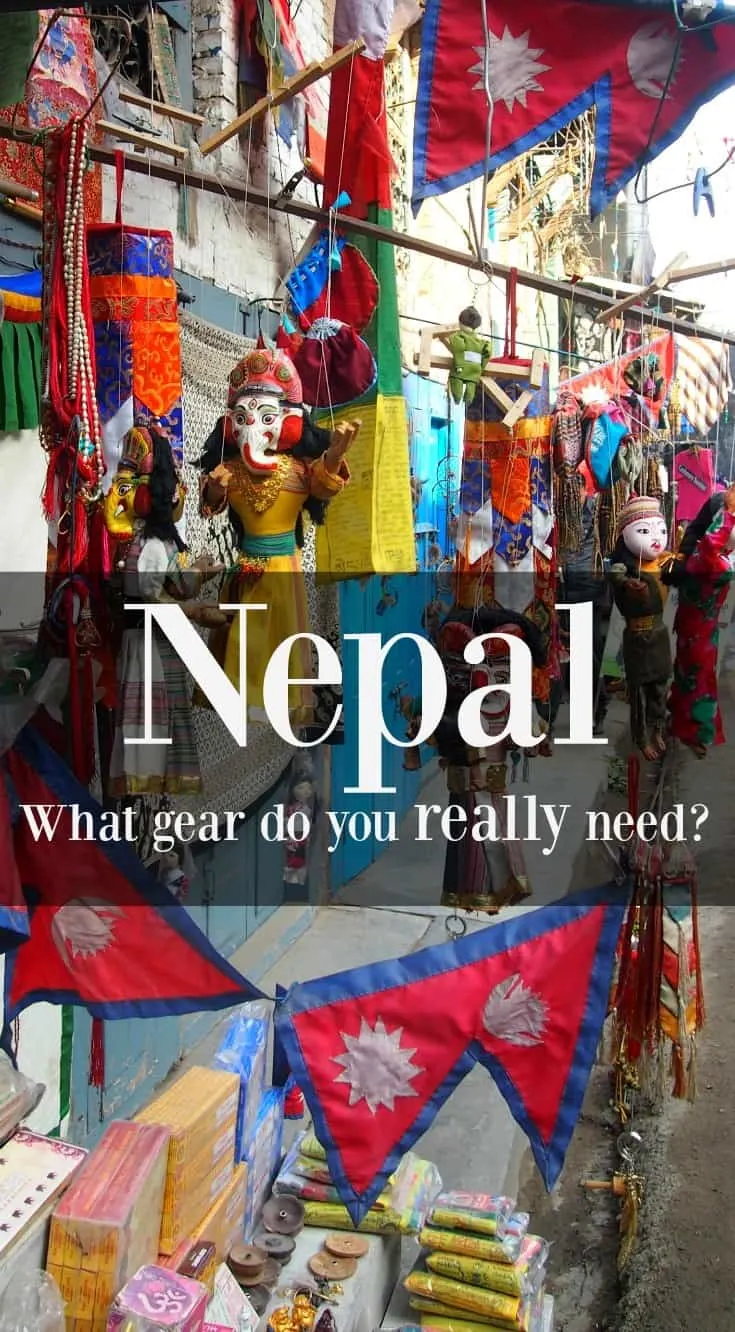
The menu below is clickable, click on the part of the post you need.
Nepal Trekking Gear
Keep your money in your pocket a little longer and read on. We’ve trekked the Everest region, Everest Base Camp (October, twice) and the Annapurna Circuit in winter (February), so let’s get real here about the trekking gear and equipment you will really need.
Some people head off for a walk looking like they’re summiting Everest and that’s overkill.
Shoes or boots for Nepal trekking are an important consideration, be sure to read that section of our post and never buy footwear online, you must try it on.
I’m not going to advise you, just tell you what we found necessary or unnecessary, obviously, you know your body and its comfort levels. That will affect your choices when buying your trekking gear for Nepal.
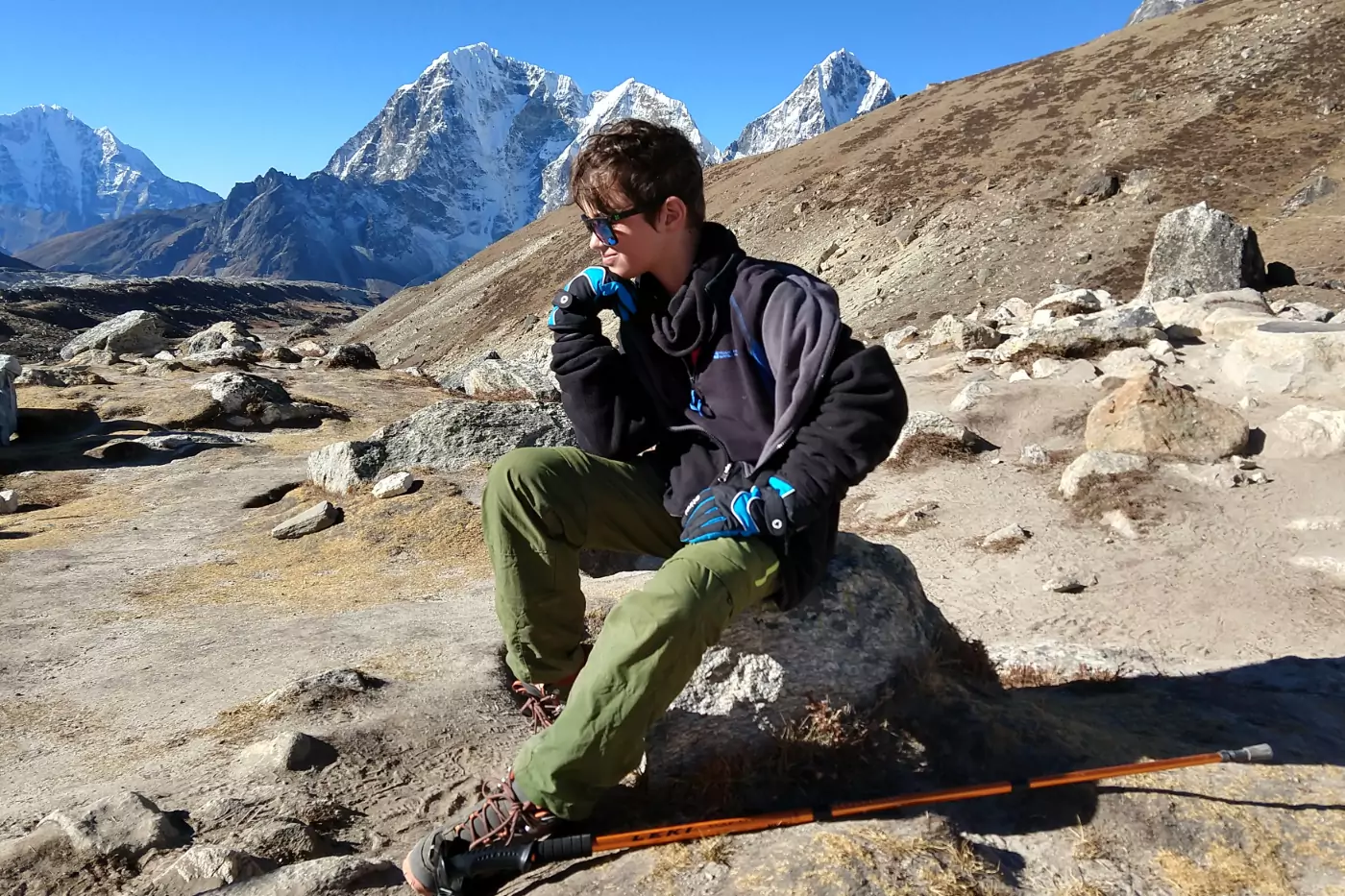
You have to make your own call and tell me what you decide in the comments. OK?
The gear you need in Nepal will also totally depend on how long you’re trekking and how high you’re going, and at what time of year. Our treks have been in winter to early spring and in October, peak season. The climate is very different on winter treks. In October we saw no snow at all, in February there were blizzards, bringing a whole new set of problems.
If you pay a porter to carry your gear, you can take a lot more stuff, but those of us who prefer to carry our own packs have to think about weight and necessity.
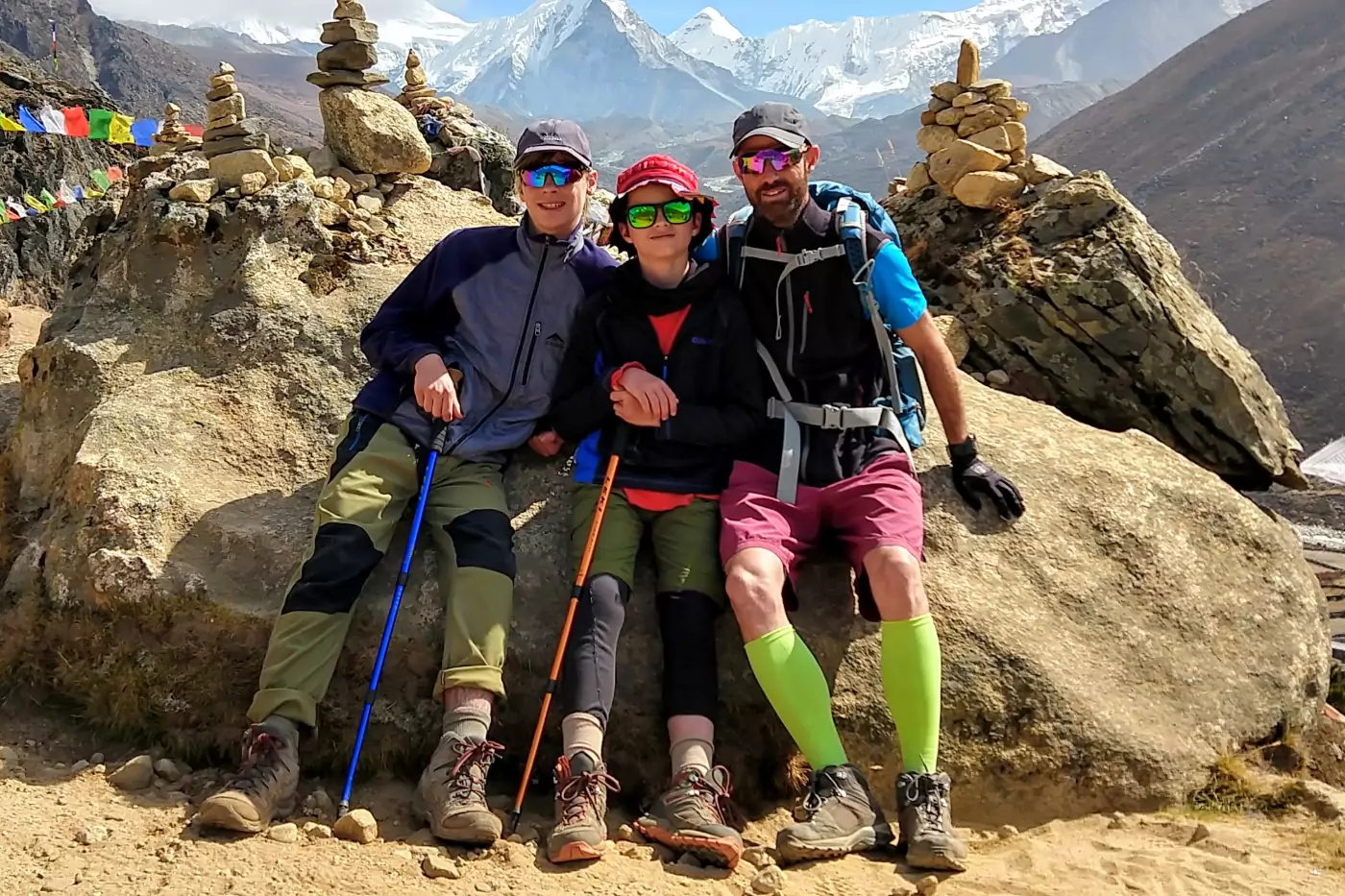
If you plan on visiting Nepal with kids and taking them on a trek, think long and hard about wether or not they should carry a pack. We didn’t expect our younger son to carry his own gear, but our elder teen was happy to carry a backpack weighing around 5 kg.
Buying Trekking Gear in Kathmandu Nepal
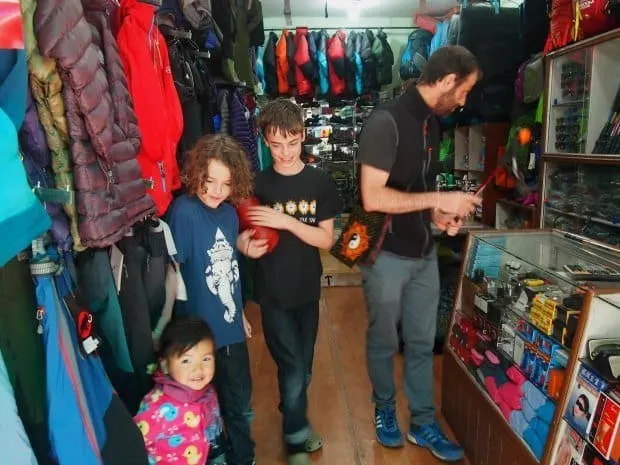
The Thamel area of Kathmandu is packed with trekking gear shops. Some trekking gear is genuine and sports a hefty price tag, most is fake but does the job just fine.
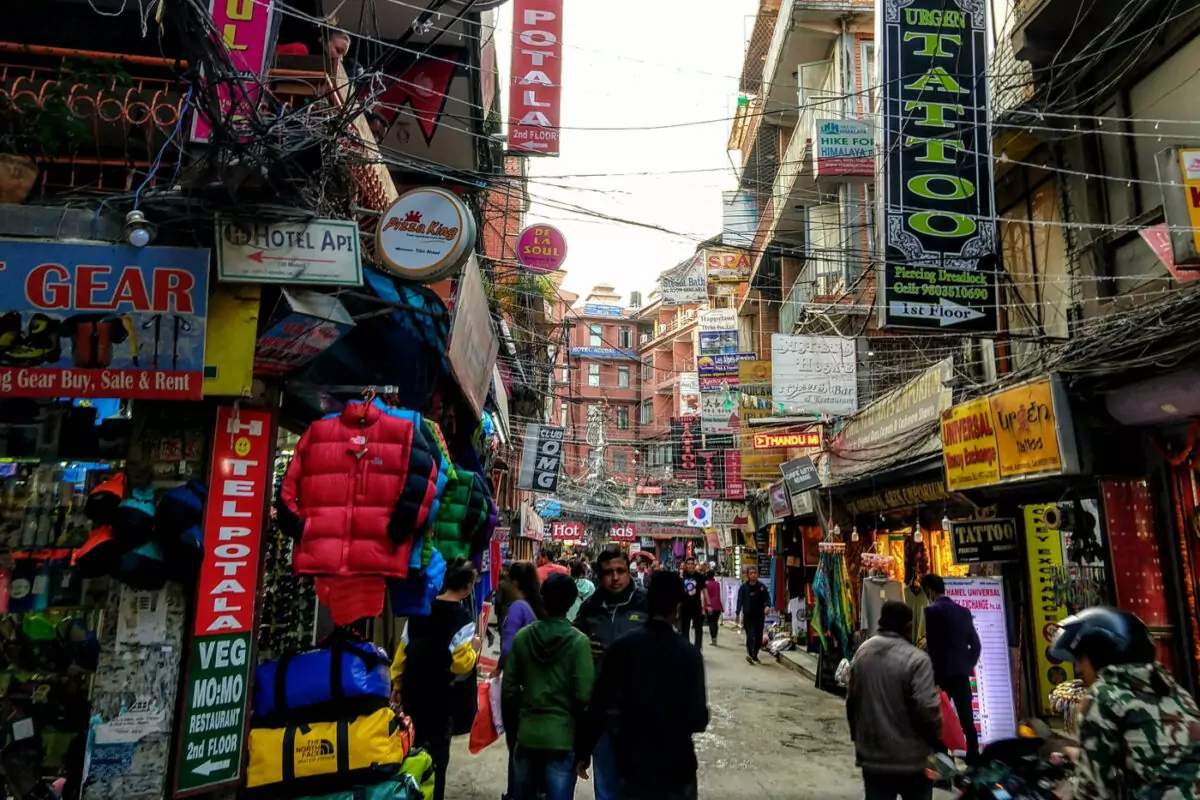
Always negotiate on price. Haggling is expected in these small trekking shops in Kathmandu.
If you have a few days to spend in Kathmandu or Pokhara before your trek you can easily kit yourself out with trekking gear. If you have children or you’re a larger size, this is harder.
Whether or not to trust the quality of the fake gear? It’s up to you. I have a lot of equipment bought in Kathmandu, as mentioned in this post, it’s always done me just fine. This includes heavy fleeces, trekking pants, gaters, Trekking poles and gloves. Gaters are essential in snow, but otherwise, we don’t pack them.
If you’re short of time then bring your trekking gear with you. You’ll want to spend your time enjoying the sights of Kathmandu, not visiting shops.
If you get stuck and are heading off on the Everest Base Camp Trek, we noticed this year that prices were good and often fixed in Namche Bazaar. This is new.
We bought extra socks and poles in Namche Bazaar at better prices than in Kathmandu. Nothing was fabulous quality, but it did the job.
If you’re looking for a place to stay in Kathmandu , read our post!
Kathmandu is at slight elevation meaning that, even in summer, it won’t get very warm there, you shouldn’t need completely different clothes for the city and the mountains. Temperature extremes in Kathmandu are -4C and 35C, whereas at Everest Base Camp the lowest was -60C, highest was about 25C. As Nepal is only 28 degrees north of the equator, daytime temperatures are fairly warm.
A Sleeping Bag for Nepal Trekking
You can buy a sleeping bag to take to Nepal with you, or you can rent a sleeping bag by the day in Kathmandu or Pokhara. You can also buy sleeping bags cheaply in Nepal. You can also not take a sleeping bag at all. I’ve been to Everest Base Camp without a sleeping bag to save weight.
Trekking lodges supply blankets but I doubt they ever wash them. They are plenty warm enough, but do you want to use them?
A good solution is to take a sheet or fleece sleeping bag liner, see below, and for my entire EBC trek in October this was all I used. October is warm and you’re unlikely to see much rain or snow, I certainly wouldn’t try to trek without a sleeping bag in winter.
Sleeping bags are bulky to carry and it’s a difficult decision to make, take one, or risk it?
If I were heading to Nepal specifically to trek (EBC, Thorong La, anywhere extreme) and buying and carrying gear wasn’t an issue, I would take my own, high-quality trekking sleeping bag.
But for lower altitude hikes I maybe still wouldn’t bother and maybe just take a fleece liner.
If you’re going high look for a bag that is ultra-light (the lightest mummy bag on the market (at time of writing) is 1.9 pounds, but it isn’t 4 season), mummy (to save bulk) with hood (essential) and ideally down.
It should be 4 season or suitable for below-freezing conditions. You’ll be looking for something like the sleeping bags here. They’re not too expensive, so buying a bag to take with you makes more sense than hiring a bag by the day in Nepal.
Check out this Hike and Bike sleeping bag for your Nepal Trek, it’s marketed as 4 season, to 0F (that’s minus 19C) That’s a very warm bag! It’s only 3.91 lb, that’s under 2Kg and compresses into a stuff sack. This sleeping bag should fit a tall adult up to 6 foot 6 inches tall. Sleeping bags do come in different lengths, so pick the shortest one to suit your height to save weight and bulk in your pack.
This bag’s little brother is the lightest on the market, but only takes you to 32F.
This one is heavier at 2.9 pounds to the Hyke and Byke Shavano’s 1.9 pounds, but you’re carrying extra warmth at under $40 extra cost.
You are unlikely to need a sleeping mat for Nepal, unless you know you’ll be camping. Every trekking lodge I’ve ever stayed in had mattresses.
Sheet Sleeping Bags and Sleeping Bag Liners
Sleeping bag liners, in cotton, silk or thermal materials are a very good travel investment. They’re not essential if you have your own sleeping bag, but if you plan on hiring a bag or not taking one at all, they’re gold.
TIP: Always go for mummy-shaped sleeping bags and liners to reduce bulk and weight.
The Sea to Summit Reactor Extreme (use this link to inspect) claims to add about 8C (25F) to a sleeping bag, is mummy shaped with box foot and drawstring hood (you will need a hood or hat in bed) It should weigh under 40 oz, 400g.
As I said I did the Everest Base Camp Trek without a sleeping bag, just a liner. I’m not recommending it, I’m just saying it’s possible.
You will absolutely need a warm hat to wear in bed, there is no heating in the lodges. I was fine, but I’m used to cold climates.
Electronic Equipment for Trekking and Visiting Nepal
You should take the bare minimum of electronic equipment to Nepal if you plan on trekking. If you are travelling with a laptop you should be able to leave it at your hotel in Kathmandu or Pokhara, along with any other bulky luggage, but I can’t vouch for the security of every accommodation provider.
We have never had any problems with doing this and have never experienced any theft in Nepal. For this reasoon we don’t usually recommend anti theft bags for travel in Nepal, but if you stand out as a wealthy tourist and are concerned about possible theft at busy sites, take a look at our post about these products.
The electronic equipment you should pack for Nepal includes your phone, a good watch, power banks or battery packs, and a camera if your phone isn’t enough for you. If you take a camera you should take spare batteries if required, cold can drain them fast.
Power Packs and/or Solar Chargers in Kathmandu, Pokhara and the Himalayas
You do need too pack battery packs or power banks for any type of travel in Nepal. The power was off more than it was on a couple of years ago in Kathmandu and Pokhara and long bus journeys, plus having to pay to charge in the mountains makes a power back-up absolutely essential for any kind of travel in Nepal.
Things are better in Nepal now but if, like us, you’re reliant on electronic devices like phones, laptops and Kindles, you will need electronic power back-up .
In the mountains it’s normal for guest houses to charge you to plug in. Sometimes the fee is per charge, sometimes it’s per hour.
It’s a couple of dollars here and there and costs quickly add up (particularly for us as a family of 4) so it makes sense to take devices with ultra-fast charging capabilities.
I like to take solar powered power banks. This means we can charge as we walk with solar panels attached to our packs.
If you are travelling long-term it’s always a good idea to carry these anyway.
You may also want a small, light regular power bank as the solars are pretty heavy at around half a Kg. We take both types of charger to Nepal, for 4 people to cover any eventuality.
If you are shopping from the USA the model below would be our pick. Unfortunately, it doesn’t seem to be available elsewhere just yet.
We have a couple of Hiluckeys brand solar chargers which are still going strong, and a Hobest.
These chargers should be waterproof, dustproof and shockproof, have extra fast mains charging as well as solar, can charge 2 devices simultaneously via twin USB ports and should clip on the outside of your pack to charge while trekking.
A built in flashlight is a bonus and some come with a whistle and compass. Just be aware that these chargers are heavy, we only take one solar power bank for the whole family plus 2-3 regular, lighter, chargers.
For shoppers outside the USA, the Hiluckey solar chargers are the ones we took to Everest Base Camp.
We’re happy to recommend them as a solid choice. We would only take a rugged model, at very least it should be waterproof and rapid charging is a must.
Check out our Hiluckey chargers below. If you need a lighter charger and happy to pay to charge it from the mains take a regular power bank or charger too.
Order a solar power pack here, on Amazon. (Opens in a new tab.)
A Good Camera or Camera Phone, Spare Batteries and Extra Camera Memory
The cold of the mountains makes batteries lose their charge quickly, you will need spare batteries.
As you most likely won’t be taking your laptop on trek and internet coverage is spotty at best, you’ll also be best taking plenty of memory.
As a professional travel blogger, I travelled with a Nikon D3300, it was the most compact, most lightweight DSLR I could find at a non-scary price.
It’s a popular camera because it’s so good, an excellent entry-level DSLR and for the Himalayas and the wonders of Kathmandu, you will want a good camera.
Tip: Put your camera, phone and batteries inside your sleeping bag at night, tuck your camera inside your fleece during the day. Try to keep everything warm
However , technology has marched on and as of late 2017 I did away with the bulky DSLR in favour of an excellent camera phone.
The Samsungs are excellent, so are the Apples, but my choice was between the new Huawei and Moto models because of their twin lens capabilities.
In the end I went with the Motorola. This decision wasn’t based on price, it’s a cheaper phone, yes (so realistically, a better travel choice), but it had the 3 features I needed, those twin cameras to give me incredible wide-angle shots, toughened glass and water resistance.
None of the top dollar models offered those 3 things at the time.
I buy phones unlocked to use anywhere in the world with local sim cards.
When using a phone as your primary camera, instant backup to Google photos makes life oh-so-simple even for me as a travel pro.
The Motorola also has fast charging, super useful when lodges charge for charge by the hour.
Trekking Watches and GPS for Nepal
A trekking watch maybe isn’t essential, but it’s certainly nice to have a watch with an altimeter, thermometer, barometer, and GPS.
My husband likes to have a watch with a heart rate monitor because he uses this for his Ironman training and events, I prefer the Casio watches for trekking.
Have a look at our full post on trekking watches here to see what’s on the market.
He tracked our ascents, descents, pace, and distance on the EBC every day and it was great to be able to do that.
Knowing your pace gives you a better idea of how long it will be before you reach your lodge.
Other Nepal Trekking Gear
Best water bottles for nepal.
On any multi-day or strenuous trek in Nepal you will certainly need a large water bottle (1 L, 32 oz, a quart approx), maybe two, if you’re not carrying your gear yourself and have a porter. In this section we’ll go through the various types of water bottle and tell you which is best for Nepal, on a trek, or for a sight seeing vacation in Nepal.
Wide-mouthed is best in Nepal if you are trekking because you will often fill your bottle with boiled water or even black tea in the trekking lodges. Your water bottle needs to be easy to fill.
Otherwise, you can fill it from taps, hoses or streams and use purification tablets. If you feel safe doing that. Sometimes in an emergency, you may have to.
Buy water purification drops here , online, before departure (US). For those of you travelling to Nepal from Australia you can buy the tablets here. From the UK, you can buy this type, which are really easy to carry. I would strongly suggest that you pack some form of water purification method for Nepal, even bottled water can’t be trusted 100% of the time.
Make sure you can fasten your water bottle easily to the outside of your pack. You’ll need to be able to access it easily
Camelback type drinking systems are also useful for trekking in Nepal, but not necessary for just seeing cities and sights (or visiting Chitwan ). We have a system like this that we use for running, that has also been to EBC with us. You’ll need a trekking pack or daypack that has a water bladder sleeve and outlet. You’ll need to buy tthis separately Take a look at these bladders here. I would be very careful keeping the mouth part clean as dust (and dried faecal matter) from the trail will tend to stick to it.
You can buy Nalgene type water bottles in Kathmandu but I’m not comfortable with them, are they real? Are the BPA toxins in the plastic going to leach into your water? Kathmandu is full of fake gear, most of it is fine to use, but I wouldn’t trust a fake bottle.
I’d buy these at home and know for sure they are BPA free. You can buy one in the UK here. In Australia, wide mouth BPA free water bottles are available here.
The Nalgene Tritan Wide Mouth BPA-Free Water Bottle. Above, is one we’ve used on our Everest Base Camp treks. What size water bottle do you need for Nepal? 1L, 33oz is the best size to take. You have to be able to carry your water bottle and of course 1L of water weighs 1 kg. When trekking in Nepal weight is a huge consideration. I would not personally carry 2 full water bottles ever, but I may take a camel back plus a full water bottle when I’m trekking with my kids. I do not expect them to carry heavy packs.
Tip: A water bottle filled with boiled water (or black tea) makes a good hot water bottle and is ready to drink in the morning. Do not put milk tea or sugar drinks in your water bottle, you won’t be able to clean it adequately.
If you’d like to insulate your water bottle neoprene sleeves are also available. Search from the link above. Although we use a twin walled steel bottle for every-day use and sports, for Nepal, I wouldn’t take them. The insulated steel walls keep hot boiled water or black tea scalding hot for too long. These are the bottles we use at home, Super Sparrow is the brand and these screw top lids do not leak even when upside down in my day pack. (US link). Super Sparrow bottles are available in Australia here .
The steel water bottles are fine for cold water, but not boiled water. So if you’re just sightseeing in Nepal, these are great. Water tastes better out of steel bottles rather than plastic. Steel bottles are also a little heavier, of course.
Do not take water bottles to Nepal with fancy mouth parts, you will not be able to wash them adequately and good hygiene is essential in the mountains. Perfect the art of pouring water into your mouth, rather than putting your mouth on the bottle itself. It’s easy, my kids have been doing this since they were tiny. You’ll see it often in India and Nepal.
Water Purification Straws, Bottles and Tablets for Nepal
A Lifestraw will allow you to drink from streams and springs and there are plenty up there, each more sparkling than the next. I’ve never used one but I have friends who swear by them. You can take one and plan to use it often, or take one for emergencies. There are also water bottles with built in life straws. If you read the paragraph above, you’ll see why we don’t recommend them for Nepal.

You could also carry water purification tablets (as we mention in the paragraph above, take them, if only for emergencies), which we have used in India years ago, and on the Everest trek, purifying each bottle full of water as needed, or even opt for a water bottle with built-in Lifestraw technology.

The choice is yours, but on our last trek we simply carried 2 large bottles of boiled water or black tea from each lodge we stayed in, they’re heavy, that’s the downside.
Trekking Poles for Nepal
Trekking poles are not essential, but they certainly make trekking easier and your knees last longer. I hike with one, others use two.
In my younger days I rarely used them, but it’s very sensible, and safer, to buy at least one trekking pole.
I have one I bought in Kathmandu but there are some amazing ones available to buy online.

One of the best selling trekking poles on Amazon, for men or women, are here . As you can see, they are pretty cheap, mine, from Kathmandu (fake or off-brand), was about the same price.
I wouldn’t go trekking in Nepal without one now but it’s reassuring to know that should you break one on your hike, yes, you can trek with just one pole or stick, and, they’re easy to replace in most towns and villages along your hike. Obviously, as you gain altitude, prices usually go up.
Buying Trekking Gear on a Budget
Don’t scrimp on anything that could put you, your toes or fingers at risk.
Everything I tell you on this page will help you keep your costs down, but be wise, stay safe. Trekking in Nepal is expensive. It just is not a cheap vacation, particularly not if you hire guides and porters.
Even without a guide and porter trekking in Nepal is still expensive. It’s expensive to fly to Nepal and you need to buy trekking permits. Food and supplies in the mountains also become expensive the higher you go and you must have good insurance in case of emergency evacuation.
If you’re really low on funds maybe wait a year or so.
Your Trekking Pack for Nepal
Your choice of trekking pack for Nepal is dependent on whether or not you will be carrying all of your gear, or taking a porter. On most group tours to Nepal, porters are included on your trek. Independent trekkers may hire a porter or a guide by the day if they choose to. You can do this in Kathmandu.
Our choice is usually to trek solo. You don’t need a guide or porters, the trails are usually very obvious.
A paper map is a good idea for independent trekkers, you may not be able to see your map on your phone if you run out of battery or drop your phone, so buy and take a map. Buy one here (US) , and in Australia, buy an EBC map here. They’re good to have at home to familiarise yourself with the route and the places you will stay.
You also need to check altitudes. It’s always good to stay at a lower altitude if possible to avoid acclimatisation issues.
Travel Towels for Nepal
A good, lightweight, large, quick drying travel towel is essential on treks in Nepal. If you’re staying in less costly hotels in Nepalese cities, you’ll also be pleased you brought your own towel. Towels in budget Nepali hotels can be small and threadbare.
You are fairly unlikely to take a shower at high altitude during your trek, it’s too cold and the guest house owners charge per hot shower, that is, if their solar heating is working.
Lower down, yes you may find showers and they will be variably hot.
Take a travel towel, they aren’t usually supplied by the trekking lodge. You’ll want one for drying your hands or cleaning your teeth anyway.
Micro towelling is good, we have towelling travel towels that are 20 years old, but microfiber is lighter and easier to wash and dry. We even use our Mountain Warehouse extra-large travel towels at home.
Check out travel towels here.
We recently did some research on which travel towel was best involving buying a bunch, weighing them and testing them out.
We wrote a post on our travel towel findings here, but unfortunately our winner was discontinued.
Currently we’re travelling with Eco Journey towels as well as our old Mountain Warehouse versions. A family can never have enough travel towels and they can last decades.
The Eco Journey towel also came with a free mini-towel which has been very useful for hands face or feet if you want to keep your main towel dry.
You can easily wear a mini towel on the outside of your pack to dry it during the day. So we recommend two towels for your Nepal trek or holiday, one for showers, one small one for hands.
What to Wear Trekking in Nepal. Clothes.
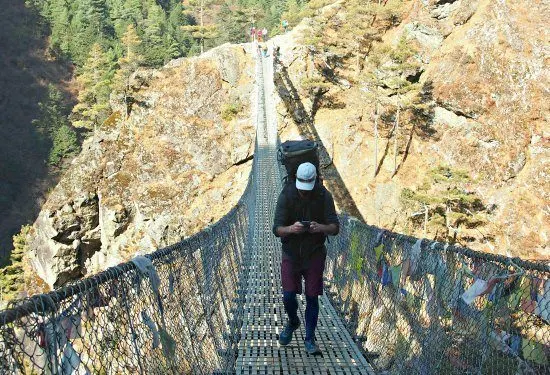
This is where things get complicated, what clothing, shoes, boots, pants, jackets, and so on to wear in Nepal. Be safe, always be ready for bad weather. But use common sense too.
In Kathmandu most casual clothese are fine. Local men will be wearing shirts and jeans, most women wear more traditional clothing. Try to be fairly modest, I wouldn’t wear short shorts in a city, nor revealing tops. You may need a fleece or rain jacket but the climate in Ksathmandu is pretty mild.
If you head south to Chitwan or Lumbini it will be hotter on the lowlands. Casual summer clothing is fine. We wear jeans in Nepal almost always. Thongs or flip flops are fine in the warm months, but you will also have your hiking shoes with you.
Nepal in January (winter) is very different to the peak trekking season in October. On our October Everest Base Camp trek we never saw snow. On the Annapurna Circuit in January-February, we experienced blizzards and waist-deep snow.
We haven’t taken the gear you’re “supposed” to buy on any of our treks. I’ve never owned a merino base layer, nor do I pack thermals. Most of this recommended gear is seriously expensive, we haven’t needed it.
Trekking Boots or Shoes for Nepal
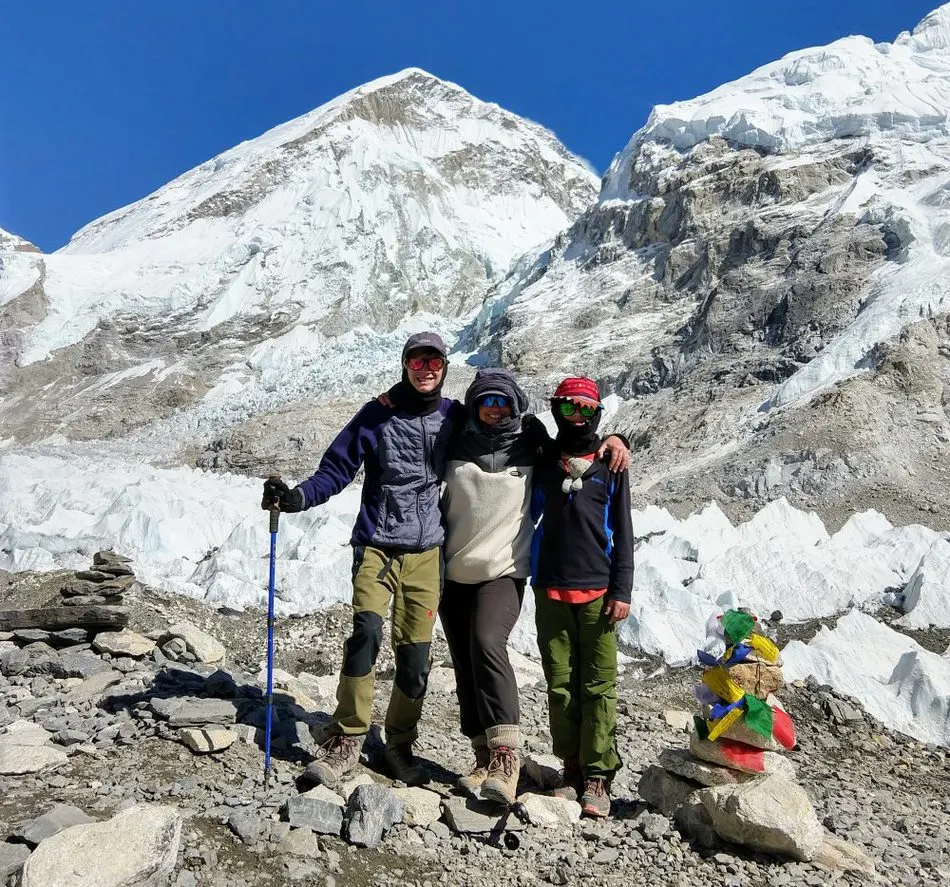
Don’t feel you have to go out and buy the best trekking boots on the market just because you’re going to the Himalayas.
The golden rule, whether you choose to buy hiking shoes or boots, is don’t buy them online, always try them on. Try on dozens of pairs if you have to and choose the most comfortable shoes or boots. If you have to work hard at breaking in hiking shoes, or you get blisters, you bought the wrong footwear.
Nobody in my family ever gets blisters when we’re hiking in Nepal.
Go to your local mountain gear store or Decathlon mega store and try on every pair. In the UK we would go to London for the big stores around Covent Garden to buy hiking gear.
My husband has been high in the Himalayas in running shoes and in top-of-the-range crampon-ready leather Scarpa boots.
I’ve been up there in light summer trekking shoes and in summer-weight hiking boots, the latter in deep snow.
One of the kids had hiking shoes bought in Kathmandu, the other had street shoes, and winter-type basketball boots or sneakers, he got to Tengboche Monastery .
We did great in all of the footwear mentioned above.
My husband preferred trekking in his running shoes right up past Namche Bazaar and into light snow, he found he slipped less, and walking was easier. Once the snow gets thicker, boots or good shoes are better. If you have the luxury of a porter or don’t mind taking a very heavy pack, you could take 2 pairs of shoes like this.
My summer hiking boots did OK in deep snow, but I was treating them with waterproofing spray every day. Wet suede, in deep snow, in winter, could have caused frostbite.
In snow, always add gaters (you can buy these on the trek or in Kathmandu, quality isn’t critical, or here on Amazon ), they help keep the snow out of the top of your boots or shoes.
Running shoes will do you for EBC in good weather and you’ll see plenty of people doing this on the lower treks. I’m not advising you not to buy serious hiking boots, I’m just telling you not to worry too much particularly if you’re not going into deep snow.
You’ll notice that most of the trekking guides in Nepal favour trekking shoes over trekking boots. We were told by our guest house owner that shoes were better. But you do what you’re comfortable with.
Frostbitten toes are obviously to be avoided. We’ve seen people cross the Thorong La in deep snow in running shoes. It’s not a great plan, but I’ve also seen the hard sell in the hiking shops to buy the most expensive gear, often from salespeople with no experience of the Himalayas.
Just have your wits about you. I’m not going to give you links to buy hiking shoes or boots online as this is a very bad idea. You absolutely must try on boots for Nepal and be certain they fit before you buy them.
You won’t need shoe bags on your trek unless you plan to take a spare pair of shoes with you. People employing porters will likely be the only people taking multiple pairs of shoes on a hike, unless you’re my husband and plan to switch from running shoes to boots once you hit the snow. We make shoe bags from old T shirts but you can also buy them online.
Read our section on socks, below.
Trekking Socks
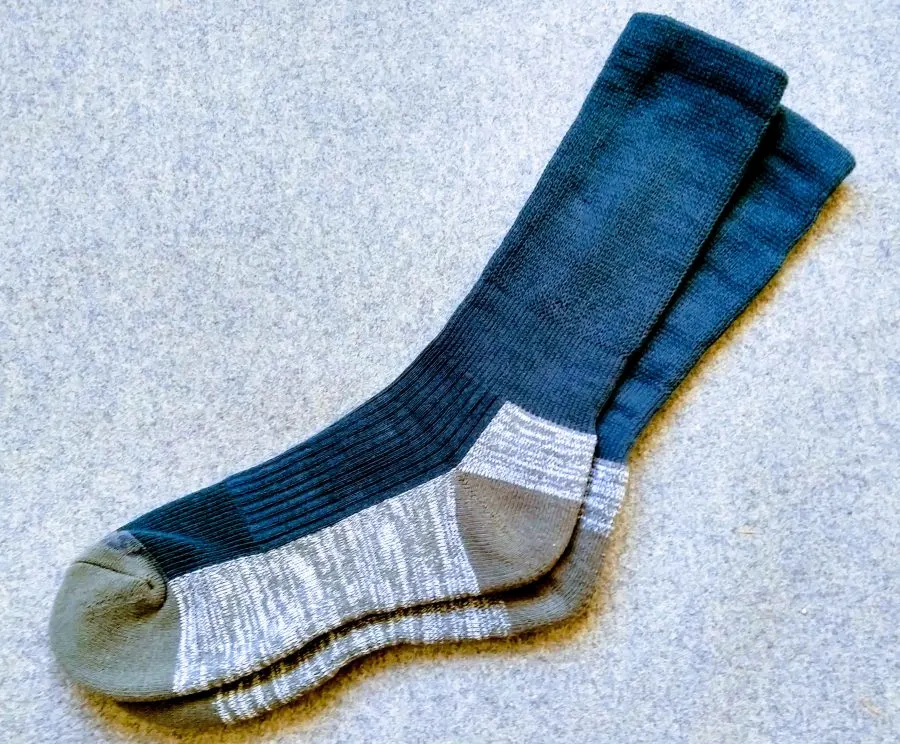
You will be wearing the same socks for multiple days without washing them. Unless, of course, you hire a porter to carry your wardrobe. You may be able to hand wash socks but drying them is all but impossible.
Sometimes I trek in thick hiking socks, sometimes in thin street socks, to me it makes little difference in well broken-in shoes or boots. The extra cushioning on the bottom of designated hiking socks can be very nice. Remember the EBC trek is only about 60 Km. It’s not a huge distance.
You can pick up socks in Kathmandu or Pokhara but we struggled to find kids’ sizes. I’d recommend bringing at least a couple of pairs of good socks with you from home.
Quality trekking socks like these are a good investment and can last decades (mine have!) Bridgedale are a classic, quality brand. You absolutely can’t go wrong with Bridgedales (buy here) or try the Isocool socks from Mountain Warehouse, buy those direct from a Mountain Warehouse store, or buy similar cool hiking socks online, here.
Marks and Spencer also have some good light weight, good quality, hiking socks which we have used in Nepal.
I think a pair of Bridgedales for cold and high altitude and the cool hiking socks for warmer days, lower down, works well.
We never get blisters, our boots fit well with any socks. If you hit the Bridgedale link (above) and have a click around you’ll see styles for women and men for different conditions. Take a look. Remember to get longer socks if you’re wearing boots, shorter socks are only for use with trail shoes.
People recommend wool socks. We don’t generally use wool but our Bridgedale socks do contain wool.
I’ve also seen people recommend, and use, wool booties in lodges. I would never do it. The WCs are likely to be wet and not hygienic, I wouldn’t wear anything other than my hiking boots in there.
We have our boots laced lightly so that we can slip them on and off easily in the lodges at night. You don’t want trailing laces in those restrooms.
You really can’t be cautious enough about hygiene on the Himalayan treks. Do everything you can to keep your hands clean.
A dry pair of socks and dry clothes after your day of trekking is a good idea. If you’re wet, or sweaty, you will stay cold. Put on fresh socks to go to bed, or have some designated sleeping socks.
Do You Need Crampons for Nepal?
Trekkers don’t normally need crampons, but on certain hikes, where there’s ice, they do.
You should not need crampons on the Everest Base Camp trek in October, we didn’t need them.
You can buy crampons on a stretchy rubber frame that slip over your boots and shoes in Kathmandu and in Namche Bazaar, or here on Amazon . These are a great investment for icy conditions anywhere in the world, as we found when we lived in Romania.
Trekking Pants and Waterproof Trousers
We’ve never bought special trekking pants so can’t comment. We’ve trekked in a strange mixture of stretch jeans, leggings, yoga pants, running tights, and shorts and did just fine.
If you’re going high or into snow add waterproof over trousers or special cold-weather trekking pants.
I also sometimes add legwarmers, a $1 buy in Kathmandu. I usually sleep in them too.
Base Layers, Thermals Jumpers and Jackets for Nepal
People recommend thermals and merino base layers for any trek or hike in Nepal. Do you need them? No, we’ve never bought thermals or any merino wool item for any of our treks in Nepal, including Everest Base Camp and the Annapurna Circuit in winter. Incidentally, we’ve never used them for skiing either, but if you have them, take them.
We just wear long-sleeved T-shirts, fleeces, hoodies, etc. I’ve never owned nor needed thermals for trekking or skiing.
We’ve taken down jackets brought from home as well as those bought in Kathmandu or even hired in Pokhara.
We’ve carried waterproof jackets and used them in blizzard conditions on the Thorong La (Annapurna’s High Pass, see video above). What you take, as always, depends on how high you’re going and the time of year.
I’d still steer clear of trekking stores’ “must buy” lists or packing lists as guides, they’re there to extract as much money as possible from trekkers who don’t know what conditions to expect.
If you have endless cash and want to be as warm and comfortable as you could possibly be, then buy them, I’m sure they’re nice to wear, I just want to tell you that we’ve never regretted not buying them.
You can buy huge, thick fleeces very cheaply in Kathmandu, I’ve had mine 15 years.
Sunglasses for Nepal and Trekking
Absolutely, you don’t want snow blindness. We trekked with a guy who’s glasses had broken, he had snow blindness for days and it was incredibly painful.
This is the brand of sunglasses we’ve used recently, they’re a budget buy for a family, but they are high enough quality, high performance and come with a lifetime guarantee. You can order them online, anywhere in the world.
If you have a bigger budget, buy Oakleys , they’re the most indestructible sunglasses I’ve ever owned. I’ve been using Oakley sunglasses for hiking, trekking, cycling and skiing for most of my life.
Get dark ones, ideally polarised, the light can be intense off the snow.
Gloves for Nepal
Fingers are particularly susceptible to cold. Yes, you need gloves of some sort but not necessarily top of the range.
Decathlon normally sells decent gloves. You’ll need your gloves to have a wind and water-proof outer shell if conditions get bad.
Hats and Buffs for Nepal
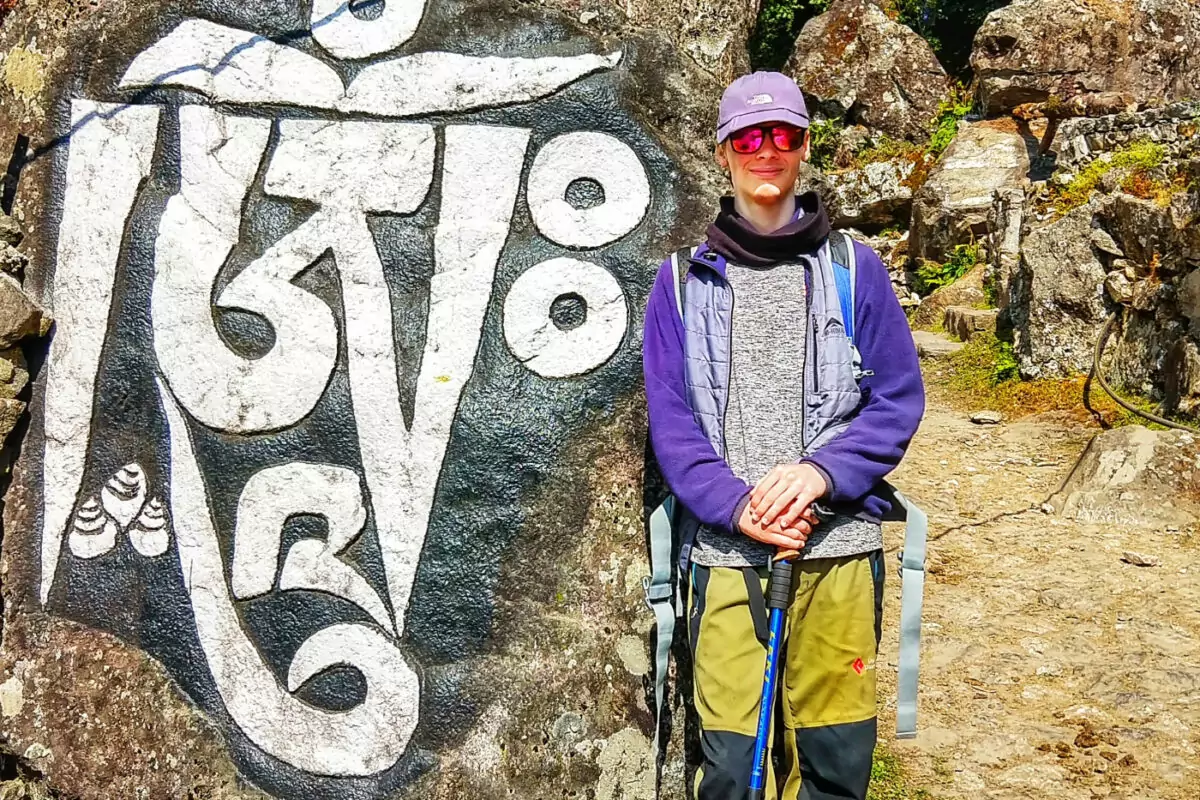
You’ll want something on your head but it doesn’t have to be a designer item. Buffs are great, but a cheap one from Decathlon does the job just fine.
Take a hat too, wide brimmed for sun, thick and woolly for warmth. You’ll want your buff plus a hat at high altitudes or in winter.
At low altitudes, on sunny days, you’ll be more worried about keeping the sun off. Scroll back up to the photo of us at Base Camp. It was taken on a “warm” sunny day.
On the top of the Thorong La in winter, we had hats, buffs, plus waterproof jacket hoods.
Toiletries for Trekking in Nepal
What toiletries do you need to pack for Nepal, as a trekker or holidaymaker?
Take as few toiletries as possible because they will be heavy. The essential toiletries we take are the following:
- a toothbrush
- lipbalm with sunscreen
- hand sanitiser gel
- toilet paper
We don’t even pack a hairbrush and shampoo usualy, as I have always had short hair on treks. Many lodges won’t provide soap, making soap for handwashing and footwashing, an essential.
We tend to buy a medicated soap, such as Dettol. You’ll need a plastic bag to carry it in. A soap box adds weight.
My husband does not take shaving gear trekking, I do not take makeup. You will see women wearing makeup on treks occasionally, it seems odd.
Also, take some sort of antiseptic cream or iodine for emergencies. Take some good quality band-aids or sticking plasters. We find fabric plasters stay on better than plastic.
We don’t get blisters when we trek because we have boots that fit well and they are well broken in. If you get blisters, you’ll be very unhappy trekking. Wearing two pairs of socks causes blisters in our experience, and yet the trekking gear shops will tell you to wear liner socks and over socks.
Take any other medications you may need. We take altitude tablets, bought in Kathmandu, for emergency use only. We have a post about our experiences taking these at high altitudes.
I think it’s a very good idea to take vitamins and minerals too. Your diet will be limited on your trek.
Check out what we’re wearing in the video, this was in the worst possible weather you’ll get, serious cold, blizzards (we were stuck up there at high camp for 3 days) and 5,416m at the top of the Thorong La on the Annapurna Circuit. The height is similar to Everest Base Camp.
A sun hat, a kramer from Cambodia and a buff, along with the hood from my waterproof jacket, did me fine. A cap is great too, to keep the sun off your face, a wide-brimmed hat may be better. A warm hat to wear in bed is nice too.
Inportant Documents and Paperwork For Nepal
Don’t forget to pack passport-sized photos for your trekking permits, check that your passport has 6 months left on it and has blank pages, and check your visa situation. You have to pay cash for your Nepal visa at Kathmandu airport, in the correct currency, so read up on these requirement. You should also have a copy of your insurance document. Do not rely on electronic copies in Nepal. Power and signal are variable.
Insurance for trekking is vital. Safety Wing (click through for a quote) will cover you up to 4,500m (EBC is at 5,500m approx) so check and double-check your insurance policy’s terms and conditions thoroughly, insurance companies keep changing what they will and won’t cover. We’re trying to find you a good insurance provider for trekking in Nepal.
Some attractions, including the Kathmandu Durbar Square and the whole of Bhaktapur also require a permit and you may need additional passport photos for these.
Trekking and Travel Gear For Nepal, Advice
If you’re long-term backpacking or on a gap year you simply can’t fill your bag with the perfect piece of gear for every occasion. If your trek in the Himalayas is a one-off, big event, and you have cash to burn, buy all the designer gear.
I’m not trying to give advice on what you should or should not pack for your trip to Nepal, just present you with options that will help you ignore the marketers, save the planet through consuming less and save your cash if that is your preference.
Nepal is a wonderful location for a vacation and probably the best country in the world for trekking, enjoy your visit. We have much more content about Nepal on our site, find our full Nepal travel archives and photos here.
That’s it for now, all can think of. I hope I’ve managed to put your mind at rest a little and help you realise that you don’t have to buy all of the trekking gear on the list. To an extent you can make do with what you’ve got so long as you don’t take risks. If you have any questions just put them in the comments and maybe I’ll bump into you somewhere at high altitude one day. You can go back to our main Nepal Travel Blog page here
- Facebook 185
- Pinterest 723
If you'd like to hire a car during your stay, use this car rental comparison tool to find the best deal! We also suggest you take a look at this company to get a quote for all kinds of the more tricky adventure or extended travel insurance. Try Stayz / VRBO for an alternative way to find rentals on homes/apartments/condos in any country!
Related Posts:
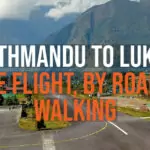
Alyson Long
How to travel the world, pre-vacation checklist., 25 thoughts on “nepal trekking gear. what to wear, what to take.”.
Hi Alyson, I’m planning on doing the Annapurna trek in October/ November 2019 with my 24 year old daughter , I was last on Nepal trekking in 1986 trekking clockwise from Pokhara to Jomson, unfortunately I had to turn back due to a visa issue, now in my late 50s I want to go back and finish off what i started, we would like to do the Annapurna circuit trek, tilicho lake, throng la pass and onto ABC, in your opinion how difficult would it be to do this solo or would it be better to hire a guide/ porter, would getting accomodation be an issue during this time, any information would be much appreciated.
Thanks in advance Leo
I don’t think you need a guide Leo. Sure, it’s nice to put money in local pockets, but it would take some skill to get lost! If there’s a lot of snow up there, maybe, you could stray off the path. We were up at the Thorong La in deep snow, we waited 3 days for blizzards to pass and in the end were very glad of the friends we’d made along the way and the support we all offered each other. Some of them had guides, some didn’t. But that was Jan / Feb. Be warned that Annapurna Circuit is CRAZY busy these days. We had friends up there last October and the crowds were unreal. It was bad for us over at EBC at that time too, it’s peak season. Lodges get full. Read our post on Everest Base Camp Difficulty – that was last October. I can’t give you solid information as obviously, weather and crowds vary. But I’m hearing a lot about accommodation shortages over there.
Hi Alyson! Thank you so much for your blog – we are a family of 4 (daughters are 8 and 11), and we travel a lot, and its been super difficult to find advice from people who have the same approach to travel as you (and we) do. So here’s my question: Do you recommend a trek for us that’s about 5 days long, departing from Kathmandu? Here’s our background, in case it matters, though it seems that we would fit in perfectly with your family: My husband is a climate change scientist and will be in Kathmandu for IPCC meeting in July 2019. The two of us have traveled over land from Lhasa to Kathmandu in 2005, I lived in China for a while between college and grad school, now we homeschool our kids (we live in the US) so that we can travel along as my husband has meetings everywhere. When we’re home, the kids are in wilderness school (and have been since they were 3 and 6yrs old), and they are troupers, we have all the gear you mentioned and they are used to camping long term, being outside in all kinds of weather, but they haven’t done any long term backpacking camping. They prefer mountains to cities EVERY SINGLE TIME. But, the younger daughter isn’t really all about pushing herself to her limits, the older daughter is definitely up for it. So we end up encouraging the younger one all the way, and then she’s happy and proud of herself at the end. As I’m sure you know, its exhausting to be cheerleader all day long, so I like to choose a happy medium. On this trip, we are flying into Kathmandu from the arctic of lapland, and will be continuing into China for a few weeks afterwards, but we really don’t want to miss this chance of trekking and being in the glorious inspiring nature and culture of the Himalayas. Any suggestions of manageable treks would be most welcome! Thank you!!!
5 days really isn’t long and we’ve nevr done any short treks. You could of course, fly up to Lukla and just walk for 2 days, maybe 3. Walking back is faster but it’s not easy, it’s not all up then all down You’d get to Namche Bazaar, get a view of Everest, you may get as far as Tengboche then have to turn back, but those flights can be an issue, there are a lot of cancellations because of weather. There are short treks from Pokhara, but you’d lose 2 days on the bus there and back. There may well be some short ones from Kathmandu but I just have never looked for them, sorry. None of them involve camping. If you can just get as far as Namche it’s certainly worth doing, but be certain your kids are OK with heights. The bridge before Namche is horrific and if my kids were scared of heights – as I am- it would be child abuse to force them over.
Hi, Myself and my boyfriend are planning a trip to Nepal in Sep 2019- your blog has been incredibly helpful thank you! We are considering Everest base camp and Gokyo valley. We are both relatively fit and healthy but will take our time and from your advise organise the tour ourselves rather than go with a group. I estimate it will take us roughly 2 1/2- 3 weeks. What is your thoughts on the Gokyo valley as i’m unable to find a blog with this in? I’m worried about the weather in September and how cold it will get as we reach EBC. We have been skiing previously so have base layers which i’m sure will be ok but i’m worried about the night. As for the rest of Nepal we will definitely be checking out the temples etc you have suggested. Your piece about Chitwan and getting there from Kathmandu has been extremely helpful as I was unsure originally if we will do this but now i’m almost certain it’s worth a visit!
After reading this i’m very excited and can’t wait for September to come around! Thanks x
Hi there. I can feel your excitement, that’s great. Did you read our post – Everest Base Camp difficulties? We were there last October, peak trekking season and it wasn’t THAT cold at night. Maybe getting to minus 10 C right up at Gorak Shep. Night time, ideally, you want to be in dry clothes if you’ve sweated during the day, but it’s not always possible, too tired, too cold to change, just can’t be bothered, but it’s sensible. You sleep in all your clothes, basically. A warm hat that will stay on in bed is essential, keeping your head warm makes all the difference. I didn’t have a sleeping bag even, just a sheet liner and a $8 fleece liner from Kathmandu, I was OK. I loved my leg warmers, wool ones $2, I’d pull them over my feet at night and mostly I just wore those with running tights or I started the trek in light jeans , comfortable ones with stretch. My husband mostly wore shorts then added leggings underneath at the top. I’m going to write a full EBC packing list post because there are some ABSOLUTE essentials and some items people suggest that are just ridiculous…like wollen bootees…you want to go in a wet squat toilet in wooly bootees? Crazy, then you have to put them in your pack the next day..just no. Anything else you need to know, shout, I’ll create the post. Gokyo we didn’t do. We sort of thought we might, but by the time we were heading back we were tired and longing for a shower and clean clothes and just didn’t want to. Also our Sherpa friend and another trekker warned us that it was pretty terrifying, steep drops, narrow paths and I’m not good with heights. So nope, we didn’t go. Might do next year, but thisyear we’re going to Pakistan for K2 base camp … which will probably also be terrifying.
Also Alex, I started a Facebook Group, Trekking Travel, if you’d like to pop over there and chat.
Hello im hana from a tropical country where its basically spring/summer all year round lol) Me and some 20 people are heading to kathmandu and will be trekking the langtang valley upto kyanjin gumpa and summit to tsergo ri (less than 5000m). Will be going these next few weeks roughly 10-20th feb. This is during mid winter ? (Im not sure?) This is my first time in nepal and first time trekking in winter. Really nervous & dont know what to expect…but your article has soothed some of my nerves, thanks for that! Just really concerned abt the sleeping bags…should i really not buy them? And would just the liner suffice? Reading what you wrote abt snow upto armpits are really shaking me up ????
If we were going high we would most certainly take sleeping bags. Also if you have porters to carry them it’s no problem. The post below is talking about lower altitude trekking, we didn’t go nearly as high as EBC or the Thorong La on this walk, only to Tengboche. If taking your own, clean, lovely sleeping bag was no problem, i’d take one absolutely, every time, but carrying one, and the expense, is an added burden. But don’t stress!
Hi I am trekking Annapurna crossing thorung La & going to Tilicho end of Jan 2019 Feb 2019. I have never been to anything like this in relation to climate & am really nervous about how cold it can get. I have been told to have a base layer, a mid layer fleece & down/wind jacket is this all I will need? I have inner gloves and outer gloves, a few pairs of sock but havent got any pants as yet as I have been told I can get these in Kathmandu is this correct? Thanks Susan
It will be very cold. Probably. We did it in February and got stuck up at high camp in a blizzard. Don’t trek in conditions like that! People like to hand out these shopping lists of gear to make you spend more. It’s BS. Don’t think you need to buy everything especially for trekking from knickers up. Sure, you could. If you have money to burn it’s probably the easiest way. But if you don’t want to spend thousands work with what you’ve got. You will either need a very good heavy fleece or a down jacket. If you’re buying new get the down, it’s better. You may need a water/ wind proof outer coat and waterproof trousers. We took our waterproof jackets up Everest last time and used them for exactly 5 minutes. However, I don’t think I’d go without a waterproof jacket. It depends, if you’re trekking independently and can stop if the weather is bad, you may be able to get away with not taking one. If you’re in a group and on a tight schedule, you’ll have to push on despite the weather. Your base layer can be leggings of any sort, a vest, long sleeve T shirt. Anything. Or you can go with the expensive merino. Dry clothes to put on for bed does help a lot, but often you won’t want to be getting changed if it’s cold. a long sleeved/ high necked fleece is great for trekking during the day, you may even strip down to just a T shirt. Be sure to take sunblock and lip salve with sunblock. The gloves I took last time were useless, supposedly windproof but gave no insulation, I just put my hands in my pockets, previously I took cheap fleece gloves and they were fine. If you have ski gloves they should be fine, but it’s all extra stuff to carry. Take as little as possible. Did you read our post on Everest Base Camp trek difficulties? There’s more information in there, but it will be a lot colder when you go. A warm hat is essential, not least to wear in bed. Wool is fine, or a good fleece, as well as a hat to keep the sun off your face. I often wear a fleece buff on top of a cap and then you have the hood of your waterproof too if you need it. But it’s personal choice. My husband treks in shorts and puts leggings underneath when it gets cold. I wouldn’t dream of trekking in shorts. He would rather wear running shoes, I prefer light boots. My son treks in jeans, I trek in jeans sometimes too. I’ve seen women up there in skirts. Some people buy mountaineering gear and look like they’re summiting when they’re only going for a walk ( don’t be them, it’s embarassing!) . What I’m trying to say is, there are no hard and fast rules and everyone has different parts of their bodies that get cold. For my husband it’s his hands, he always wears ski gloves, whereas I hardly need gloves at all. Just don’t get frostbite! If I can take 2 kids to EverestBase Camp in jeans and unicorn hats I’m sure you’ll be fine.
Hi thanks for this realistic post. I am going on 22 October for 18 days through to EBC. My confusion is with 1. waterproof jackets: Rain jacket or a hard shell 2. Down Jacket: how thick in terms of fill and goose or duck.
Hope you can assist
For Annapurna we took waterproof and down. Standard Goretex type stuff bought from the UK. I hired my down jacket in Pokhara, and my sleeping bag. We only needed them for really 2-3 days of the whole almost month up there so it’s a real pain to have to take them. We hit blizzards and actually crossed the pass in armpit deep snow. But it’s unpredictable, luck. Lots turned back. Some had no gear, some got frostbite. I think the “down” was actually synthetic.
Wow Alyson sound like a pretty hectic time.. Thanks for the info!
Am prepping for a trek in the Himalayas and your post was just awesome. Nice checklist to ensure you have everything in order.
Thanks a lot for sharing.
I am going to have trekking soon, and fantastic that i found this article much helpful and its checklist. Thanks for sharing.
This is very helpful as I am planning a long trekking next year. I have bookmarked this site. Keep it posting. 🙂
I would be leaving for a trek in the Himalayas in September. So this is going to be really useful to me. Thanks for posting 🙂
The problem with buying fake gear is not what you’re getting but who you’re funding further down the chain. Yes the nice little man in the shop benefits, but at the other end of the chain is most likely organised crime. It’s the reason I didn’t buy fake Ray Bans for a couple of $ is North Africa, as the funds are most likely going to terrorist groups in Africa, and of course the criminals in China. It’s simply not ethical to buy fake gear, and mountaineers have an obligation to consider ethics imo.
I am going to Nepal in November, on a tour with Intrepid Travel. I have seen a great deal of advice on what you will need for trekking – but nothing on what to take if you are NOT trekking! I live in the sub-tropics and consequently have hardly any clothing suitable for a northern hemisphere winter! I have been hunting for some sort of jacket, both in retail stores and thrift shops. I complicate the matter somewhat with my personal preferences, ie., no zips, no hoods, no synthetics. There will not be time to look for anything on arrival in Kathmandu, as the tour starts the morning after arrival. Therefore I must find something now. Have also not been able to get a definite answer on what power adapter to take. Have seen that types C, D and M are in use – does this mean I have to take three separate adapters?
Hi Lyn. I think you’ll only find it chilly at night. Just regular trousers/jeans, whatever should be fine. I just wear a fleece but I guess they fall short of your synthetics ban. They make them from recycled water bottles in Nepal, so I’ve been told… From memory, they had the 2 round pin and 3 round pin types. The 2 pin will, of course fit the 3 pin plug. I’m trying to remember if we had to use the pencil trick, sometimes you have to wedge a pencil in the top hole to momentarily “open” the bottom two pins if you only have a 2 pin going into a 3 pin. We do that a lot in India, but I can’t remember if we did for Nepal. I’m fairly sure a standard European plug works fine for Nepal but I’d really need to check with Chef, he’s my electronics wiz, but he’s out right now sorry.
We usually travel with multiple plug types, including British and European, I think we saw British style plugs in Nepal too. Can you not just get a multi-adapter?
Excellent post. Exactly what I needed to read while we prep for our EBC.
Hi, I am leaving on Sunday this week to go on trekking in Everest region, and i am very surprised about your text talking about the sleeping bags…. You do not need a warm sleeping bag, even if you want to be in the smalest and simpliest lodges whithout heating at this moment of the year ? (We want to trek to Kala Pattar but we will do this alone and want to sleep homestay….) Thanks for your answer and for all your blog !!!!
They have blankets @Chloe. We never had any problem at all with not carrying them, but we only went as high as Tengboche. We lugged sleeping bags around the Annapurna circuit years ago, I don’t remember the sleeping bag situation there. No lodge we saw had any heating other than the wood or yak dung fire in the dining room. They’re all very simple and pretty flimsy. And we were up there at the end of Winter, Feb into March. Annapurna we were a lot colder and a lot higher, we had blizzards and armpit deep snow when we crossed the pass ( after being stranded by the weather for 3 days at high camp). We spend winter in Romania, where it’s colder, so I guess we’re well used to sleeping in an industrial freezer, but we were never cold under the blankets.
Leave a comment Cancel reply
Save my name, email, and website in this browser for the next time I comment.
Osho Vision Treks and Expeditions
What to Wear When Trekking in Nepal

Nepal is one of the best locations in the world for both easy and strenuous treks . But sometimes, people might get puzzled into simpler things like what to wear when trekking in Nepal .
The reasons for confusion could be varying weather and temperatures depending on diverse locations in Nepal. This might demand different questions related to clothing like:
Am I packing too few?
If yes, then you might not hold something, you require when needed.
Am I packing too much?
If yes, then you might not use most of them and just increase the load.
Well, these questions do pop in every trekker’s head.
But you don’t need to worry! This article will give you a complete guide on what to wear in Nepal during your trekking adventure. From head to toe, this guide compiles all the clothing essentials for trekking in Nepal.
Okay, let’s start from the top!
Sunhats are great for all kinds of outdoor activities, including treks and hikes. This protects the face and neck from the sun.
Especially in long-treks, sun hats help to keep you away from the heat rays of the sun. Caps are great alternatives as well, but they do not have neck covers like the sunhats.
Beanies and NeckWarmers
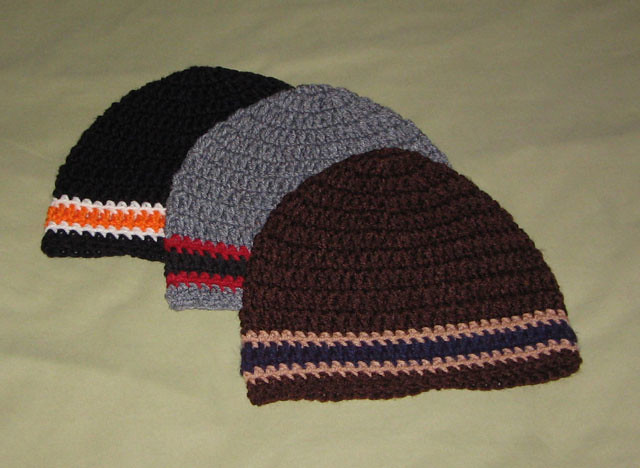
In the case of high altitude treks and cold temperatures, you need to wear warm woolen beanies. These will keep your head warm and protect you from the chilly temperatures.
During the trek, you shouldn’t leave your neck exposed. For this, you can use neck warmers made of woolen fabric to keep your neck warm.
If you neglect the cold weather and let your head free in cold temperatures, you may suffer from headaches or dizziness. You also catch a common cold. All these things can create difficulties during your trek.

During the trek, you need to wear UV protection sunglasses to protect your eyes from harmful radiation from the sun. In the higher altitude, there are higher levels of harmful radiation. So if you’re preparing for a high altitude trek, go grab a high-quality UV protection sunglasses.
Remember that regular sunglasses do not come with UV protection features.

In winter, the days are quite short and the daylight hours are very low. Due to this reason, sometimes you may not reach your next checkpoint of the day before the dusk. As the night crawls in, a headlamp will help immensely to illuminate your pathway to your destination.
Torchlights are good alternatives, but these need hands to hold them. Likewise, headlamps are hands-free so that you can do any other task at hand.
Breathable underwear is a good choice for trekking in Nepal. You can choose underwear made out of Synthetic fabrics. This fabric is high wicking, quick-drying, and best for long and strenuous treks too.
Sports Bras
For women, we recommend sports bras made from synthetic fabrics. A good quality sports bra will absorb all the moisture from the skin and pass through other layers of clothing. This will keep you dry and comfortable while trekking.
Trekkers usually wear clothes in different layers for trekking in Nepal. This concept is also called Layering. Basically, you wear layers of clothes of different fabrics and materials, one on top of the other.
Layering helps to allow the moisture to allow from the inner layer to the outer layer. This prevents the inner layers from staying wet and keeps your body dry. It is also favorable for the changing weather conditions during the trek. If the temperature rises dramatically, you need to take a layer off from your body, and you’re good to go. If the temperature falls too low, add a layer to keep the body warm.
You can do layering in three layers.
The Inner Layer
The Middle Layer
The Outer Layer
This is the base layer that sticks tightly to your skin and soaks all your sweat during your trek. High wicking fabric like Merino Wool is the best material for this layer.
We recommend packing two half sleeve trekking shirts for short treks while 4 to 6 full and half sleeve trekking shirts for long high altitude treks. The half sleeve will be perfect for hot weather while the full sleeve ones will be perfect for cold weather.
As for the lower body, two trekking trousers should be good enough.
The middle layer sits above the base layer and acts as an insulating layer.
Usually a fleece jacket, this layer should be lightweight and made of polyester synthetic wool such as polar fleece.
The outer layer sits on top of the middle layer and is usually the last layer. This layer is the most crucial layer for high altitude treks.
Thick, warm, wind, and waterproof jackets are the best outer layers. The trousers should also hold the same features as warm, wind, and waterproof as the jacket.
This layer protects the trekker from unpredictable weather, mostly from the freezing temperatures in the high altitudes.
Quick Note: You need to avoid jeans and cotton clothes for any trekking adventures.
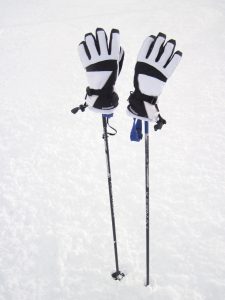
While trekking, you also need to protect your hands and fingers. You should pack two types of gloves for your hands, inner gloves and outer gloves.
Inner gloves are the first pair of gloves that should be lightweight and quick drying. Outer gloves are the second pair of gloves that should be warm, durable, and waterproof.
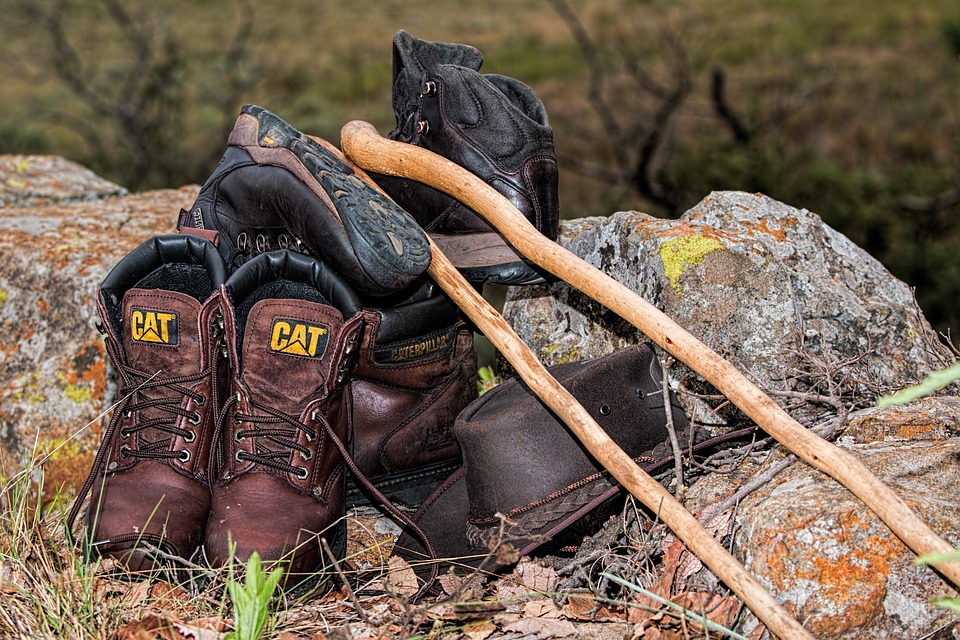
Footwear is an essential thing that you wear for trekking. While you trek in Nepal, you need good quality and comfortable hiking boots. This boot needs to be waterproof too.
Your trek in Nepal will consist of many days along with 5-6 hours long uphill or downhill hikes. For this, you need comfortable shoes that are well-worn too. New, unworn shoes may give blisters on your feet and so wear them a few times before you start trekking with them.
Pack also a pair of basic trekking shoes if you choose to take long treks in Nepal.
As for socks, merino wool socks that are high wicking and quick drying are the best. Take around two pairs for short treks and 4-6 pairs for long treks.
In case of high altitude treks or treks to cold places, pack a pair of thick and super warm thermal socks. Wear them while you sleep.
If you’re trekking in the monsoon season, you should consider wearing gaiters that prevent water, mud, and tiny rocks from getting into your boots.
Other Essentials When Trekking in Nepal
Rain P rotectives
If you choose to trek in the monsoon season, you need rain protective gear. For these monsoon treks, raincoats and waterproof boots are ideal.
You could opt for an umbrella. However, an umbrella requires a hand to hold it, this will create hindrance in the case of long downpours. Thus, wind and waterproof jackets are also quite handy in cases of long high altitude treks.
While trekking in lower altitudes, trekking pants might be hot and sweaty, makes the trek quite uncomfortable. In this case, shorts will be more comfortable and refreshing instead of full pants or trousers.
Sleeping Gear

While sleeping gear may not be something that you wear on your body, you will come in contact while sleeping.
And a four-season sleeping bag is a must for high altitude treks in Nepal. This is because, above the 3,500 meters elevation, even temperatures inside the teahouses and tents will be below the freezing level.
So, to have a comfortable and warm night’s sleep, you need a warm sleeping bag with an insulated hood.
Pack a sleeping bag liner, if in case you choose high altitude treks. This will provide you extra warmth while improving your hygiene.
First Aid Box and Bandages

This is another crucial thing that you shouldn’t forget. While this may not seem necessary for short and low altitude treks, it’s very important.
At high altitudes, even small injuries might take a long time to heal. So you need to clean these wounds and apply bandages to prevent infections.
Personal Items
A few optional things that people may need during their trek in Nepal could be towels, lip balm, sunscreen, toothpaste, toothbrushes, toilet paper, baby wipes, sanitizers, etc.
The towel should be a medium-sized quick-drying towel to dry yourself off after baths or rainfalls.
What You Don’t Need To Pack When Trekking In Nepal
During trekking in Nepal, you may carry some strange things which are not necessary.
Here are the lists of things that you should consider leaving at home.
Jeans Pants
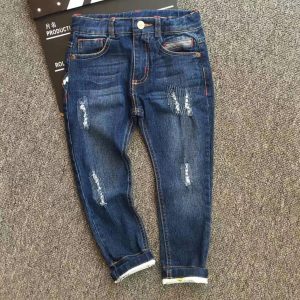
Jeans are quite uncomfortable for hiking/trekking purposes. Because these are not quite good at drying quick. Wet pants might make your trek even more difficult.
So choose trekking trousers instead, which are more flexible and comfortable to wear for long hiking adventures.
Cotton Clothes
Avoid cotton as much as possible. Cotton is hydrophilic. It traps moisture in the clothes and stays wet for long periods. This is very unhygienic and could create problems for you during your trek in Nepal.
Instead, you can use clothes made from high wicking fabrics like merino wool or polyester. These will dry in no time even if they’re wet. This will decrease the load that you’ll be carrying while you trek.
Too Many Clothes
You do not need to wear an excessive number of clothes. Until and unless you are going for a very long and high altitude trek. You do not need to pack higher than the recommended amounts of clothing. You won’t be wearing them either so why increase your carrying load in vain.
Fancy Clothes or Formal Clothes

Trekking in Nepal is definitely not to display one’s fashion choices. Nor are you going for someone’s wedding ceremony. So avoid clothing like a suit, tie, tuxedo, gown, etc.
Women should also avoid very short clothes. Wearing short clothing in public might offend the villagers in the locations that you might be traveling.
Trekking in Nepal is one of the most thrilling adventures of your lifetime. And the right clothing choices will enable for a pleasant trekking experience without any complaints.
In a nutshell, wear a sunhat, avoid cotton clothes, wear clothes in layers, grab a pair of good quality hiking boots and you’re almost ready for your fantastic trekking adventure.
So this sums up the guide on what to wear when trekking in Nepal. Now pack your backpacks, head for the airport, and enjoy your trekking adventure in Nepal.
What clothes to wear for trekking in Nepal?
For trekking in Nepal, use the concept of Layering. This is basically wearing clothes in layers, one on top of the other instead of one thick, bulky, uncomfortable jacket.
Normally there are three layers. The inner layer is trekking t-shirts made of high wicking material. The middle layer is a fleece type jacket that acts as an insulator. And the outer layer is a warm, wind, and waterproof jacket that protects from the freezing temperatures at high altitudes.
As for the lower part, waterproof trekking pants or shorts are best. Go with merino wool socks combined with comfortable and good quality hiking shoes.
You should also wear a sunhat to protect from the sun and a beanie to protect from the cold. For high altitude treks, you should also cover your hands.
Wear UV protection sunglasses to protect your eyes from the harmful radiation from the sun. There will be a higher amount of radiation at a higher altitude.
Lastly, if you’re planning for trekking in the monsoon season, carry rain protectives too. Raincoats or waterproof jackets could be ideal.
You may also like...

Trekking in Nepal in September

Best Time to Visit Nepal

Trekking in Nepal in June

- Why with Odyssey
- Odyssey Team
- Legal Documents
- Terms and Conditions
- Client Reviews
- Photo Gallery
- Upper Dolpo Trek – 22 Days
- Lower Dolpo Trek – 15 Days
- Rara Lake Trek – 15 Days
- Rolwaling Tashi Lapcha Pass Trek – 16 Days
- Jugal Himal Trek – 14 Days
- Ganesh Himal Trek – 15 Days
- Bhairav Kunda Trek – 10 Days
- Api Himal Trek – 19 Days
- Makalu Base Camp Trek – 16 Days
- Kanchenjunga Trek – 22 Days
- Khopra Ridge Trek – 11 Days
- Dhaulagiri Trek – 17 Days
- Guerrilla Trek – 13 Days
- Everest Base Camp Trek – 14 Days
- Everest Base Camp Trek – 13 Days
- Everest Base Camp Short Trek – 12 Days
- Everest Base Camp Trek via Salleri – 16 Days
- Everest Chola Pass Trek – 16 Days
- Everest High Passes Trek – 18 Days
- Everest Gokyo Lake Trek – 12 Days
- Everest View Trekking – 8 Days
- Pikey Peak Trek – 08 Days
- Short Everest Trek – 5 Days
- Everest Thame Legendary Trek – 06 Days
- Everest Yeti Trail Trek – 8 days
- Everest Classic Trek – 20 Days
- Annapurna Circuit Short Trek – 12 Days
- Annapurna Tilicho Lake Trek – 15 Days
- Annapurna Base Camp Trek – 14 Days
- Annapurna Circuit Trek – 19 Days
- Australian Camp Trek – 5 Days
- Mohare Danda Trek – 8 Days
- Dhampus Trek – 5 Days
- Ghorepani Poon Hill Trek – 8 Days
- Jomsom Muktinath Trek – 12 Days
- Mardi Himal Trek – 09 Days
- Royal Trek – 6 Days
- Annapurna Panorama Trek – 7 days
- Nar Phu Valley Trek – 16 Days
- Sikles Trek – 8 Days
- Panchase Trek – 6 Days
- Langtang Circuit Trek – 19 Days
- Langtang Tilman Pass Trek – 18 Days
- Langtang Ganjala Pass Trek – 14 Days
- Gosainkunda Frozen Lake Trek – 7 Days
- Langtang Helambu Trek – 7 Days
- Langtang Valley Trek – 08 Days
- Langtang Gosainkunda Trek – 14 Days
- Langtang Tamang Heritage Trek – 09 Days
- Manaslu Circuit Trek- 12 Days
- Manaslu Tsum Valley Trek – 11 Days
- Manaslu Circuit With Tsum Valley Trek – 18 Days
- Upper Mustang Trek – 16 Days
- Lower Mustang Trek – 12 Days
- Chisapani Trek – 6 Days
- Balthali Village Trek – 5 Days
- Nagarkot – Dhulikhel Trek 3 Days
- Namobuddha Trek – 2 Days
- Nagarkot Trek – 3 days
- Dhulikhel Trek – 04 Days
- Helicopter Trip to Everest Base Camp
- Annapurna Base Camp Helicopter Tour
- Nepal Pilgrimage Tour – 10 Days
- All Nepal Tour – 15 Days
- Kathmandu City Sightseeing Tour – 06 Days
- Nepal Heritage Tour – 11 Days
- Nepal Historical Tour – 13 Days
- Best of Nepal Tour – 10 days
- Basic Nepal Tour – 3 days
- Nepal Cultural Tour – 12 Days
- Nepal Adventure Tour – 14 Days
- Nepal Buddhist Tour – 9 Days
- Island Peak Climbing – 13 Days
- Mera Peak Climbing – 15 Days
- Lobuche Peak Climbing – 15 Days
- Tharpu Chuli Peak Climbing – 14 Days
- Pisang Peak Climbing – 15 Days
- EBC with Island Peak Climbing – 15 Days
- Mera & Island Peak Climbing – 19 Days
- Yala Peak Climbing – 10 Days
- Chitwan Jungle Safari Tour – 04 Days
- Bardia Jungle Safari – 04 Days
- Koshi Tappu Wildlife Safari – 4 days
- Namobuddha Hiking
- Shivpuri Hiking
- Phulchowki Hiking
- Champadevi Hiking
- Nagarjun Hiking
- Trishuli River Rafting
- Sunkoshi River Rafting
- Bhotekoshi River Rafting
- Ultra Light Aircraft
- Mountain Flight
- Paragliding
- Bungee Jump
Equipment and Clothing
You should arrange your equipment and clothing well for Nepal trekking . You can bring these items with you, or you can buy them in Nepal. The necessary equipment and clothing for Nepal trekking are given below
- Lightweight walking boots and spare laces.
- A pair of sneakers to wear in the camp at night or in case your boots are wet.
- Warm jackets: fiberfill or down should be adequate. This kind of jacket is essential during the winter months, from December to February.
- Sleeping bag: to -15 C or sleep sheet (if renting), a rainproof jacket with hood, or a poncho. Get the one that is guaranteed to be waterproof.
- Woollen shirts and thick sweaters are essential during the winter months, December through February. Thick sweaters can be purchased in Kathmandu .
- A pair of lightweight or heavyweight trousers is useful higher up the mountains in the morning and at night.
- Windproof or waterproof trousers are a necessity on all treks going above 3,000 meters.
- Thermal underwear: These are excellent and comfortable to sleep in at night. In winter, thermals are for wearing in camp and the tent.
- 1-2 pairs of loose-fitting long shorts or skirts.
- 2-4 cotton T-shirts.
- A lightweight long-sleeved shirt is especially suitable for avoiding sunburn.
- A woollen hat is useful to wear in the morning and at night. During winter, it is an essential item.
- A sunhat: make sure it has a wide brim to cover the face and neck.
- A pair of gloves: leather with lining and woollen gloves are best.
- A pair of sandals to wear in toilets, cities, and camps.
- 2 pairs of thin and 2 pairs of thick woollen socks.
- Underwear: normal quantity; swimming costume; hankies.
- A duffel bag or kit bag to carry your gear while trekking .
- Daypack: This is a small rucksack to carry personal requirements for the day, e.g. toilet items, camera, film, towel, soap, toothbrush, a book, etc.
- Water bottle.
- Snow glasses and sunglasses.
- 3–4 large plastic bags to separate clean clothes from dirty ones.
- 6–10 smaller plastic bags to dispose of garbage.
- A wallet and/or money belt with a compartment for coins.
- Toiletries: large and small towels, and you can buy toilet paper in Kathmandu and some villages in the mountains.
- A small headlamp and/or flashlight or torch with spare batteries and bulbs, candles, and a lighter to burn toilet paper.
- Snow gaiters are essential during the winter season and all treks going over high altitudes.
- An umbrella (optional), which is very useful to ward off the dogs, suitable as a walking stick, to use as a sunshade, and also useful when it rains.
- Regarding materials: camera and film, mobile, charger, notebook, rubber band, pen and pencil, a diary, a calendar, a pocket knife, trekking map, binoculars (optional), an inflatable sleeping mat, and some passport photographs.
- Personal medical supplies.
Quick Links
- Annapurna Panorama Trek – 7 Days
WHY WITH ODYSSEY
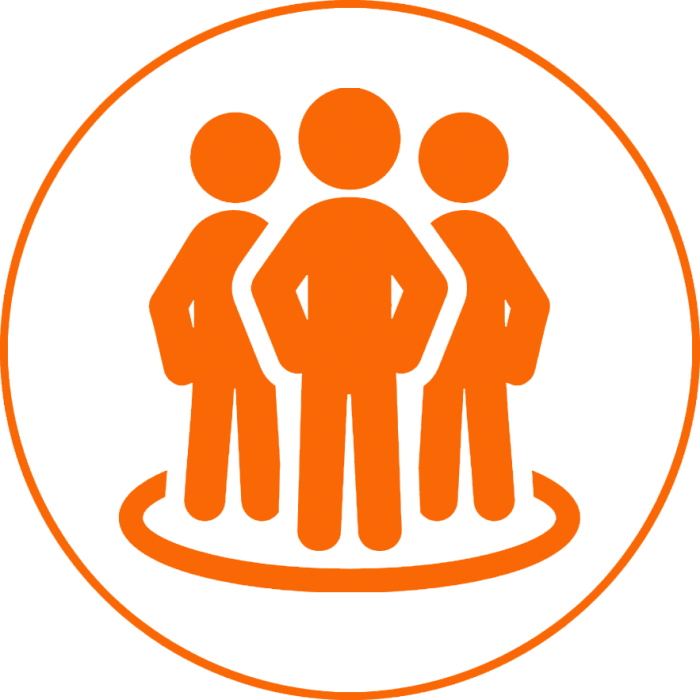
Enthusiastic Team
Our company boasts an exceptionally enthusiastic team whose passion and dedication act as the heartbeat of our success.
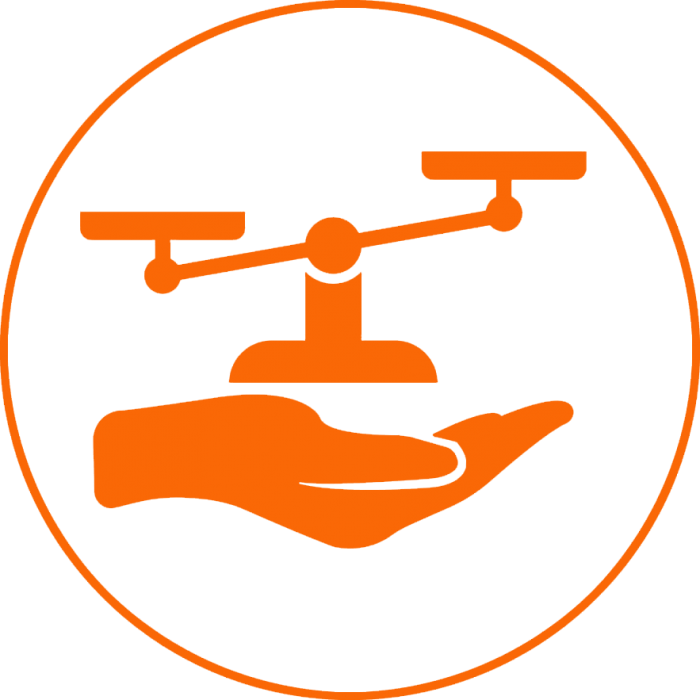
Responsibility and Ethics
We practice and promote sustainable and ethical tourism wherever we Travel & Treks.
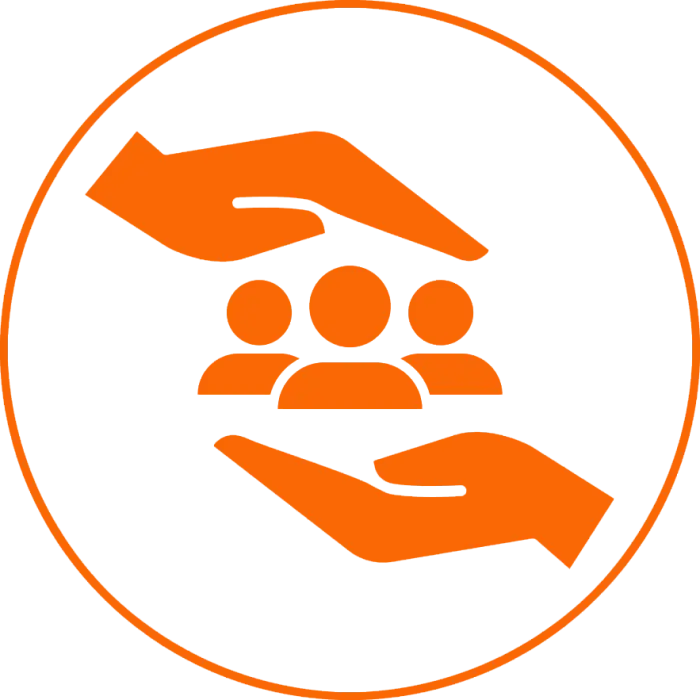
Concern for Safety
We at Odyssey Treks always have the security of all our customers as a foremost priority at all times.
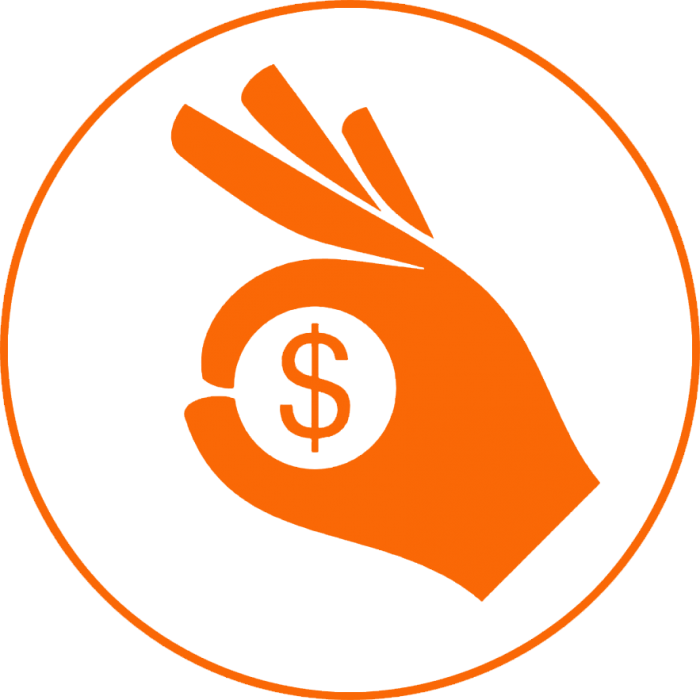
Affordable and discount price
We provide high-quality services at an affordable price, ensuring accessibility without compromising on value.
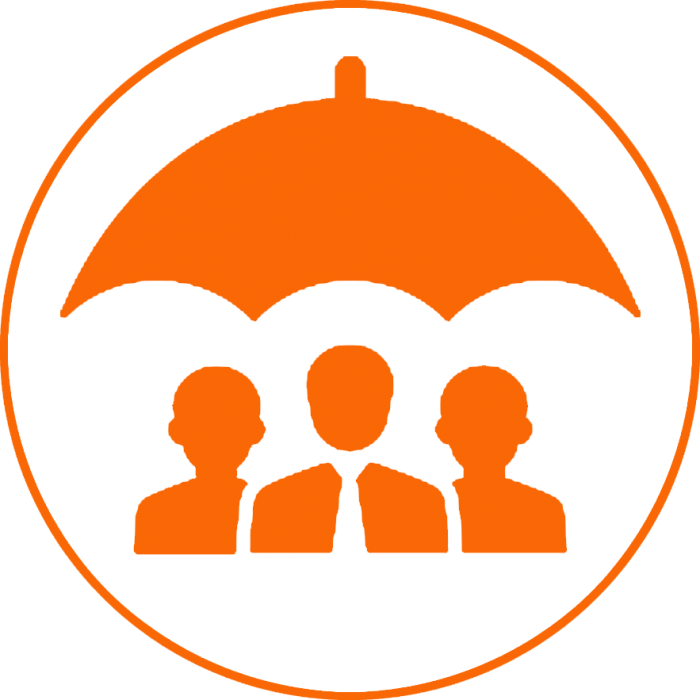
Staff insurance
Giving priority to safety, all our employees are insured by reputed insurance companies in Nepal.

100% satisfy customers
We have maintained a 100% satisfied customer record in all types of tourist activities by consistently prioritizing our excellent service.
- Search Search Search …
- Search Search …
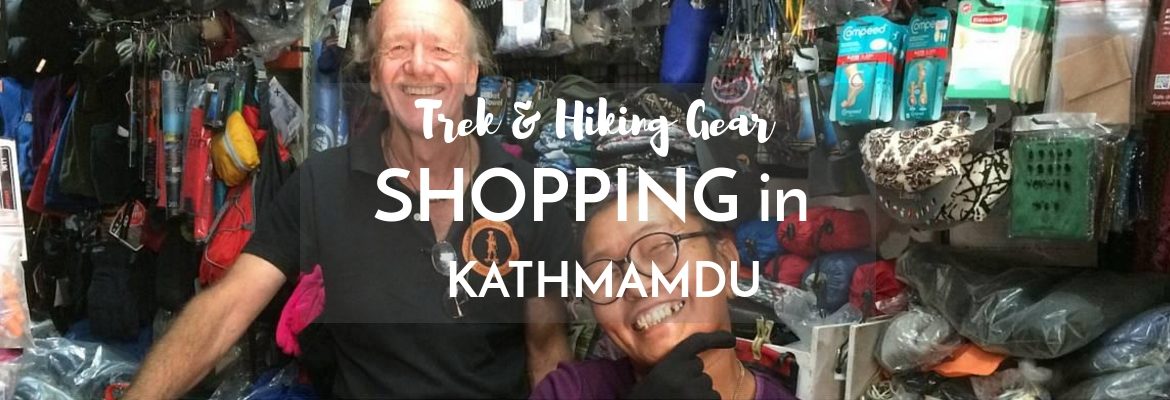
Shopping in Kathmandu for Trekking Gear
Shopping in Kathmandu for trekking clothes, gear and equipment is an overwhelming experience for the first-timer. So here’s our guide to making it easier. for you After 11 months on the road, living in the same two pairs of trousers and four t-shirts we had to buy some trekking gear in Kathmandu. To cut a long story short, we ended up in Shona’s Kathmandu Nepal buying virtually everything there!
UPDATE: May 2023: Thanks to readers for confirming that Shona’s Alpine Kathmandu is continuing to supply trekkers and hikers with gear!
THIS POST MAY CONTAIN COMPENSATED AND AFFILIATE LINKS MORE INFORMATION IN OUR DISCLAIMER
We’d been frozen during our time in and around Darjeeling, but we’ve arrived in Kathmandu overland from India to Nepal specifically to head off on a trek and therefore we need something a little more substantial than the Karrimor and Go Outdoors T-Shirts we’ve been living in. We needed to go gear shopping in Kathmandu.
If you want to see what we trekked with – here’s our Trek Gear List. We planned to supplement the stuff we’d been traveling with for 10 months, buy only what was needed, and donate what we did not want to carry afterward. Therefore we were on a budget.
What Trek Are We Going on?
We are doing the Everest Base Camp via the Cho La Pass. It is an 18-day trek that starts with us flying from Kathmandu to Lukla. We then head up to Namche Bazaar, then towards the Gokyo Lakes, over the Cho La Pass to Everest Base camp, and return via the Tengboche Monastery.
Read a Day by Day Guide to Trekking to Everest Base Camp
Our day by day guides to trekking to Everest Base Camp include step by breathless step guides.
- Day 1: Lukla to Monjo
- Day 2 – Monjo to Namche Bazaar
- Day 3 – Namche Rest Day – Exploring the Khumbu Valley
- Day 4 Namche to Phortse Tenga
- Day 5 Phortse Tenga to Dhole
- Day 6 Dhole to Macchermo
- Day 7 Macchermo Rest Day
- Day 8 Macchermo to Gokyo
- Day 9 Gokyo Ri
- Day 10 Gokyo to Thangnak
- Day 11 Thangnak to Phortse Tenga
- Day 12 Phortse Tenga to Dingboche
- Day 13 Dingboche to Lobuche
- Day 14 Lobuche to Gorakshep
- Gorakshep to Everest Base Camp
- Day 15 Summiting Kalapathar
- Day 16 Dingboche to Deboche
- Day 17 Deboche to Monjo
- Day 18 Monjo to Lukla
Most Important Item to Buy Before Trekking
The most important item you should consider before setting off on a trek is an insurance policy. Most treks in Nepal are at high altitudes. That carries significant health risks. Read our article on travel insurance for Nepal here.
Trekking Gear to Buy in Kathmandu
Boots for a start – there is a very high likelihood that we’ll need crampons as well as just boots. You can also imagine that our warm weather gear just isn’t going to cut it.
You can find our entire Trek Gear List here – including what we brought with us, and what we donated to Nepali Porter Charities too.

We’re in Thamel, Kathmandu
We’re staying in Thamel, the tourist, backpacker area of Kathmandu, at a great cheap hotel – it’s easy to find cheap places to stay in Kathmandu, but you’ve probably arrived here after a long trip, so we recommend booking your accommodation before you get here.
It seems like every other store is a trekking store. And then there are restaurants and cafes and bars.
And if you’re short on tie-dye, hemp, woven handmade crafty things, then you’ll be in your element here.
Where to Stay in Kathmandu
Karma Boutique Hotel – Jyatha Marg, Thamel, Thamel, 44600 Kathmandu, Nepal Check Rates here Great location, friendly staff, and very clean. All rooms are equipped with a flat-screen TV. Some rooms have a seating area where you can relax. Every room includes a private bathroom. For your comfort, you will find slippers and free toiletries. Karma Boutique Hotel features free WiFi throughout the property. Reserve your room now
Yatri Suites and Spa – Amrit Marg(Manang Plaza), Thamel, Thamel, 44600 Kathmandu, Nepal. You can reserve a room here. Great location with 24-hour reception, gift shop, and bar. Some rooms have seating areas, Free Wifi throughout, plus Flat-screen TV and AC in each room. Grab a room at this superb spot in Kathmandu
Thamel Villa – Chaksibari Marg Thamel, Thamel, 44600 Kathmandu, Nepal – Reserve at this great boutique hotel with an airport shuttle service. Breakfast is served daily, 24-hour desk, a great location if throughout, and Air-conditioned rooms. All rooms include private bathrooms and flat-screen TV, fridges, and kettles. Plus rooms have seating areas and some rooms have terraces. All rooms have a seating area and some have a terrace. Book your room now!
Shopping in Kathmandu – the shops
There are legitimate brand stores here in Kathmandu. You’ll pay only around 5% cheaper than you would at home. If you’re looking for legitimate branded gear, then you’ll find most of the brand stores on the road into Thamel, from Durbar Marg. This road is called Tridevi Sadak. Here are the brand stores that you’ll find there.
- Red Fox Kathmandu: Narayanhiti Path, Lal Durbar Marg
- Sherpa Kathmandu: Narayanhiti Path, Lal Durbar Marg
- Black Yak Kathmandu: Narayanhiti Path, Lal Durbar Marg
North Face Kathmandu Store
You’ll find the official North Face Shop in Kathmandu at Tridevi Sadak, 44600, Nepal. It’s in Thamel near the Garden of Dreams.
Mountain Hardware Shop Kathmandu
You can find Mountain Hardware in Kathmandu on Tridevi Sadak.
Shops selling fake branded trekking gear in Kathmandu
In all the other shops we’re of the opinion that everything is fake. Some are better than others. There are legions of shops here. Legions. There are no prices on anything. It can be completely overwhelming. Every other shop in Kathmandu is a trekking shop. Kathmandu is one of the easiest places to buy hiking gear.
READ THIS POST The Best Filter Water Bottles To Travel With
Some stores have a good reputation for non-branded, locally made gear. One of those is Shonas Alpine Kathmandu, Nepal. We recommend Shona and Andy who run the shop. They won’t rip you off and you’ll get decent enough gear for your trek. We found this to be one of the best places for buying trekking gear in Kathmandu. Shonas Rentals is another service that they provide – they provide trekking gear rental in Kathmandu. You can even rent sleeping bags, down jackets, and tents from them. If they don’t supply the specific trekking equipment that you’re looking for then they’ll tell you where you can get it.
It’s not just us, I’m sure in the process of finding this post you saw a lot of reviews about the best place to buy trekking gear in Kathmandu. And the name Shona’s Alpine is referenced by many different people.

What to Pay for Trekking Gear in Kathmandu
We have a list of what we need to buy. We spent all of yesterday figuring out what starting prices were, as we’d met our guide, Ramesh, who told us that we should expect to pay 60% of what folks start at. It’s pretty difficult when we found the what looks like the same gear – a thermal top for instance for a starting price of 2,100, 2,500, and 3,500 Nepalese Rupees in three successive stores.
It starts as amusing going into a store when clearly the person trying to sell you something is making the price up on the spot. The look of concentration that passes across their face as they size you up, they look at what you’re wearing, what you’re carrying, and presumably the look of desperation on your face before they then stare into the middle distance and pull a number out of the air.
To a certain extent, the cost of the trekking gear in Kathmandu depends on what you’re prepared to pay and how good a negotiator you are, especially if you’re going to the knock-off/fake shops.
Don’t buy Nepalese Fakes.
This is what we were told in one shop. “You don’t want the Nepalese fakes. You want the Chinese fakes. They’re better”. Make up your own mind, if you haven’t brought your own gear with you.
And that was amusing in itself. I never really thought that there would be knock-offs of the knock-offs. Neither did I consider that I’d be considering Chinese knock-offs to be good quality.
I have no idea how to check what is a Nepalese fake versus a Chinese fake. We checked the gear that we bought as much as we could. Trying to pull it apart, looking at the seams. On our boots, we tried the soles and looked at the inner soles. Get a general sense of the quality of the kit.
We also bought duct tape, super glue, and a sewing kit in case we needed them. We didn’t. All our gear that we bought in Kathmandu worked for our trek. I am still using the thermals, gloves, and hat today in 2023.

After a full day of this. It’s less than amusing. We were chased out of several stores with folks screaming, “well how much do you want to spend?” and with the price halving from the back of the store to the front – and these are tiny stores.
Little wonder there are so many bars here. Never have I found shopping so much hard work. The shopping list now seems endless.
Shona’s Store – Kathmandu
The Internet in its wisdom had told us of a British Expat called Andy Griffeths, married to a Nepalese woman called Shona. They have a store – “Shona’s Alpine Kathmandu” that several blogs raved about. Honest, said many of the sites, and Trustworthy said others. Near Thamel said yet more, “just ask any local, they all know where Shona’s is”.
Four locals down and we were still none the wiser. Add to that the fact that the locals call the streets different names to that on Google Maps, and the depression about having to buy gear continued until, trudging towards our hotel in defeat, there she was. On a pale blue signboard, SHONA’S in white lettering.

Perhaps it was the accent – Andy might have left the UK 40 years ago – and as well as Nepal he calls Perth, Western Australia home now – but there’s still a strong Brummie accent there. Or perhaps it was the no-nonsense advice as to what we’d need for the trek – including what we definitely didn’t need it was all just so easy. Add to that no bargaining (and the price we paid seemed fair compared to all the other stores we’d visited).

And so, less than an hour later, we walked out with 95% of our list of gear satisfied – with at least 5 items not even purchased – he’d told us how we could manage without – Andy used to be a guide and we’d explained which company we were going with ( World Expeditions ) and which trek (The Everest Circuit and Cho La), so you can add me to the list of folks who will now recommend him and Shona.
Of course, most of their items are of a Nepal/Chinese origin but the prices are fixed and cost about 60% of the asking prices of other stores so seemed about right.
How to Find Shonas in Kathmandu
So on the off chance that you’re in Kathmandu searching for gear, here’s how to find them.

First of all, you need to be in the Thamel area of Kathmandu. Then you’re looking for a road that runs parallel to Thamel Marg. The locals call it Jyatha Marg. Google calls it Amrit Marg. If you leave Tridevi Sadak and turn to the south, down Amrit Marg, then Shona’s is on the right-hand side (spot the vertical white on the blue sign on the lamp post). Just past the turn down for Rumdoodles. Easy.
The Address of Shonas Kathmandu is Amrit Marg, Kathmandu. Shona’s Alpine Opening hours are Sunday – Saturday 0900 – 1830. The telephone number of Shonas Alpine is +977 984 3688910.
We wanted gear that wasn’t going to break the bank, that would last the trek, and that we could donate to our Porters when we were finished and Shona’s ticked all the boxes for us.
We arrived in Kathmandu by way of Kakarvitta and you can read about that here.
Essentials for an Everest Base Camp Trek
- To do the Everest Base Camp trek, a medical evacuation by helicopter will cost at least US$5,000. The fittest member of our group was evacuated from Macchermo with altitude sickness. Considering travel insurance for your trip? World Nomads offers coverage for more than 150 adventure activities as well as emergency medical, lost luggage, trip cancellation and more.
- Hiking Poles – these are lightweight, packable , and a great aid. Want more options for trekking poles? My guide to the best budget trekking poles is here .
- Good layering thermals
- Great sunglasses – the glare here is amazing- my Maui Jim sunnies have been to Everest Base Camp, and Macchu Picchu, they’ve sailed the Atlantic, and been to the Galapagos & Easter Island.
- Amazing socks – I’ve hiked in Bridgedale Socks for 10 years now and they’re amazing.
- If you’re looking for hiking boots on a budget – then here’s our guide to the best budget hiking boots for men
And… the most important thing…
- A great team to trek with – you can check options here .
Travel Tips for Exploring Nepal
- Read about Nepal in these incredible books
- Read our guide to travel insurance for Nepal
- Get online immediately with an eSIM for Nepal
- Considering travel insurance for your trip? World Nomads offers coverage for more than 150 adventure activities as well as emergency medical, lost luggage, trip cancellation and more.
- Book the best Nepal tours and guides on GetYourGuide , Klook , and Civitatis
- Save money in Nepal with a Wise debit card
- Book accommodation in Nepal with Booking.com and Hostelworld
We receive a fee when you get a quote from World Nomads using our affiliate links. We do not represent World Nomads. This is not a recommendation to buy travel insurance.
ASocialNomad is a participant in the Amazon Services LLC Associates Program, an affiliate advertising program designed to provide a means for sites to earn advertising fees by advertising and linking to amazon.com, amazon.co.uk, and amazon.ca. Amazon and the Amazon logo are trademarks of Amazon.com, Inc. or its affiliates. As an Amazon Associate, I earn from qualifying purchases .
Sarah Carter
Leave a comment cancel reply.
Your email address will not be published. Required fields are marked *
Save my name, email, and website in this browser for the next time I comment.
10 thoughts on “ Shopping in Kathmandu for Trekking Gear ”
- 10 comments
Do you know of shops that rent backpacks? We’re a family of 5 doing the Poon Hill Trek. Trying to keep costs down. This article is very helpful -Thanks!
A few questions: How do you know which is a Nepalese copy and which Chinese?
Can’t you share the list of items you bought with the prices you paid?
Hi there, sorry for the delay, I was going back through my notes to make sure that I had a full list for you.
I’m afraid I haven’t got a clue how you tell a Nepalese fake from a Chinese fake, all I can say is that we checked seams, looked at soles and generally tried to check the quality. All the gear we bought from Shonas was excellent. We still wear some of it today. The boots that we bought lasted until the end of the trek, although the soles were looking as though they might need help staying on the boots at the end. We bought the following: Note that this is EACH – per person. CLOTHES & BOOTS Fake Salewa hiking boots (seriously comfortable – and I hate boots that protect my ankle, I usually find them unbearable! – and no blisters despite not wearing them in), thermal tops x 2, thermal bottoms x 2, 1 pair of hiking socks, 35 litre daypack, crampons, gaiters, waterproof trousers with zip to the knee, fleecy beanie hat, buff, head torch with spare batteries,. TREKKING GEAR, HEAD TORCHES, WATER BOTTLES We also bought tissues, toilet paper, solar charger, trekking pole (each), 2 packets of wet wipes, chocolate, candies and mints, cold remedy, suncream, superglue, notepad, widemouthed Nalgene bottle Plus Nigel bought a thick zip-up fleece. We paid US$260 in total for everything. Pretty much everything came from Shona’s apart from the boots, the solar charger and the candies. I hope this is helpful – you can find the full list of what we bought in our TREK GEAR LIST post as well.
Sorry but I’m going to strongly disagree with one aspect of your otherwise enjoyable post ! Don’t buy fake boots.
After living 22 years living as an expat in China I always, *always* now buy the genuine article after having two pairs fail on local hikes (I’d never trust them anyway to multi-day international hikes). Imagine when you’re at 5,000m and -20C and your boots fail (this exact scenario happened to one partner on one of my trips). Luckily I always have Duct Tape wrapped around my hiking poles for emergencies (so I don’t have to go into my bag for it and I don’t care about the aesthetics – ha!) and that managed to suffice until we got back down to Namche Bazaar.
You can check them all you want but when you’re putting 20-30K steps a day, on rock, on them if they are not well built they will fail (or poor build quality means they rub and give you very painful blisters spoiling the whole trek. You will then curse yourself for not paying an extra $100-150 for a pair of genuine mountain hiking boots.
Thanks Kevin, this was the only time we hiked NOT in our Merrells, if we’d been heading home afterwards we would have bought a pukka pair, as it was we felt comfortable having our merrells as a backup in our packs 🙂
Thanks for the great article. I’m going in May and wanted to avoid paying the hefty prices here in the USA. To get an idea, how much did poles cost and also how much were the light jackets and trousers? I’m just trying to gauge how much savings there are to be had.
Thanks for the great post. I’ll be sure to share it on my Twiter feed.
The poles and waterproof trousers were bought as part of a bundle from Shonas – I haven’t got it broken down, but with all of it, I do remember thinking that it wasn’t expensive. The waterproof trousers were amazing, the open to the knee is superb. Since Nepal we’ve gone for z-type carbon poles (the ones at Shona we just went for cheap and cheerful), as they can now fit in my RTW backpack when we fy anywhere. The poles we bought at Shonas were heavy and did not fold/come apart. The light jacket I took with me from the UK, it was a cheap stowaway that cost me around US$10 equiv, and I used it for 3 years before the seams went, so I went back (it was from Go Outdoors in the UK) and bought the exact same jacket again… different colour of course!
I was in Kathmandu in Jan. If I wanted to purchase something from overseas is it possible?
Hi there Guy, your best bet would be to make contact with someone you trekked with or stayed with and ask them to help you. if it was legitimate branded gear then you’d be best trying to contact the brand and doing it that way. The alternatives are to find someone travelling there from your current location and do a deal with them.
Thanks for this article. I arrive in Kathmandu this Sunday Oct 28th. The weather seems to be fairly unpredictable and vastly differently regionally. I plan to do some last minute shopping upon arrival and appreciate a good honest referral!
Privacy Overview

Nepal Trek Routes
Your Guide to Trekking and Hiking in Nepal
Nepal Trekking Packing List – What to Pack for Your Trek
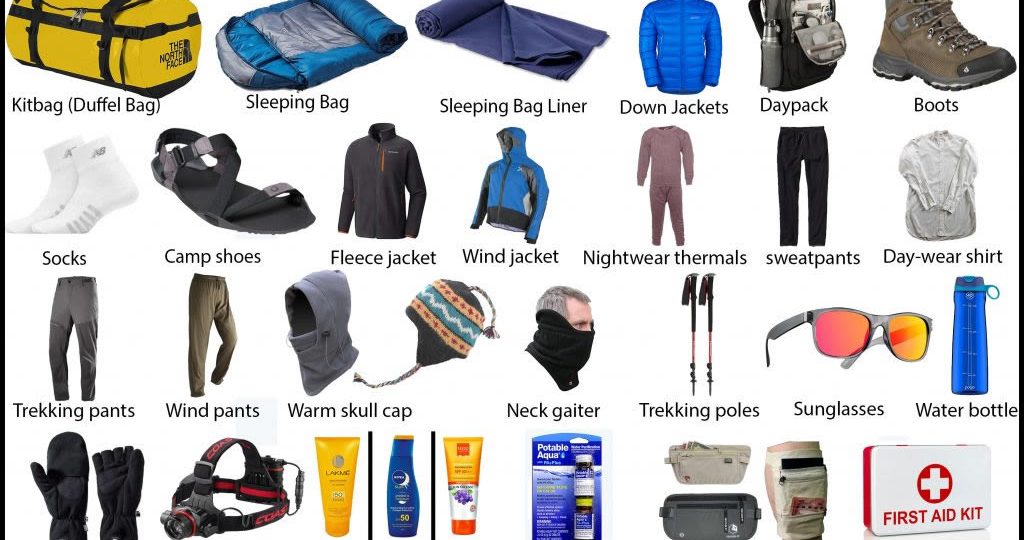
When you plan a trek to Nepal, the time of year you trek will impact your Nepal trekking packing list. Why is it important to pack only the essential items? You may be tempted to pack for all eventualities, but our advice is to pack light. Carting a heavy luggage along steep mountain trails would ruin your holiday, even though your porter may be carrying most of the weight.
What to Pack for Trekking in Nepal: Packing list for Trekking
Packing to go trekking in Nepal can be a daunting task and even more so if this will be your first trek in Nepal, and so you really don’t have much idea what to expect. When packing to go trekking in Nepal the tendency can be to pack for all eventualities. In an ideal world this would be the right approach. However, there’s one key aspect that means that packing everything you might need and the kitchen sink is probably not a wise idea.
You or a porter will have to carry all that dead weight up and down steep mountain trails for days on end. And nothing will ruin a Nepalese trek like carting an overloaded, heavy pack around. So, the number one rule to keep in mind when making a packing list for a Nepalese trek is: pack light!
When you make your Nepalese trek packing list there are a few things you should consider:
Are you on an organised or fully independent trek?
On an organised group trek there might be a per person weight/baggage limit. On a fully independent trek things boil down to what you can comfortably carry. Our suggestion is to keep your bag to a maximum weight of 15kg. Also, if you’re going to fly to a trail head be aware that most internal flights in Nepal have strict baggage weight limits and these can be as little as 15kg for hold luggage.
Will you hire a porter?
We would always suggest hiring a porter. Not just does it provide income to the local community, but it means that you can skip daintily over the Alpine flower meadows carrying just the minimum of gear for the day ahead (water, a jumper and rain jacket, a snack and a camera) while a porter shoulders the load.
There’s no doubt about it, porters are tough and you will likely see porters carrying a couple of large, heavy gas canisters and a big bag of other supplies heading to remote trekking lodges with nothing on their feet but a pair of flip-flops. However, tough as they are, there’s normally a baggage weight limit per porter of 30kg.
You should also ensure that each porter is well-kitted out clothing wise – and provided with adequate food and accommodation. Porters have died after being left out in the elements with insufficient clothing and food.
Where will you be Trekking?
Where you go trekking will have a big impact on what – and how much – you have to pack for your trek in Nepal. If you’re doing a popular, lower altitude (and therefore warmer) trek with good trekking lodges (teahouses) all along the route then you can get away with carrying much less than if you’re doing a higher altitude, longer and remote trek with far fewer facilities.
On a lower altitude trek with plenty of trekking lodges you can bring a thinner, lighter jacket and sleeping bag and you could leave your gloves, woolly hat and thermals at home.
If you’re on a remoter, higher trek, then you will need to carry a lot more equipment and, because many Nepalese treks take you into both hot and steamy lowland valleys and over cold, bleak high altitude passes, you’ll need clothing and equipment for a far greater array of conditions.
You might also need full camping and cooking equipment. This will be considerably more than you can carry alone and so you will need one or more porters, plus all the equipment and food that they might require.
When will you be Trekking?
Whether you’re doing a lower altitude trek or blazing across high altitude passes, the time of year you trek will likely impact your Nepalese trekking packing list.
Put simply, trekking in December through to February is going to be cold no matter where you trek and you will need thicker, heavier clothes to cope. Trekking in May and early June, when temperatures in Nepal are at their highest, means that even at 5,000m it doesn’t get quite as cold as you might imagine (Though don’t bother to pack a bikini. You’ll still need a thick mountain jacket, thermals, fleece, gloves and hat. It’s just that you won’t need to wear several fleeces at the same time!). In the main October-November and March-April trekking season then you’ll need to be prepared for serious cold up high and hot days at lower altitudes.
No matter where, when or how you’re going to trek there are a few items that are near enough essential to pack for a Nepalese trek.
1. Hiking boots: You’ll need boots and not hiking or trail running boots. Make sure they’re waterproof, very sturdy and above all, comfortable.
Don’t buy a cheap pair and make sure you break them in at home before travelling to Nepal. It’s possible to rent (or buy) hiking boots in Kathmandu and Pokhara, but we’d advise against this because the quality might not be up to scratch and poor fitting boots will give you blisters.
And few things can ruin a trek like a big fat blister or three. Also, while we are on the subject of boots and blisters. Bring a roll of Second Skin which is a thin sticking plaster like material that helps prevent and heal blisters.
2. Winter jacket: A thick, warm, waterproof, breathable, but lightweight jacket is another must. It should keep you toasty in sub-zero temperatures. These can easily be rented in Nepal but most are inferior quality knock-offs of respected mountain brands. Even so, if this is your first high altitude trek then you can probably get away with using one of these rented jackets.
If you’re likely to do a lot of mountain trekking then it makes sense to buy a high quality jacket.
3. Sleeping bag: It gets bitterly cold at night, even at low altitudes in winter (don’t be surprised if the hills surrounding Kathmandu receive a dusting of snow in December and January), and the thin, gap riddled walls of trekking lodge bedrooms provide little protection.
As with jackets, get the warmest yet lightest one you can afford. Remember that when a bag manufacturer says a sleeping bag can be used down to minus ten degrees the reality is you won’t be comfortable in it below about plus five.
If you’re going to be sleeping at high altitude then aim for one that says it will keep you warm down to minus twenty or lower. A really good sleeping bag is an expensive bit of kit and bags can be rented in Nepal.
As with jackets they’re very rarely of good quality, but they will be sufficient for lodge based treks at warmer times of year or at lower altitudes.
4. Water bottle: Take two bottles of at least a litre each and refill whenever possible. Don’t rely on bottles of mineral water. It’s often not available and at the best of times it’s environmentally unfriendly, but up in the mountains where there’s little chance of recycling it’s even worse.
5. Water purification system: You can either use water purification tablets (get enough to treat at least three litres of water a day) or, better, invest in one of the growing number of water purification systems. We strongly recommend the LifeStraw system (get the straw and the corresponding bottle), which allows you to drink water instantly and is very effective at cleaning the water.
On more popular trekking routes some lodges provide pre-treated water but don’t rely on always getting this.
6. Thermals: Two or three thermal tops of different thickness and even a pair of thermal under trousers are worth their weight in gold for colder routes and even on lower altitude treks you’ll probably find yourself using a thermal top at night.
7. Fleeces: Two fleeces, one thin and one thick, are a vital bit of kit for a Nepalese trek.
8. Walking trousers: Don’t try and skip round the Annapurna Circuit in a pair of jeans (yes, we’ve seen trekkers try). Get some comfortable walking trousers. Two pairs should be sufficient for the longest treks.
9. T-shirts/shirts: Many people recommend specialist quick dry shirts designed for trekking. Don’t go overboard with the number of them that you pack because the truth is you likely won’t change your shirt more than once in a two week trek (or perhaps that’s just us…)!
10. Socks: Specialist hiking socks are supposed to reduce blisters and are worth purchasing. However, you should always change your socks frequently (even if you don’t change your t-shirt!) as this seems to reduce blisters as much as any clever equipment. Take at least 3 pairs for a two week trek. Also pack a thick, warm pair of ski socks to keep your toes warm when you arrive at camp.
11. Sandals: Most people appreciate being able to remove their boots at the end of the day and put on some sandals (with or without thick ski socks depending on how cold it is).
12. Hats: A sun hat is vital for hotter, lower elevations and a winter hat or balaclava for up high.
13. Gloves: Take a thick warm pair of skiing gloves and a thin, cotton pair of under gloves. You won’t be able to press the shutter button on your camera or eat properly wearing a pair of thick gloves, but you can with the thin gloves and they’ll still keep your hands warm for a few minutes.
14. Sunglasses: An essential bit of kit at all elevations. The sun reflecting off the snow can quickly frazzle your eyes.
15. Sunscreen and sunblock: Slather lots of sun cream on no matter what the weather or elevation. Use total sun block on lips, nose and ears.
16. Trekking Poles: You might think that a set of trekking poles are the domain of creaky old people, but creaky old people are often wise old people and they know that a set of poles can be a god send. You can use them to help haul yourself up a steep slope and they ease the pain and chance of stumbling on sharp descents. Plus, when you’re not using them, you can wave them around like a sword while pretending to be a knight in armour.
17. Wash kit: Keep this minimal. You won’t get much chance to wash. A little light weight travel towel isn’t a bad idea.
18. Torch: A head torch and spare batteries is a must.
19. Book to read: The evenings can be long. Bring a good book (and not a tablet or Kindle as power sources can be erratic and batteries drain very fast at altitude).
20. Camera: Even non-photographers will want a memory of the stunning Nepalese scenery.
21. Spare batteries: Bring spare torch, camera and phone batteries. Below a certain temperature and above a certain altitude (all of which varies on the product) batteries drain very fast or simply don’t work at all.
Above about 3,000m put the batteries in your sleeping bag at night to keep them warm as this helps to reduce drainage.
22. Snacks: A few biscuits and chocolate bars might help give you that energy boost you need to get over that pass.
23. Backpack: To carry all this you will need a decent, comfortable trekking backpack (don’t contemplate trying to bring any other kind of bag). If you’re using a porter then you will need a small backpack for your day gear and you’ll have to provide a bag (a hold-all is best) for the porter to carry everything in.
24. Insurance: Easily forgotten, but perhaps the most important item of all is a decent, comprehensive travel insurance policy that covers trekking at altitude and in Nepal.
You should check these last two points carefully because many travel insurance policies do not cover trekking above 2,000-3,000m which is problematic in Nepal and some no longer insure people travelling to Nepal at all.
Things not to bother taking on a trek are computers, tablets and such like. They get easily broken on the trail and batteries tend not to work above a given altitude. And more to the point, most other people don’t want to see their fellow trekkers glued to their tablets in a trekking lodge at night.
Altitude and Temperature in Nepal
Naba Raj Amgai
Naba Raj Amgai, stepped into the world of travel and tourism in 1996.
Beginning his journey in the tourism industry as a humble Porter Guide to founding hospitality establishments and an adventure travel company, he has come a long way.
In a career spanning more than two decades he has achieved more than anybody dreams of achieving. Along with his professional achievements, his selfless contribution towards his community and society has won him a lot of accolades and praises.
Having dedicated more than two decades in the tourism and hospitality sector, he has amassed a wealth of experience.
After passing high school, he began helping out some trekking guides and was soon recruited as a porter guide at a reputed trekking agency. Within a short period of time he was individually guiding clients across the well-known trails of the Himalayas.
He went on to lead tour groups on multi-country tours to Nepal, Tibet, Bhutan and India. Being a part of mountain climbing expeditions familiarised him with expedition logistics and operations. Later on he went to become the Executive Director and took over the reins of Operations, Sales and Marketing departments. Spending several years in the tourism field has made Naba Raj Amgai a destination expert.
Travelling is his passion and he has been to many countries across the world – USA, Canada, Australia, Japan, Holland, Germany, Austria and many parts of Asia.
His journeys to different parts of the world have enriched his travel experience and knowledge. This experience has been instrumental in planning and organising successful trips for several clients.
As of today many reputed trekking agencies, hotels and restaurants are under his leadership. A dynamic and proactive leader, he continues to inspire and motivate people from all walks of life.
You may also like...
Everest base camp trek permit, 5 best mardi himal trek routes, best time to visit everest base camp trek, leave a reply cancel reply.
Your email address will not be published. Required fields are marked *
Save my name, email, and website in this browser for the next time I comment.
Trekking and Peak Climbing in Nepal
- Regd. No.:63295/065/066
- Tourism Licence:1632
- VAT No.:303818070
Home » Clothing for Trekking
Clothing for Trekking
We would like to suggest you to take following clothing and equipment for trekking in Nepal.
Lightweight walking boots. If new one is being bought, “walk then in” to avoid blisters. Also bring spare laces.
A good sleeping bag ( Down)
A Pair of track shoes. To wear in the camp at night or when the boot is wet.
Warm jacket. Fib refill or down should be adequate. This is especially necessary during winter from December to February.
A rainproof jacket with hood or a puncho. Get the one that is guaranteed waterproof.
Woolen shirts and thick sweaters. During winter months, December through February, these items are essential. Thick sweaters can be purchased in Kathmandu.
A pair of light weight / heavy weight trousers. Jeans are unsuitable to wear on treks. Cheap loose cotton pants are available in Kathmandu. Heavyweight trousers are useful higher up in the mountains in the morning and at night. Windproof/ waterproof trousers are necessary on all treks going above 10,000 ft.
Thermal underwear: These are excellent to sleep in at night. In the winter months thermal underwear are quite invaluable.
A tracksuit. Useful for wearing in camp and in the tent.
2 pair of loose fitting long shorts/skirts.
2 cotton T-shirts.
1 lightweight long sleeved-shirt is particularly suitable for avoiding sun burn.
A woolen hat to wear in the morning and at night. During winter it is an essential item. A sunhat and ensure it has a wide brim to cover the face and neck.
A pair of gloves. Leather with lining and woolen are best.
1 pair of sandals to wear in the cities and in camp.
2 pairs of thin and 2 pairs of thick woolen socks.
Underwear: normal quantity and swimming costume, hankies.
Equipments , Gears for Trekking
Duffle bag or kit bag to carry to gear while trekking.
Daypack: This is a small rucksack to carry personal requirement for the day e.g., toilet items, camera, film, towel, soap, a boot etc.
Water bottle.
Snow glasses and sunglasses.
2-4 large plastic bags to separate clean clothes from dirty ones. 6-10 smaller plastic bags to dispose garbage.
Wallet and/or money belt with compartment for coins.
Toiletries with large and small towels. Toilet paper can be buy in Kathmandu and some villages in the mountains.
Small headlamp and/or torch with spare batteries and bulbs, candles and lighter to burn toilet paper.
Snow gaiters essential during winter and all treks going over at other times.
A lightweight hiking backpack. Here are some of the best hiking backpacks under $100 .
An umbrella ( optional) which is quite useful to ward of the dogs, suitable as a walking stick, to use as a sunshade and useful when it rains.
Reading materials, camera and film, game items (optional), note book, rubber band, pen and pencil, envelopes, a diary, a calendar, a pocket knife, Ibinoculars (optional), a small pillow or headrest (optional). Thermarest (optional) – an inflatable sleeping mat, trekking map, adequate quantities of passport photograph.
Personal medical supplies.
Please click here if you need further more information.
Halfway Anywhere
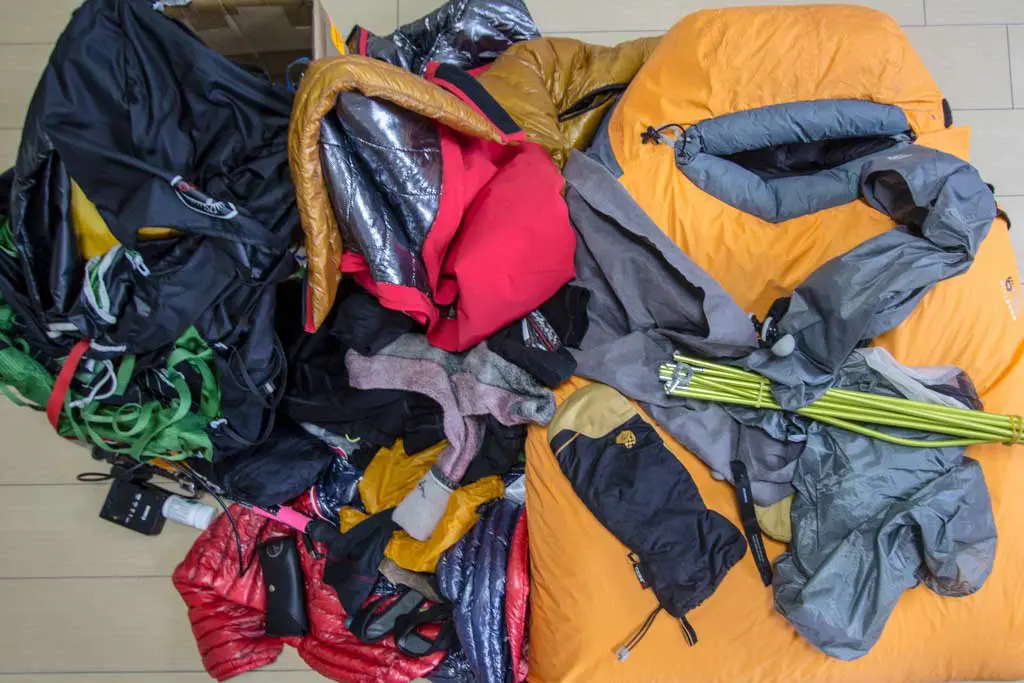
Nepal Three Passes Trek Gear List
Using all I learned last year on my first journey to the Himalayas and up to Everest Base Camp , I have carefully crafted the following gear list detailing everything to go with me on my attempt at completing Nepal’s Three Passes Trek .
Much of what’s coming with me this time around is the gear that came on my trip to Everest Base Camp, but I have made some additions, subtractions, and substitutions from my previous gear list .
The one thing that has taken some deliberation this time around is whether I want to bring micro-spikes with me to assist on the potentially icy passes. Honestly, I still haven’t made up my mind, but I will be sure to update this when I return to let you know what ended up being necessary. Update: I brought microspikes .
If you have any questions, comments, or suggestions (I’m always looking to try new things), leave a comment and let me know!
Notes on Gear
- You do not have to bring a shelter on the Three Passes Trek. There are plenty of tea houses to stay at along the way, and even if they are full, you will (usually) be given a spot to sleep on the ground in one of the common areas. That said, if you do bring a shelter, I recommend the SlingFin Crossbow 2 .
- Blankets are generally available inside tea houses, so some trekkers opt to bring lighter sleeping bags with temperature ratings of as high as 32°F/0°C. However, you will be guaranteed to be a lot more comfortable (and have to deal less with potentially dirty blankets) if you bring yourself a warm sleeping bag to begin with. I recommend the Western Mountaineering Kodiak GWS .
- As is the case with blankets, beds/mattresses are generally provided when you stay inside of a tea house. This means there is not necessarily a need to bring a sleeping pad. However, if you are a fan of sleeping pads, want more options as far as where to sleep, or don’t like to be caught unprepared, bringing one can be advised. I recommend the Therm-a-Rest NeoAir XTherm NXT .
The Big Stuff
- Backpack: Osprey Exos Pro
- Shelter: SlingFin Crossbow 2
- Sleeping Bag: Western Mountaineering Kodiak GWS
- Sleeping Pad: Therm-a-Rest NeoAir XTherm NXT
Worn Clothing
- Top: Ridge Merino Solstice Lightweight Pullover Hoodie
- Shorts: Brooks Sherpa 2-in-1 (5 in)
- Socks: Darn Tough Hiker Micro Crew Midweight
- Shoes: HOKA ONE ONE Speedgoat
- Insoles: SOLE Performance Medium
- Gaiters: UltraGam Gaiters
- Sunglasses: goodr BAMFGs Polarized Sunglasses
- Hat: Montbell Mesh Logo Cap #2
Packed Clothing
- Shell: Arc’teryx Beta
- Insulated Jacket: Katabatic Tincup
- Wind Jacket: Patagonia Houdini
- Balaclava: Ridge Merino Balaclava
- Pants: Outdoor Research Cirque Lite
- Rain Pants: Patagonia Torrentshell 3L
- Base Layer (Top): Ridge Merino Inversion Heavyweight
- Base Layer (Bottom): Ridge Merino Aspect Midweight
- Base Layer (Bottom): Ridge Merino Inversion Heavyweight
- Neck Gaiter: Buff CoolNet UV+
- Head Net: Sea to Summit Head Net
- Gloves: Ridge Merino Glove Liner
- Gloves: The North Face Etip Recycled Gloves
- Socks: Darn Tough Hiker Quarter Midweight
Carried/On-body
- Watch: Garmin fenix 7X Sapphire Solar
- Trekking Poles: Black Diamond Distance Carbon FLZ
- Fanny Pack: Thrupack Summit Bum
- Fanny Pack Strap: Thrupack Comfy Strap
Backpacking Gear
- Water Treatment: Katadyn Steripen Ultra
- Water Bottle: smartwater 1 L x 3
- Water Bottle: smartwater 700 ml
- Utensil: Snow Peak Long Titanium Spork
- Headlamp: BioLite HeadLamp 325
- Satellite Messenger: Garmin inReach Mini 2
- Sleeping Bag Liner: Cumulus Liner GL Wide
- Pillow: NEMO Equipment Fillo Elite
- Traction: Kahtoola MICROspikes Traction System
- Food Bag: Cloud Gear Bear Bag
- Stuff Sack (Sleeping Bag): Hyperlite Mountain Gear Roll-top (Medium)
- Stuff Sack (Clothing): Hyperlite Mountain Gear Drawstring (Large)
- Stuff Sack (Electronics): Hyperlite Mountain Gear Drawstring (Small)
- Pack Liner: Contractor Bag
- Stakes: MSR Carbon Core Tent Stakes x 4
- Stakes: MSR Ground Hog Stakes x 4
- Stuff Sack (Stakes): Hartford Gear Co. Stake Bag
- Stuff Sack (Poop Kit): Space Bear Bags Poop-moji Pouch
- Trowel: Vargo Titanium Dig Dig Tool
- Lip Balm: Sun Bum Mineral SPF 30
- Anti-Chafe Balm : Body Glide for Her (0.35 oz)
- Hand Sanitizer: Dr. Bronner’s Organic
- Sunscreen: Coppertone SPORT (3 oz)
- Toothbrush: GUM Folding
- Toothpaste: Dr. Bronner’s Travel (0.85 oz)
- Antibiotic Ointment: Neosporin
- Tape: 3M Medical
- Bandages: Band-Aids
- Toilet Paper: Charmin Ultra Soft
- Wet Wipes: Sea to Summit Wilderness Wipes
- Ear Plugs: Mack’s Maximum Protection Soft Foam Earplugs
Electronics
- Power Bank: Nitecore Carbo 20000
- Headphones: Pixel Buds Pro
- Phone: Google Pixel 8 Pro
- Phone Case: Peak Design Everyday Case
- Wall Plug: Anker Nano II 65W
- Cable: USB-A to USB-C
- Cable: USB-A to Micro USB
- Cable: USB-C to USB-C
- Garmin Explore
- Peak Finder
- Training Peaks
Camera Gear
- Camera: Sony A7R IV
- Lens: Sony FE 24-70 f2.8 GM
- Filter: Heliopan 82mm Slim Circular Polarizer SH-PMC
- Camera Attachment: Peak Design Capture
- Camera Cover: Peak Design Shell (Medium)
- Camera Skin: Slinger Silicone
- Screen Protector: Sony PCK-LG1 Glass Sheet
- Memory Card: Sony TOUGH-G SDXC (64 GB) x 2
Odds & Ends
- Knife: Benchmade 533 Mini Bugout
- Gear Repair: Therm-a-Rest Patch Kit
- Gear Repair: Gorilla Tape
- Lighter: Mini Bic
- Extra Cap: Water Bottle Sport Cap
- Pen: Pilot G2
- Bags: Ziploc Quart Food Storage
- Bags: Reusable Grocery Bag (plastic)
- Sunglasses Case: goodr Soft Case
- Wallet: Peak Design Mobile Stand Wallet
Fanny Pack Gear
- Anti-Chafe Balm: Body Glide for Her
- Sunscreen: Coppertone SPORT
- Headphones: Google Pixel Buds Pro
Am I doing anything wrong? Did I miss anything? Do you have any suggestions?
Comment below and let me know what you think!
Disclosure: Your trust is important to me and that’s why I only recommend products I love and personally use. This page contains affiliate links which means at no additional cost to you, I may receive small commissions for purchases made via these links. This helps keep the site up and running.
Similar Posts
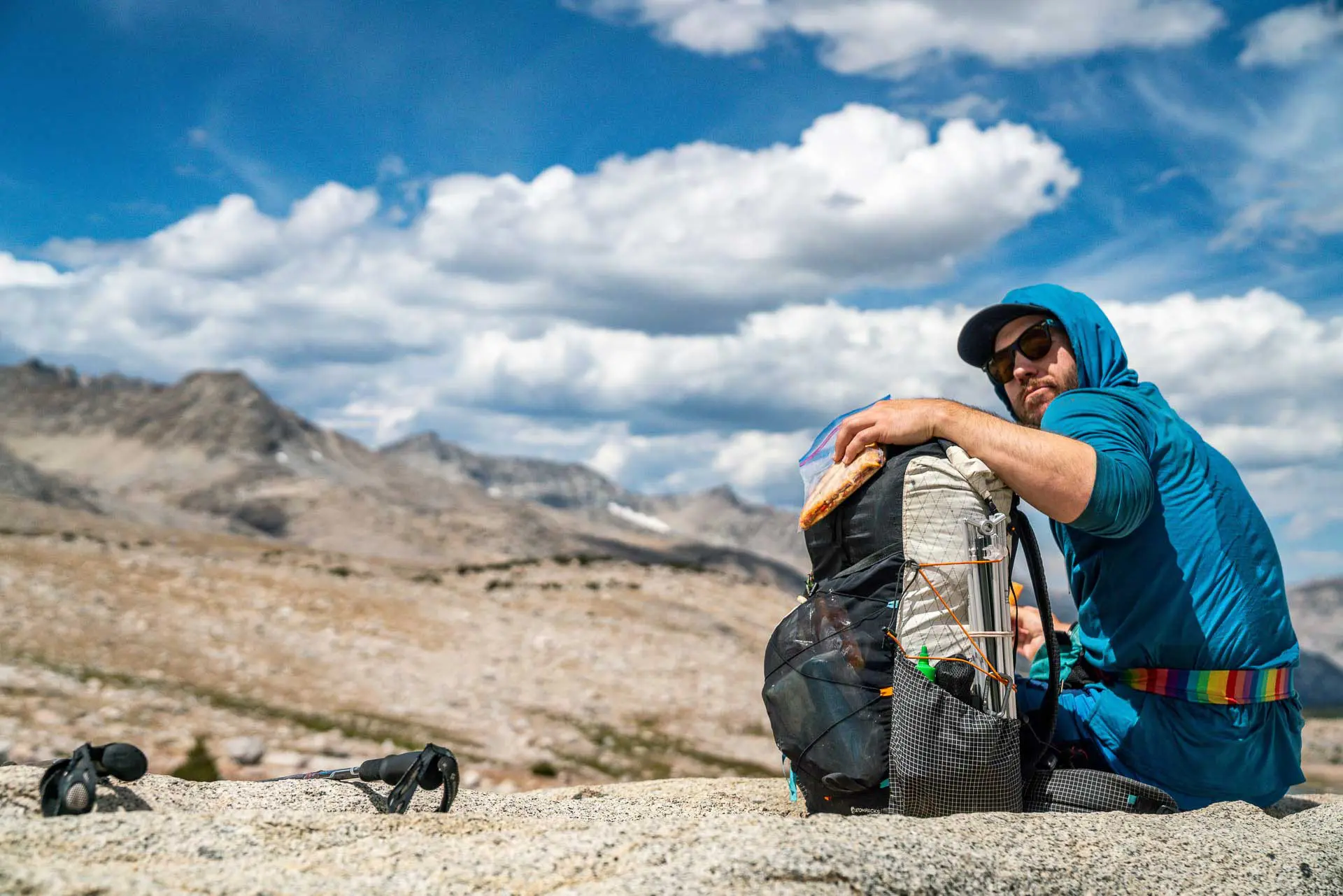
Mac’s Backpacking Gear List 2021 (v1)
I’m hoping to be doing a lot more outdoors in 2021 than I managed to do in 2020 and I’m excited to start trying out…
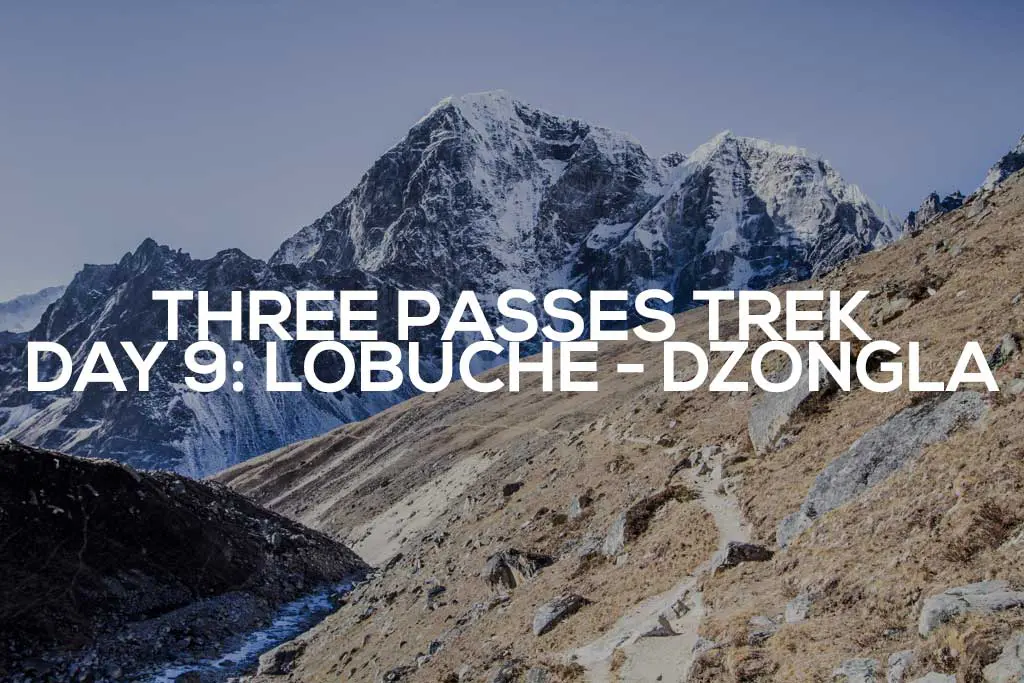
Three Passes Trek Day 9: Lobuche to Dzongla
Last night I ordered the vegetable chow mein for breakfast and the chef didn’t approve (apparently it’s not breakfasty enough a dish to warrant early-morning…

Three Passes Trek Day 10: Cho La (Dzongla to Dragnag)
Cho La Pass, today’s objective, has been built up in my mind as a dangerous and monstrous obstacle – one that should only be attempted…

Nepal’s Three Passes Trek: Renjo La
Renjo La is the westernmost pass of Nepal’s Three Passes Trek in Sagarmatha National Park and is generally considered to be the easiest of the…
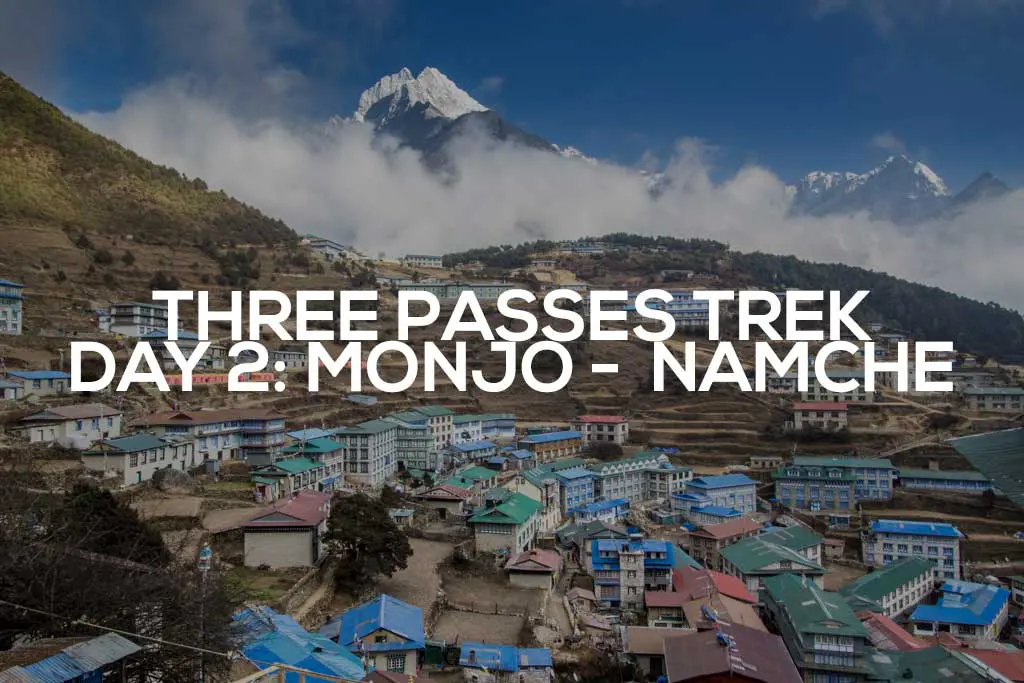
Three Passes Trek Day 2: Monjo to Namche Bazaar
I had forgotten how crazy my dreams are when I sleep at elevation; last night did well to remind me (all I will say is…
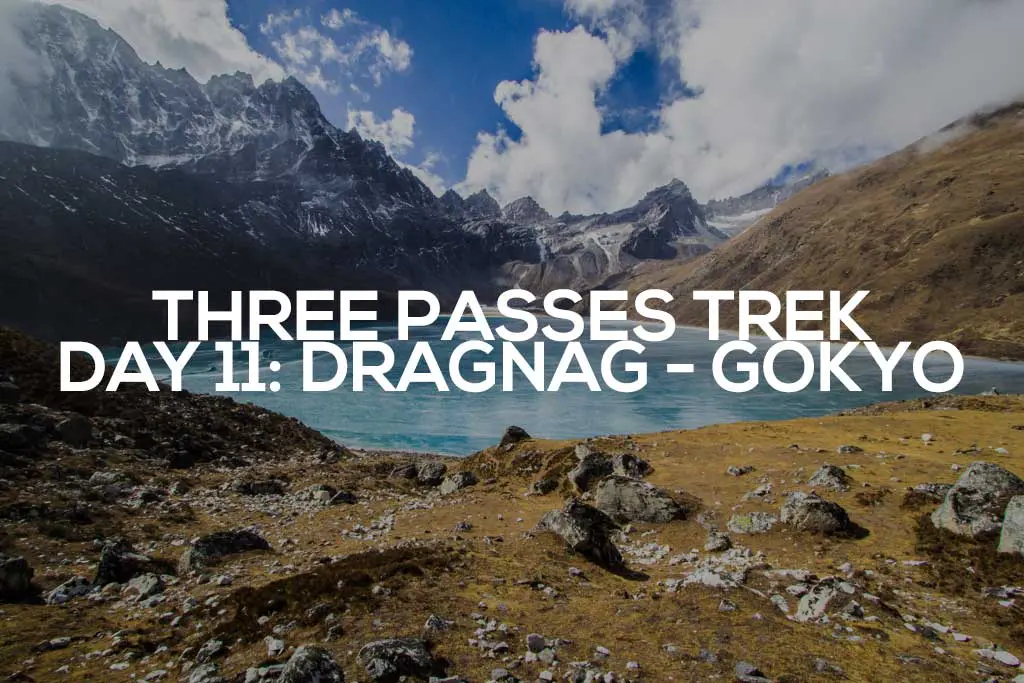
Three Passes Trek Day 11: Dragnag to Gokyo
I wake up and head to the common area for breakfast where I find the lodge-keep asleep behind the bar. It’s already eight o’clock, late…
27 Comments
how did you not wash clothes for the whole 2 weeks? did you not stink? going in October this year so curious about how much clothing to bring etc. thanks
I did not wash my clothes. Merino clothing does an excellent job of not stinking too badly too soon, and the weight of extra clothing is typically easy to drop from a heavy pack when packing.
Merino wool is a wonderful material.
Do you think a 10F rated quilt would be sufficiently warm for this trek? I’m going in November.
I think if you’re sleeping in tea houses and not camping, 10F is fine.
Sorry didn’t see I could post here so reposting … How much would you say your pack / total haul weighed? Thanks
I’ve updated this with more current gear. My pack weighed probably around 20 lb / 9 kg without food/water.
How were the trail shoes on the passes and in the cold? Do you think boots would have been helpful for the 3 passes treck?
I was completely fine with my trail runners. Others may prefer boots. It’s really a personal preference.
Did you end up with using a tent? Was it okay to use a tent in villages?
Zero need for a tent. I set up mine once outside a tea house but it was dumb. Should not have brought a tent. Will be updating this list soon.
Why was it dumb? You just slept outside in your sleeping bag without shelter? Or you slept somewhere else?
I also just slept outside without a shelter, but there was plenty of space inside the tea houses – quite a contrived campsite.
Hi Mac, Did you end up taking the microspikes ? Thanks
I did not take them, but I got some off a hiker just before Cho La – they definitely came in handy. Detailed trip report coming soon!
Thanks. Waiting for the trip report 🙂
How much did your pack/ tote weigh in total would you say ?
Is it too cold for the Ghost Whisperer?
Too cold for just the GW, but I took one of these http://amzn.to/1URWtko with me.
..you wore both columbia jackets at the same time?
It was more of a “one or the other” type situation.
how often did you wash clothes up there?
Hi, i’m wondering for packing my stuff, if you did not wash clothes, how often did you change them ? Which means, how many “Base layer” did you pack ? Thanks !
Wore the same clothes the entire time.
The Nepal Three Passes and EBC trek have completely diffrent weather conditions? I think that’s where I’m confused.
No, they’re in the same area (and some of the treks follow the same route). On the EBC trek I brought the GW and an additional (thicker) down jacket as well.
Leave a Reply Cancel reply
Your email address will not be published. Required fields are marked *
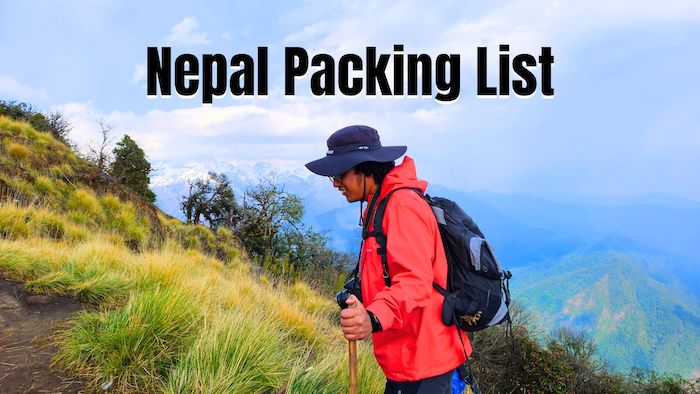
Nepal Packing List: The Essential Checklist for Traveling & Trekking
- May 8, 2023
Nepal is a popular travel destination for adventure seekers, trekkers, and nature lovers. With its diverse landscapes, ranging from snow-capped mountains to the scorching lowlands of the Terai, Nepal offers a unique and unforgettable experience for travelers. However, to make the most of your trip, it is important to pack appropriately for the adventure that awaits you.
In this article, I’ll cover all the essential items you’ll need for the best packing list for Nepal (including trekking!)
The Best Packing List for Nepal:
Deciding to go to Nepal can be an exciting but scary decision! Nepal is a diverse country that can push you to your limits, depending on how comfortable you are with the unknown. Speaking from experience (I have been an expat living in Nepal for five years ), I remember the first time I was packing for my trip to Nepal – I had no idea what I would need to live there or for trekking!
Luckily, Nepal has improved its access to goods, with shops importing trekking gear, clothes, toiletries, and everything else you could need. These include clothes, shoes, food, electronics, and everything else. The one thing you should be conscious about, however, is that many of the name brands that you may be used to are not available here (or you will find cheap copies).
Therefore, if you are particular about what you need and want while traveling in Nepal, you may want to bring your own products. In this regard, I have created the following packing list for Nepal!
Packing List Clothes/Shoes
- 1x thermal underwear
- 2x breathable t-shirt
- 2x breathable long sleeve
- 1x thermal long sleeve
- Normal T-shirts/Tops
- 1x Fleece/Warm Sweater
- Light sweater
- 2x trekking pants
- 1x cover rain pants
- 2x Light long pants
- 2x Lightweight shorts
- 1x rain jacket (waterproof and windproof, Goretex)
- 1x down jacket
- 1x warm cap
- 1x gloves thick
- Comfortable walking shoes
- Lightweight hiking boots (Check out our Best hiking boots for under 100 !)
- Sandals or flip flops
- Warm woolen socks (2-3 pairs)
- Moisture-wicking hiking socks (3-4 pairs)
- Warm beanie
- Swimwear (swimsuit/bikini/swim trunks)
Note: you can find all of these items in Thamel and Pokhara. Pokhara will be more expensive than Thamel, to shop at. Also, finding things that fit you well will be challenging if you are taller (over 6 feet) or have larger feet (over size 10 US).
Checklist Travel Documents:
This packing list covers the things that you will need to have before arriving in Nepal.
- Visa (Most travelers can get visas on arrival in Nepal )
- Travel insurance (If you are trekking in Nepal, you will need trekking insurance !)
- Money (At least enough USD to pay for your visa at the airport)
- Vaccinations
Electronics Checklist:

- An adaptor/converter (two-pin plugs are mostly used in Nepal)
- Phone (for photos and to get a sim card. Sim cards are easy to get and extremely cheap; I strongly recommend getting one for your trip to Nepal)
Toiletries Checklist for Nepal:
All of these items can be found in most stores in Nepal. The particular brand may be difficult or expensive to get. So if you are particular about what you are using, make sure to bring them with you.
- Dental floss
- Face lotion
- Shower gel/soap
- Shampoo/conditioner
- Toilet paper
- Wet wipes (compostable)
- Lip protection with UV protection
- Hygiene articles
Checklist First Aid Kit
- Disinfectant wipes
- Painkillers (e.g., ibuprofen, aspirin)
- Tablets against altitude sickness (e.g., Diamox)
- Diarrhea medication (e.g., Imodium Akut, charcoal tablets)
- Plasters and blister plasters
- Water filter or iodine disinfection tablets
Personal Comfort Checklist:
I would say everything on this list is optional, as you can easily find cheap alternatives in Nepal – pretty stylish options as well! The only thing you may consider bringing would be personal snacks and candy! It is extremely hard to find some of your favorites (It’s impossible for me to find Reeses and Clif Bars – two of my favs!)
- Earplugs/Ohropax
- Books/Magazines
- Headgear/Cap
- Travel pillow
- Card games, board games, frisbee, ball,
- Microfiber towel
- Personal snacks and candy
Packing List for Trekking in Nepal:
Depending on the trek you decide to go on, you will need to pack different things. This is because some treks are well-defined and have tea houses with everything you could need. However, less-known others will have limited amenities to keep you comfortable. I recommend checking your trekking itinerary and seeing what kind of amenities they have.
- Sleeping bag (up to -10 °C, optional)
- Trekking Backpack / Duffel Bag 50-90 liters (max. 15 kg | for the carrier)
- Daypack 30-35 liters (for you and what you need during the day)
- 3-liter water pack (type: Camelbak)
- Pocket knife
- Optional: Backpack cover
- Optional: Dry bags or bags to keep the equipment dry
Understanding the Seasons in Nepal
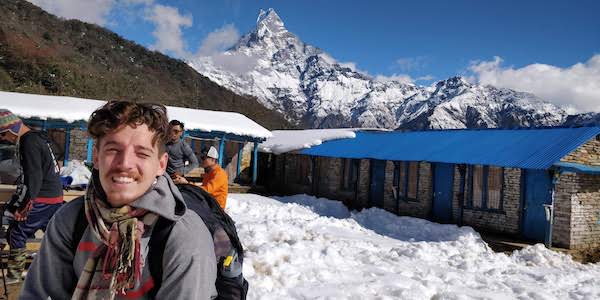
Understanding the seasons in Nepal is crucial for anyone planning a trekking or backpacking trip . Nepal has a diverse topography and a wide range of climatic conditions that vary significantly throughout the year, impacting what you decide to pack for your trip. Knowing the seasons in Nepal can help trekkers make the best packing list to ensure they are equipped to handle the climate and terrain they will encounter during their journey.
Nepal has four distinct seasons, and each season has unique weather conditions that can affect what you should pack. Below are the different seasons and what you can expect during those months:
- Spring (March to May): This is a popular season for trekking in Nepal . During this time, the temperature is relatively mild, with clear skies and stunning views of the Himalayas. The forests are lush, and the flowers bloom, making it an ideal time for nature lovers. However, the trails can be crowded, and trekkers should be prepared for occasional rainfall.
- Summer (June to August): This is the monsoon season in Nepal. Heavy rainfall is common during this period, and the trails can become muddy and slippery. Trekking can be challenging as well due to the high humidity, leeches, and the risk of landslides.
- Autumn (September to November): This is the second most popular trekking season in Nepal. The weather is clear, dry, and cool, making it an ideal time for trekking. The skies are often crystal clear, offering breathtaking views of the Himalayan peaks. However, the trails can be crowded in this period, and trekkers should be prepared for colder temperatures at higher elevations.
- Winter (December to February): By far the coldest season in Nepal, the weather can be harsh, with heavy snowfall and biting winds. Trekking can be challenging in the winter season, but it can also be rewarding for professional trekkers who want to experience the unique beauty of the winter landscape. Just make sure to pack warm!
Buying Equipment and Gear in Kathmandu
Kathmandu, the capital of Nepal, is a paradise for trekkers and adventure enthusiasts from all around the world. It is not just a hub for some of the best trekking routes in the world but also a hub for buying and renting trekking gear. Everything from tents, sleeping bags, hiking boots, jackets, and trekking poles can be found in Thamel (the country’s main tourist hub).
Buying and renting trekking gear in Kathmandu is a convenient and cost-effective option for trekkers. It is a great way to save on baggage fees, especially for budget travelers. Bringing heavy and bulky gear from home can also be a hassle, and there’s no guarantee that it will meet the demands of the trek.
Numerous shops in Kathmandu cater to trekking gear, and most offer a variety of brands and quality products. The prices for buying trekking equipment are very reasonable in Kathmandu. Trekkers can expect to pay significantly less than they would in their home countries for similar gear. It’s worth noting that many stores are willing to negotiate prices, so it’s always worth trying to haggle.
Just remember that some items you see will be duplicates or knockoffs. Some of the higher-end brands may be difficult to find. So make sure to check the items closely if you are going after name-brand high-end items.
But, if you are ok with any brand and just need something for the trek, then you can feel confident that you will find some great cheap options for your trip!
Key takeaway: How to Pack for Nepal
Packing for a trip to Nepal requires careful consideration of the weather, terrain, and activities you plan to do. It’s important to pack light and bring only what you need to make your journey comfortable and enjoyable. You can also take a look at our backpacking checklist to help you pack light, and only carry the necessities while trekking through Nepal!
Remember to pack clothing and accessories suitable for the season, personal items for hygiene and first aid, and essential gear for trekking and outdoor activities. With the right packing list, you can have a successful and unforgettable trip to Nepal.
FAQs: Packing List for Nepal Trekking
Below are some of the most frequently asked questions regarding how to pack for a trekking trip in Nepal.
When packing, opt for lightweight clothes made of fast-drying fabric that offer good breathability. Make sure to wear comfortable shoes, preferably ones that you have already broken in. Additionally, bring a hat and sunglasses to shield yourself from the sun. Remember to pack small essentials such as gloves, a fleece hat, sun cream, and a microfiber towel.
Warm clothing in Nepal includes wearing a woolen jumper, fleece or loose trousers, gloves, thick socks, windproof and waterproof jackets, track pants, and good walking boots that provide ankle support. Carrying a sleeping bag, sun hat, and sunglasses is also advisable. During the winter season, wearing down jackets and extra warm clothing such as thermals is suggested.
You should take a backpack or duffle bag to Nepal. It is best to avoid bringing large suitcases as they tend to get tossed around while traveling in Nepal. In case porters need to carry your bags, soft bags with carrying straps are much more practical.
Leave a Reply Cancel Reply
Your email address will not be published. Required fields are marked *
Add Comment *
Save my name, email, and website in this browser for the next time I comment.
Post Comment

Trek Me Nepal

MOST POPULAR PACKAGES HANDPICKED TRAVEL FOR YOU
Nepal’s Popular Handpicked Travel Itineraries Curated by Our Trek Me Nepal Experts.
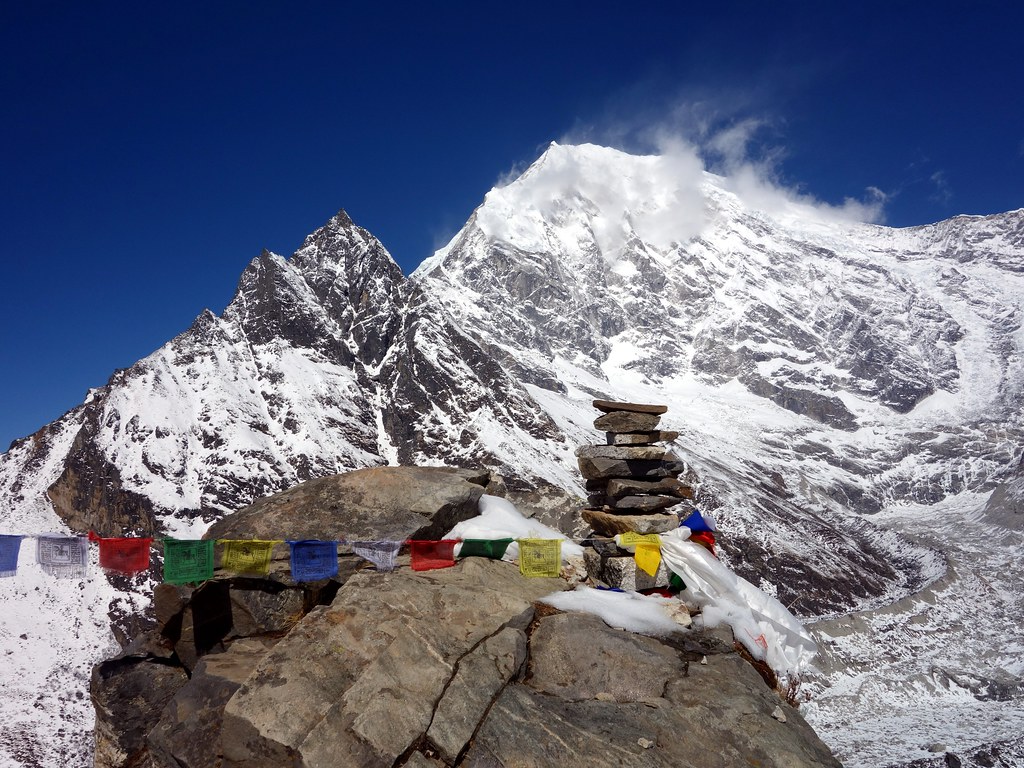
Langtang Region
- Langtang National Park, Nepal’s first Himalayan park,
- Langtang regions offers stunning views of snow-capped peaks.
- Gosainkunda Lake is a sacred pilgrimage site.
- The Tamang Heritage Trail a cultural trekking route
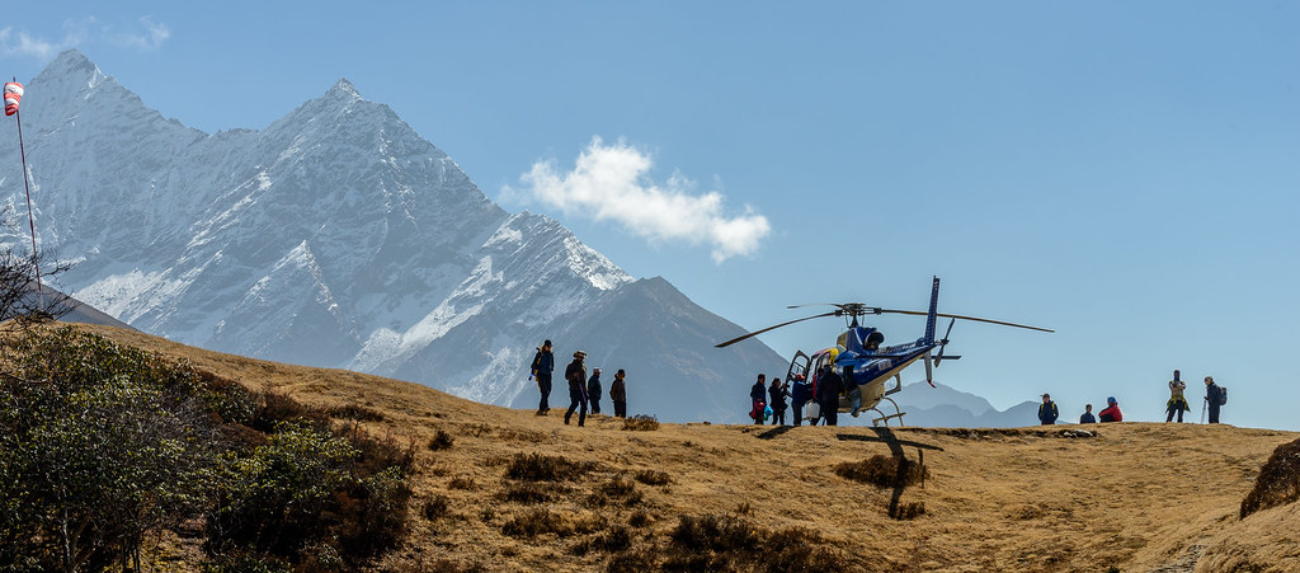
Everest Region
- Mount Everest, the world’s highest peak
- Everest Base Camp Trek is a renowned trekking route
- Namche Bazaar, a Sherpa town at 3,440 meters
- Sagarmatha National Park is home to rare species and bird species.
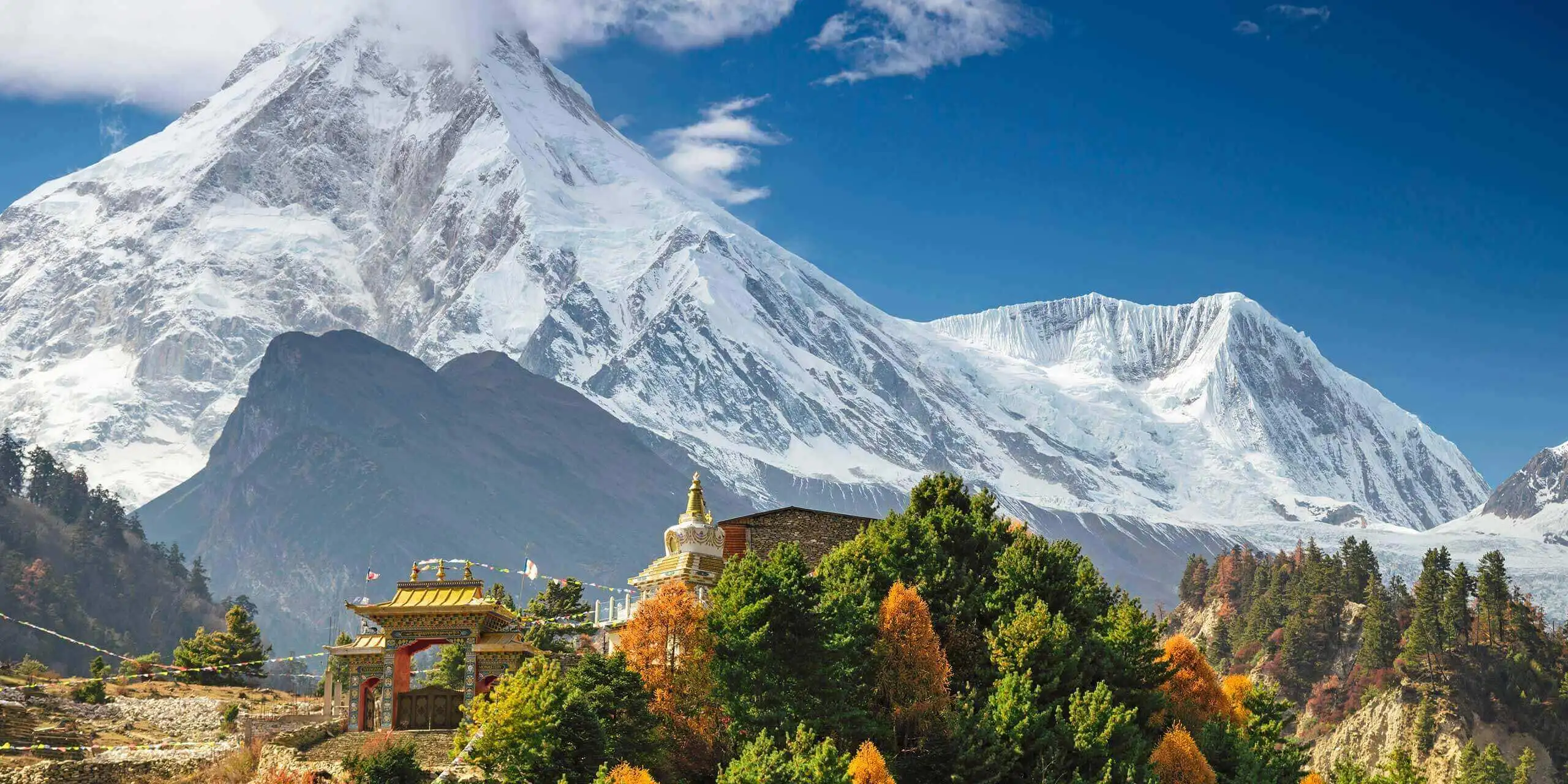
Manaslu Region
- The Manaslu Circuit Trek is a challenging yet rewarding journey.
- Breathtaking beauty and panoramic views.
- Tsum Valley, a hidden Himalayan gem,
- Larkya La Pass, a world-high mountain pass
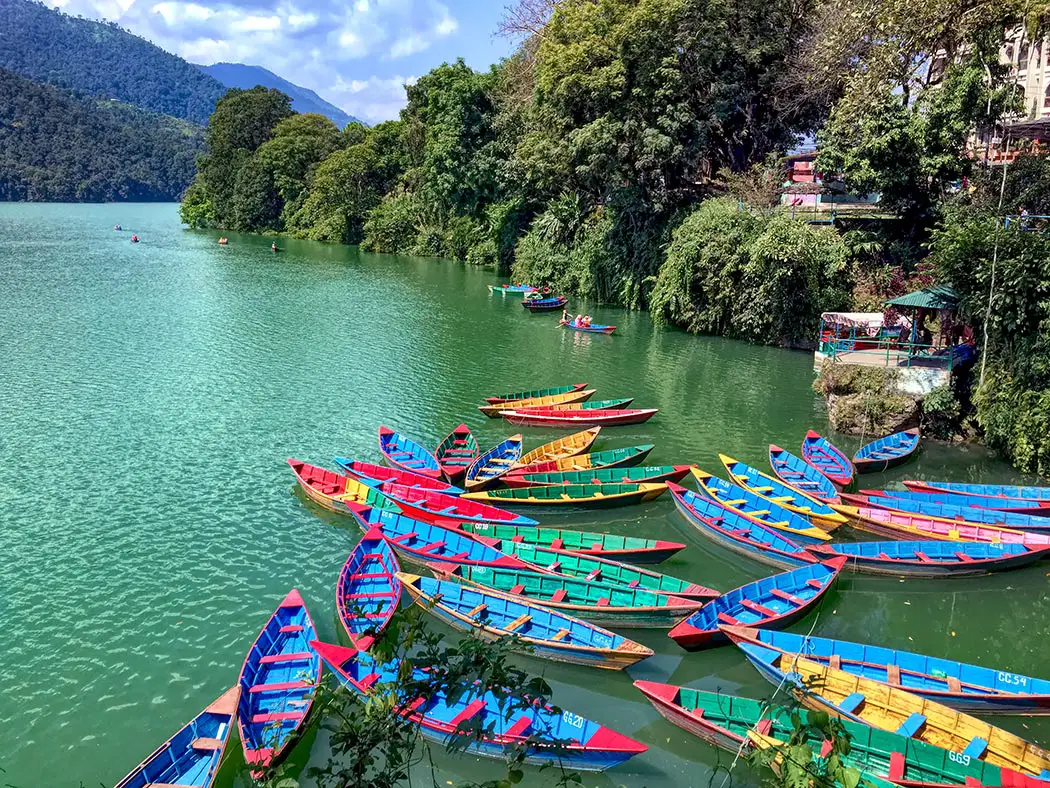
Luxury Trek & Tour
- Full of upscale lodges and boutique hotels.
- Feature gourmet dining experiences,
- Knowledgeable guides and support staff,
- private transportation to and from trailheads,
- customized itineraries, catering to travelers’ interests.

Annapurna Region
- The Annapurna Circuit Trek is a globally recognized trekking route.
- Trek to the base of the majestic Mt. Annapurna
- Soaking in therapeutic mineral-rich waters.
- Muktinath Temple, dedicated to Lord Vishnu
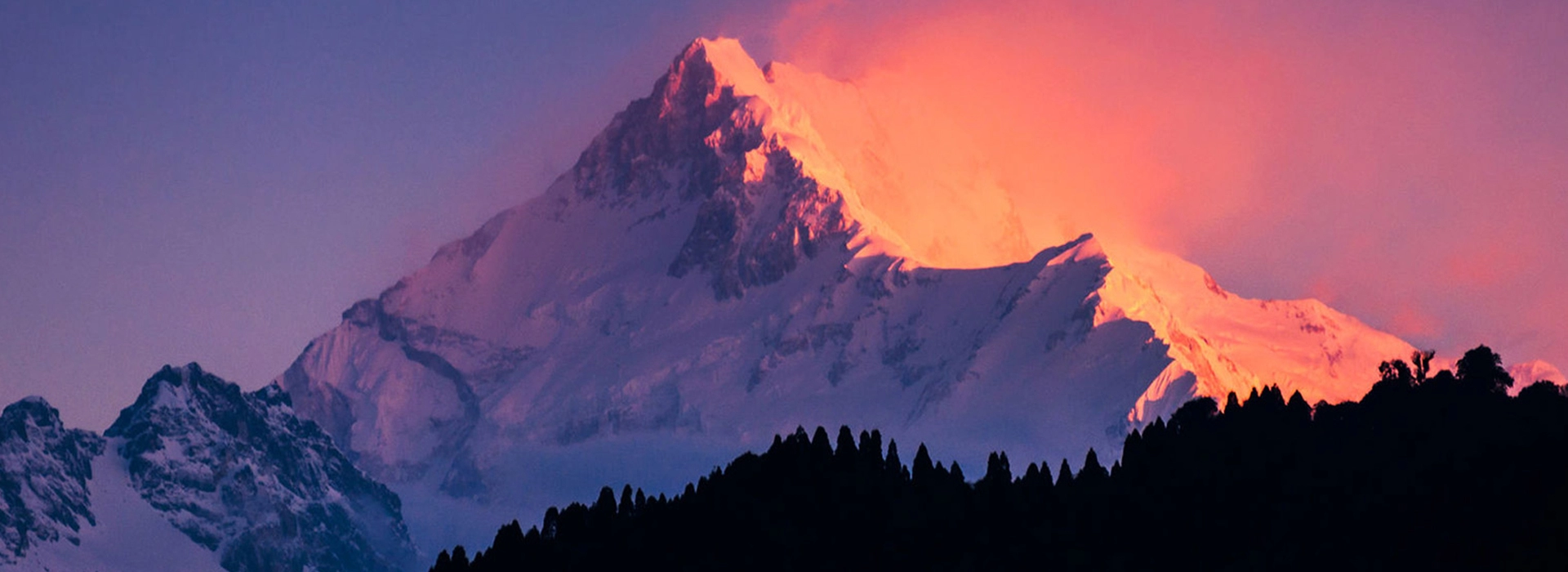
Off The Beaten Trails
- Many lesser-known paths remain underexplored by trekkers, found in remote regions with stunning scenery and diverse terrain.
- It promise incredibly rewarding experiences due to their isolated and pristine nature.
SEE WHAT OUR GUESTS ARE SAYING
Discover why our guests rave about their experiences with us. Dive into their stories and feedback to learn more about what makes Trek Me Nepal products & service exceptional.
My Ghorepani Poon Hill Trek with Trek Me Nepal was truly remarkable! Their professionalism and care made the journey unforgettable. The sunrise view from Poon Hill was breathtaking, and the well-maintained trail showcased stunning landscapes. The comfortable accommodations, delicious meals, and knowledgeable guides added to the overall exceptional experience. Highly recommended!
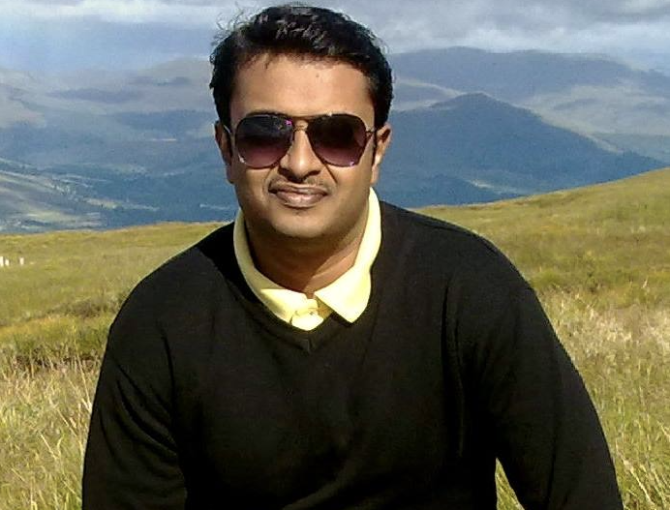
I have been to Nepal twice, for ABC in 2018 and EBC in 2023. I went with @Bipin Thapa as our guide. my second trip team are also thankful and glad to have him as the guide. Trek Me Nepal is still new but Bipin has been a guide for long (y) He didn't talk so much but he took care and observed us well on how AMS creeping in us. Also all arrangements were done well. Highly recommended
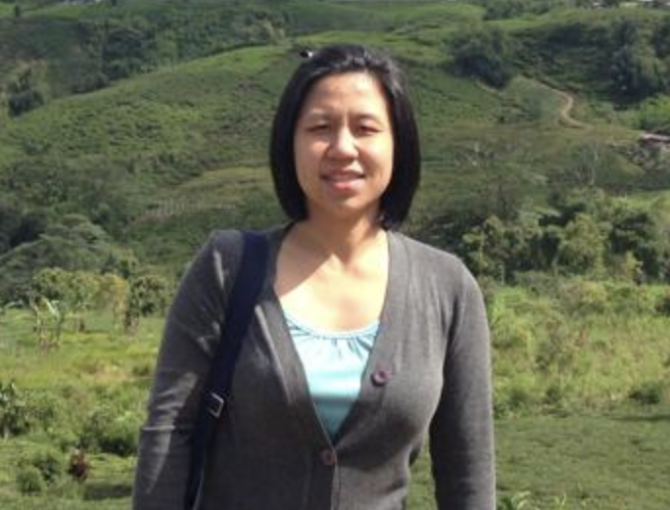
The Khopra Dada Trek exceeded all my expectations!The trail offered a perfect balance of natural beauty and cultural immersion. Highly recommend this trek to all adventure enthusiasts!
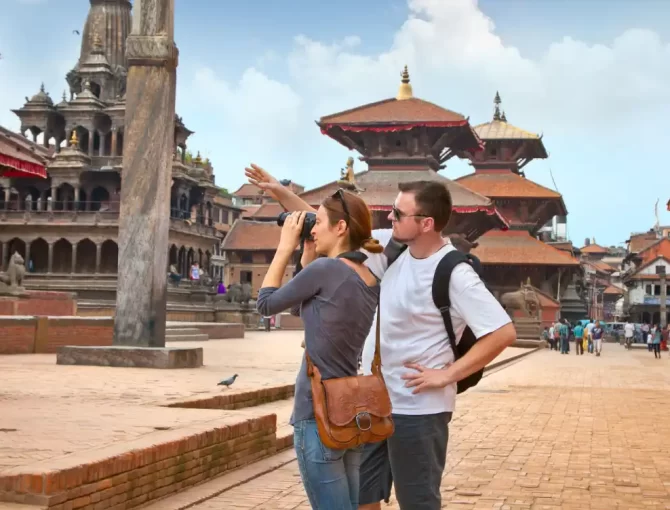
We went to Nepal on our honeymoon, and Bipin was our guide during our trekking in the Himalayas. We were very lucky to have had him, because he was absolutely professional, thoughtful, and nice. He guided us safely and carefully through the mountains, and his experience and professionalism allowed us to have a wonderful trip! As we are not experienced trekkers, I was worried that the level of the trek would be too hard and that would make our whole adventure too difficult,however our entire trip ended up being a once-in-a-lifetime, superb experience!

LEADING TOUR LOCATION
We offer a range of tour options, including cultural, luxury, wildlife, pilgrimage, day trips, and climbing and expeditions. These options cater to various interests and preferences, ensuring unforgettable experiences in the Himalayas, with personalized services.
Luxury Treks & Tour
Cultural tour and sightseeing, climbing and expedition, nepal cultural tours, extension tours.
Our Trekking Leaders boast decades of experience in the industry. They possess intimate familiarity with the routes and are well-prepared to handle any situation with confidence. Having led numerous expeditions, guided trekkers, and supported climbers in the Himalayas, they have acquired extensive knowledge of mountain environments, acclimatization techniques, and safety protocols. Their dedication makes them indispensable coaches in high-altitude adventure tourism.
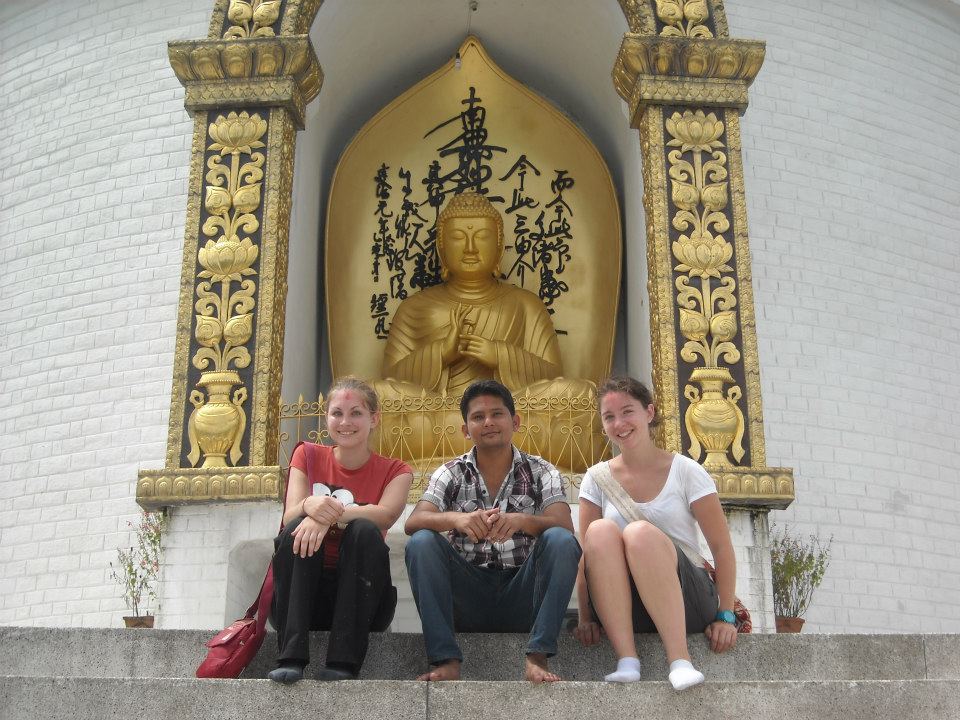
Subash Mainali
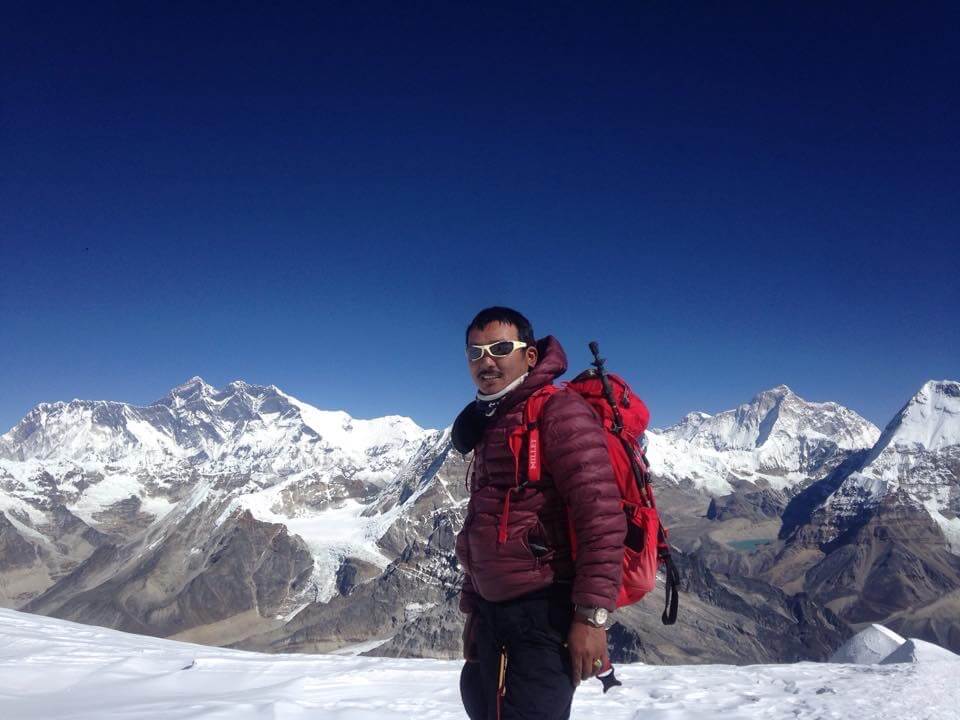
Sonam Sherpa
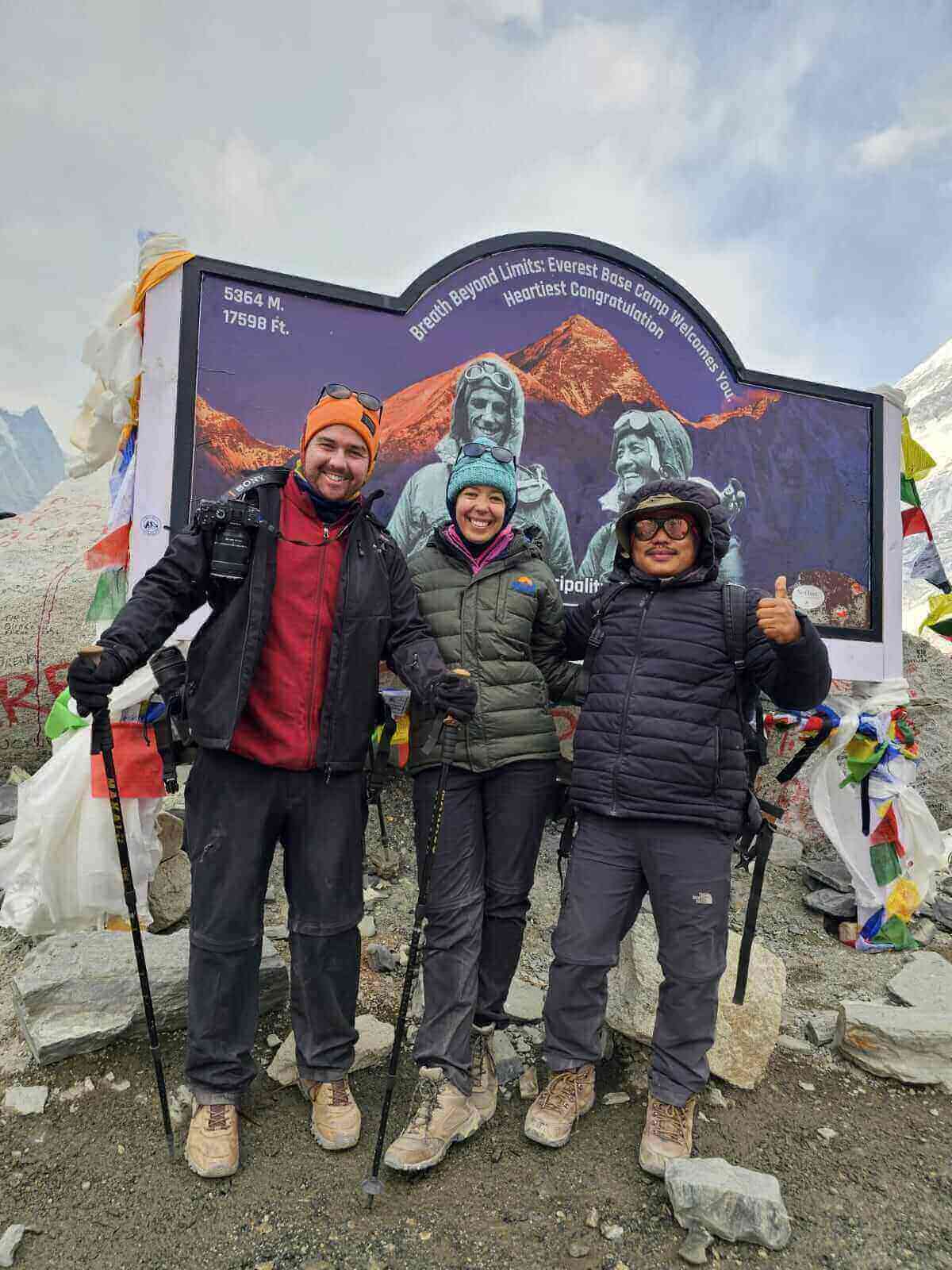
Mun Bahadur Ale
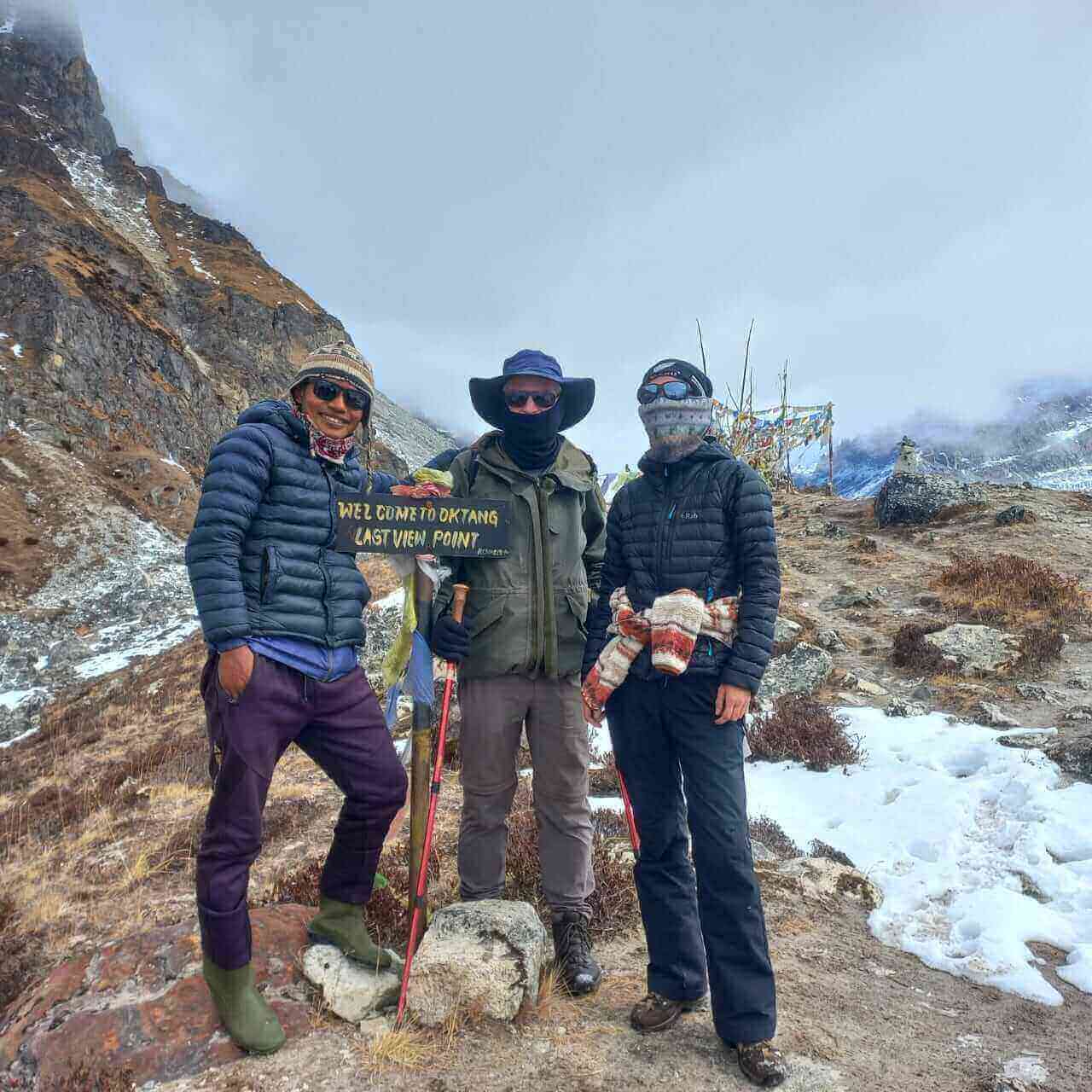
Jaya Bahadur Tamang
Upcoming departures.
Embark on Extraordinary Journeys with Upcoming Departures!

General Booking #Product
Frequently asked questions, how many tourists visit nepal each year, how safe is nepal for tourists, what are the main attractions in nepal, how do i get my visa for nepal, when's the best time of the year to visit nepal, what's the difference between private and group trips, are hotels included in the trip price.
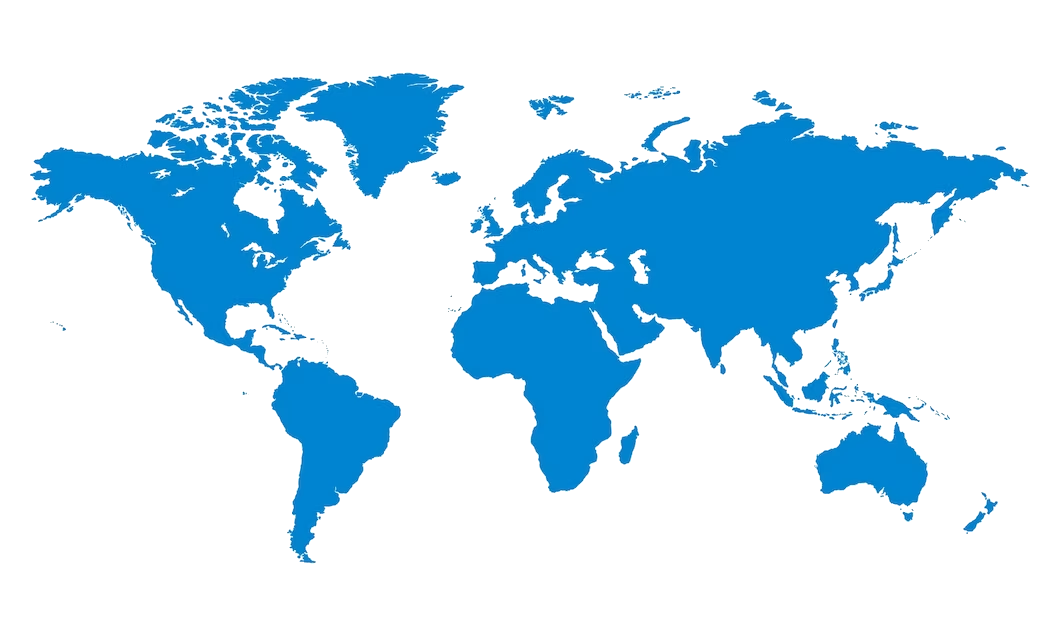
SPEAK TO AN EXPERT
Our expert guides will lead you on a journey of a lifetime, ensuring safety and creating memories to cherish. Experience the magic of Nepal with Trek Me Nepal today!
- Czech Republic

Bipin Thapa

WhatsApp 9841782705

Dhiraj Kandel
WhatsApp 9851273832

Prakash Regmi
WhatsApp 9851361788

Ashok Sharma
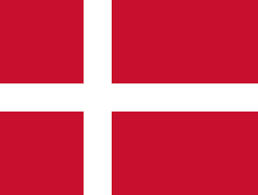
WhatsApp +4542343132
Namita Uprety
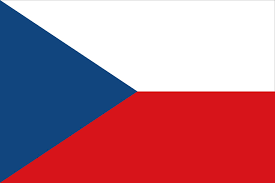
WhatsApp +420732624909
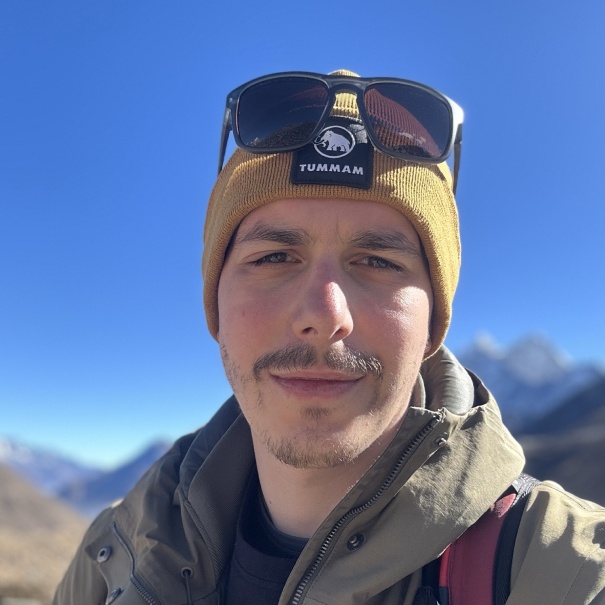
WhatsApp +48604505312

Mahendra Kandel
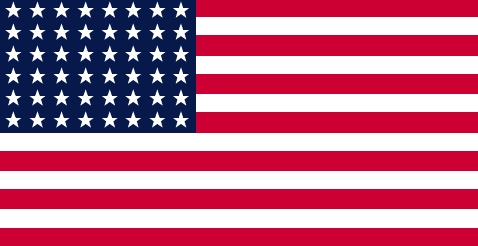
WhatsApp +15713939336
LATEST BLOGS & ARTICLES
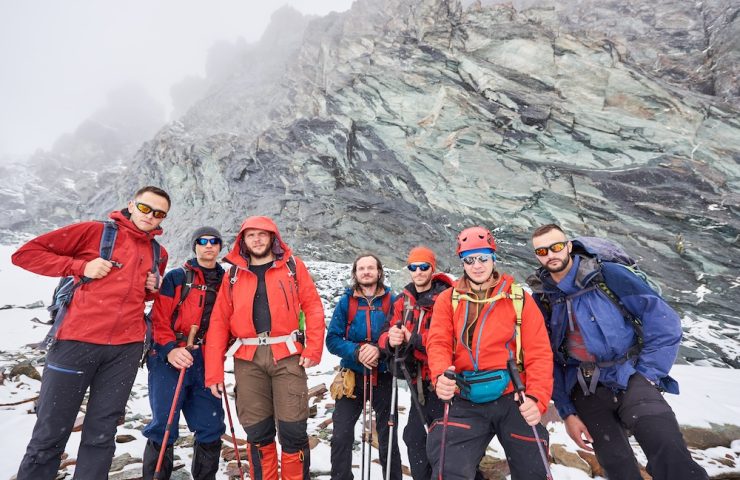
How Many Tourists Visit Nepal Each Year? Comprehensive Nepal Tourism Statistics and Trends 2024
29 Jul, 2024
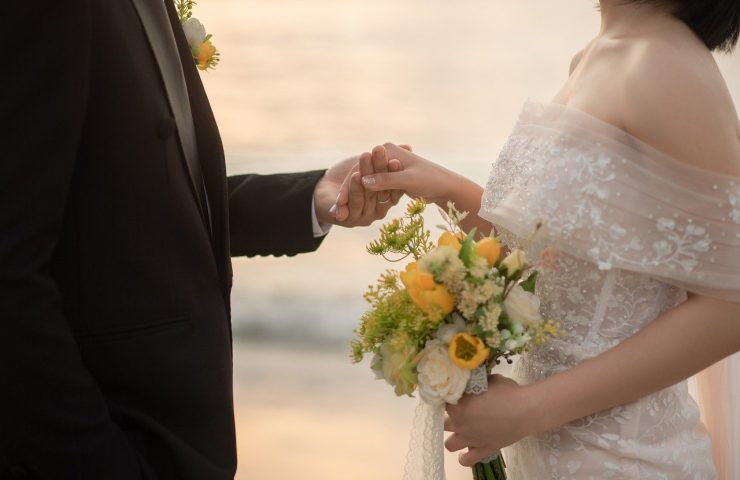
Ideal Himalayan Destinations for Stunning Pre-wedding Photoshoots
30 Jun, 2024
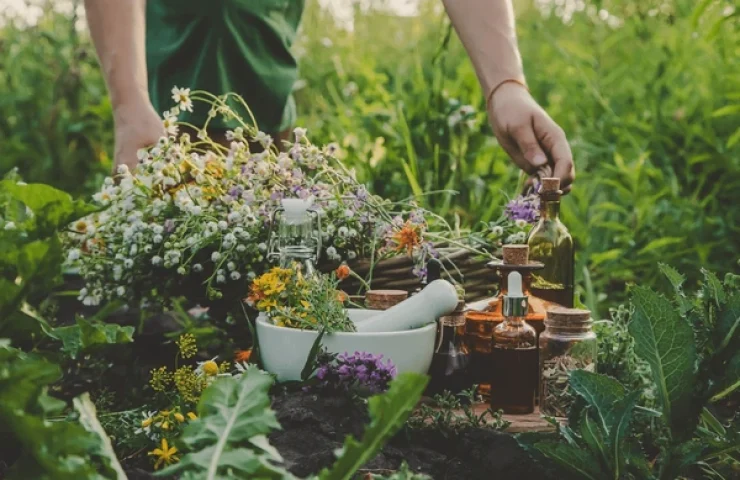
Top 5 Medicinal Plants Of Nepal Every Trekkers Should Know
- Queens Digital: Digital Marketing Agency in Nepal
or continue with
Enter the e-mail address associated with the account. We'll e-mail a link to reset your password.

The 10 Best Treks in Nepal’s Majestic Mountains 2024


IMAGES
COMMENTS
Buy online trekking, camping, climbing, hiking equipment at trekkinggearnepal.com The widest range of trekking gear in Nepal at best prices. Genuine gears only at trekking gear nepal. Best price for trekking gear in nepal. Same day express delivery for trekking gear items. Best place to buy trekking gear items in Nepal
The types of clothing to buy for trekking in Nepal are:; Base layers: dry-fit t-shirts, Quick-drying thermals made from merino wool or synthetic fabrics(top and bottom).; Midlayers: fleece jackets, windproof/waterproof trousers (Gore-Tex or similar); Outer layer: insulated jackets, down jackets, windproof/waterproof jackets; Trekking pants: convertible trousers with zip-off legs.
1 Fleece jacket - Warmer than down when damp and better to hike in. 1 Pair hiking pants. 1 Pair hiking shorts - Nike dri fit running shorts. 1-2 Hiking t-shirts - Nike dri fit t-shirts. 1 Long-sleeve shirt - Nike dri fit quarter zip. 1-3 Pair underwear - ExOfficio boxer briefs.
So, you need to pack a sweater, fleece jacket, woolen trousers, gloves, thick and light socks, down jacket, wind and waterproof jacket, tracksuits, and hiking boots with ankle support. While trekking in Nepal you need to be dressed properly. You need to adjust with the changing environment, altitudes and seasons.
Most of the shopkeepers will tell you if the product you are considering is genuine, fake or Nepali brand but this cannot be guaranteed so keep this in mind when shopping for such items. One trekking shop that does offer a very good selection of trekking equipment at fair/fixed prices is Kala Pattar in Thamel (tel: 984 126 3414). The owner, Mr ...
The key to dressing for a trek in Nepal is to layer your clothing. This way you can easily and swiftly adapt to any changes in weather and temperature. There can be warm days on a Himalayan trek too! We find it helpful to think of your high-altitude trekking clothing as falling into three layers: Base layer. Mid layer.
They can significantly improve your trekking experience, especially on uneven terrains. Renting trekking poles could be roughly $1 to $2 per day for a pair. Note: In addition to sleeping ...
In this article, we will explore the essential trekking gear and clothing for trekking in Nepal Himalaya. Trekking Boots: Trekking boots are one of the most important pieces of gear for trekking in Nepal. The rugged terrain, steep inclines, and unpredictable weather conditions demand durable and comfortable boots that provide ample support and ...
On some of Nepal's treks, you might also be trekking in the dark (for example at Poon Hill on the ABC Trek or on the Thorong La Pass on the Annapurna Circuit Trek) and it is important to have a head torch for these days, so you can see the path. TAKE ME THERE: EXPERIENCE EVEREST BASE CAMP ON THIS 15-DAY FAVOURITE. Cash securely stored
Trekking shorts; T-Shirts (lightweight wool is great) Underwear *You will be hiking through a wide range of terrain from mud in warm weather to snow in cold weather. The trail will be rocky throughout. The safest bet for Nepal trekking footwear is full backpacking boots, which provide good support and protection from the elements. If there is a ...
Shorts are suitable clothing for trekking in Nepal in the warmer days and at lower altitudes. You can layer leggings or thermals under shorts. Don't forget to use sunscreen, the UV is fierce. If you plan on visiting Nepal with kids and taking them on a trek, think long and hard about wether or not they should carry a pack. We didn't expect ...
Clothing. Trekkers usually wear clothes in different layers for trekking in Nepal. This concept is also called Layering. Basically, you wear layers of clothes of different fabrics and materials, one on top of the other. Layering helps to allow the moisture to allow from the inner layer to the outer layer.
Trekking in Nepal ranges from approximately USD $30 to US$100 per day per person. This range is for the more inexpensive treks, where the expensive treks in the Everest region can cost $100-$200 per day per person. This ultimate guide to trekking in Nepal will tell you everything there is to know about trekking routes, seasons, safety, gear and ...
Here is the Nepal trekking packing list is a general guideline for climbing, high land treks and low land treks. You can use this list as a guide. ... It is essential to carry correct clothing and equipment while trekking in Nepal. Correct clothing and carrying essential equipment are very important for a safe and enjoyable trek.
Lined trousers: usually have a warm fleece lining. Windproof trousers: hard feeling material that blocks out the wind. Lightweight trousers: very light weight with no warmth but good in the sun and can usually be zipped off into shorts. There's a large range of trekking trousers available in Nepal.
The necessary equipment and clothing for Nepal trekking are given below. Clothing: Lightweight walking boots and spare laces. A pair of sneakers to wear in the camp at night or in case your boots are wet. Warm jackets: fiberfill or down should be adequate. This kind of jacket is essential during the winter months, from December to February.
The telephone number of Shonas Alpine is +977 984 3688910. We wanted gear that wasn't going to break the bank, that would last the trek, and that we could donate to our Porters when we were finished and Shona's ticked all the boxes for us. We arrived in Kathmandu by way of Kakarvitta and you can read about that here.
Take at least 3 pairs for a two week trek. Also pack a thick, warm pair of ski socks to keep your toes warm when you arrive at camp. 11. Sandals: Most people appreciate being able to remove their boots at the end of the day and put on some sandals (with or without thick ski socks depending on how cold it is). 12.
Clothing for Trekking. clothing for Trek. We would like to suggest you to take following clothing and equipment for trekking in Nepal. Lightweight walking boots. If new one is being bought, "walk then in" to avoid blisters. Also bring spare laces. A good sleeping bag ( Down) A Pair of track shoes. To wear in the camp at night or when the ...
This can be the start of the second most popular trekking season in Nepal. If your trek runs from late February into March then you may get completely rain free warm days and cool nights with good clear views. Early rains are usually light which kick start the spring blooms. For the most part at 2,000m expect day time temperatures of 20 ...
Merino clothing does an excellent job of not stinking too badly too soon, and the weight of extra clothing is typically easy to drop from a heavy pack when packing. ... The Nepal Three Passes and EBC trek have completely diffrent weather conditions? I think that's where I'm confused. Reply. Mac says: April 14, 2016 at 02:06.
Sleeping bag (up to -10 °C, optional) Trekking Backpack / Duffel Bag 50-90 liters (max. 15 kg | for the carrier) Daypack 30-35 liters (for you and what you need during the day) 3-liter water pack (type: Camelbak) Pocket knife. Optional: Backpack cover. Optional: Dry bags or bags to keep the equipment dry.
Langtang National Park, Nepal's first Himalayan park, Langtang regions offers stunning views of snow-capped peaks. Gosainkunda Lake is a sacred pilgrimage site. The Tamang Heritage Trail a cultural trekking route. The Annapurna Circuit Trek is a globally recognized trekking route. Trek to the base of the majestic Mt. Annapurna.
New Sticky Thread for posters to add their recent Nepal trip / trek reports. Nepal Destination Experts. NPLGUY. 2,662 forum posts. into-thin-air. 8,005 forum posts. rongpuk. 8,303 forum posts. Members who are knowledgeable about this destination and volunteer their time to answer travelers' questions.
The 10 Best Treks in Nepal's Majestic Mountains 2024. Story by Katie Hollamby • 6mo. 1 / 12 ... Nepal is a land of unparalleled natural beauty and a haven for trekkers. From the iconic Everest ...
Shops and stalls sell everything from big wheels of yak cheese to perfumes, shawls from Nepal, carpets from India, handmade sweets and dried meats, prayer bowls and other religious paraphernalia.